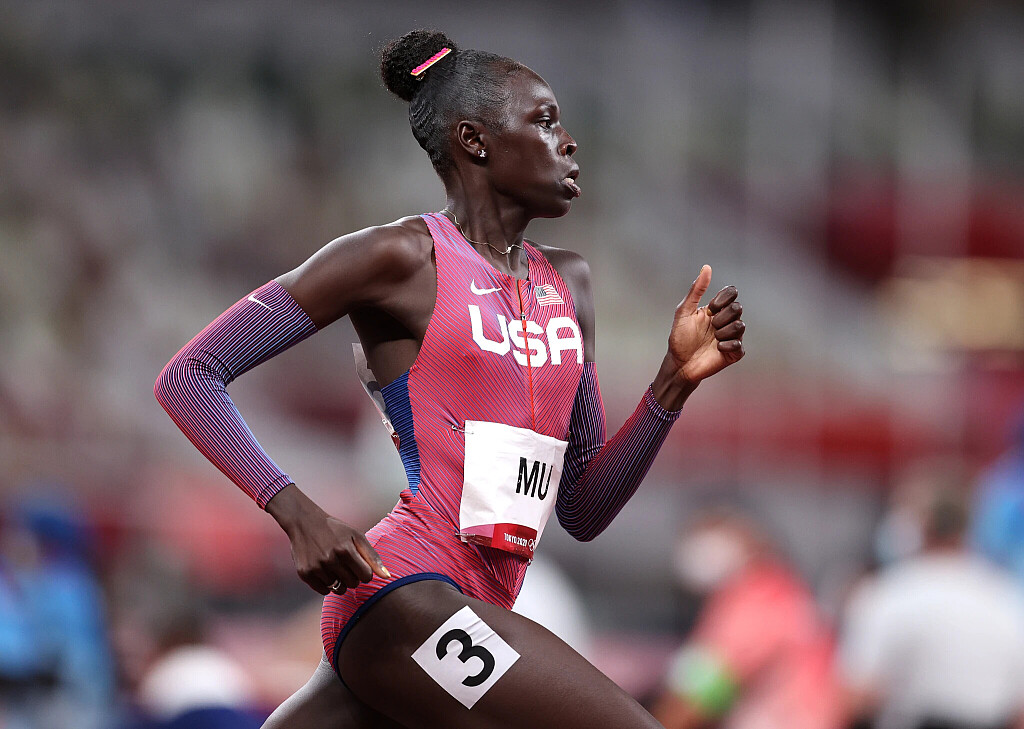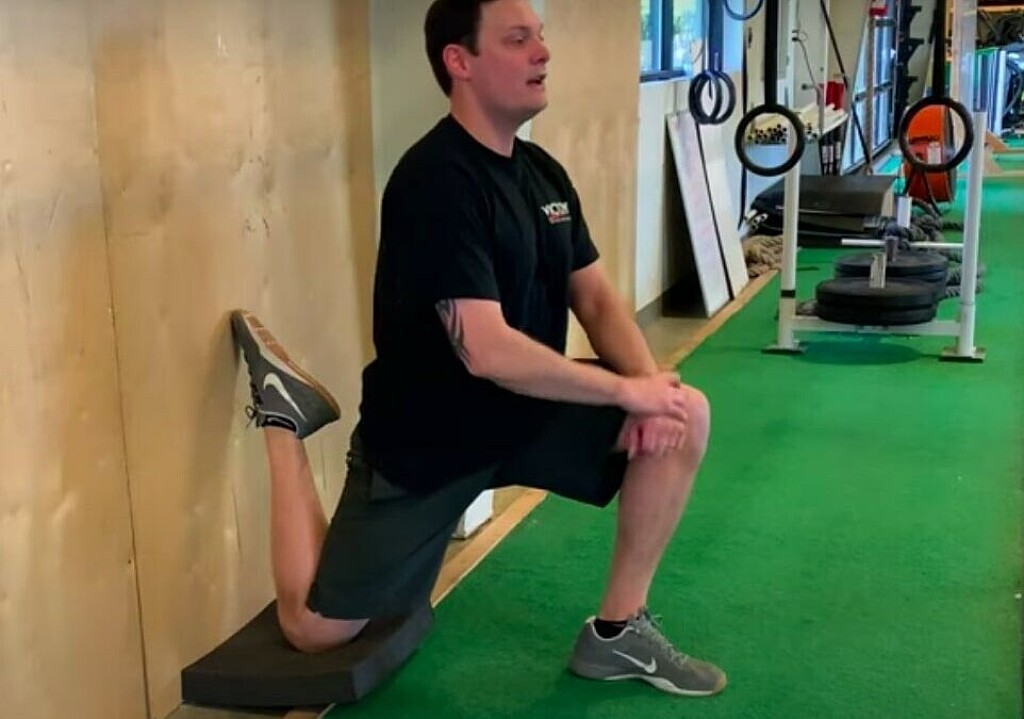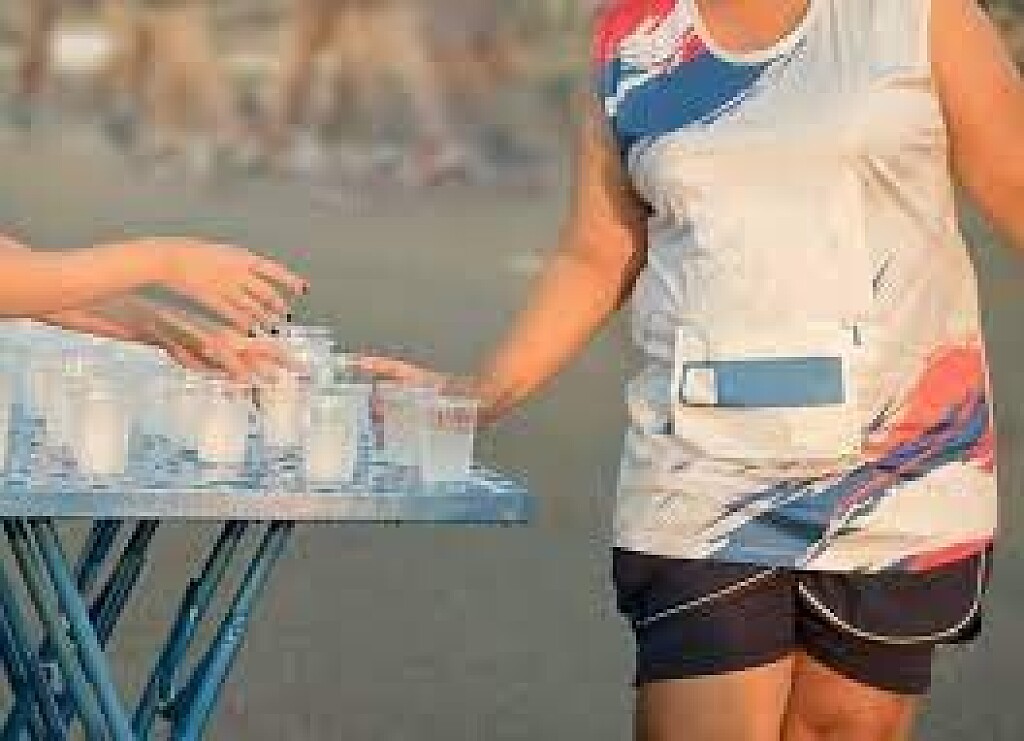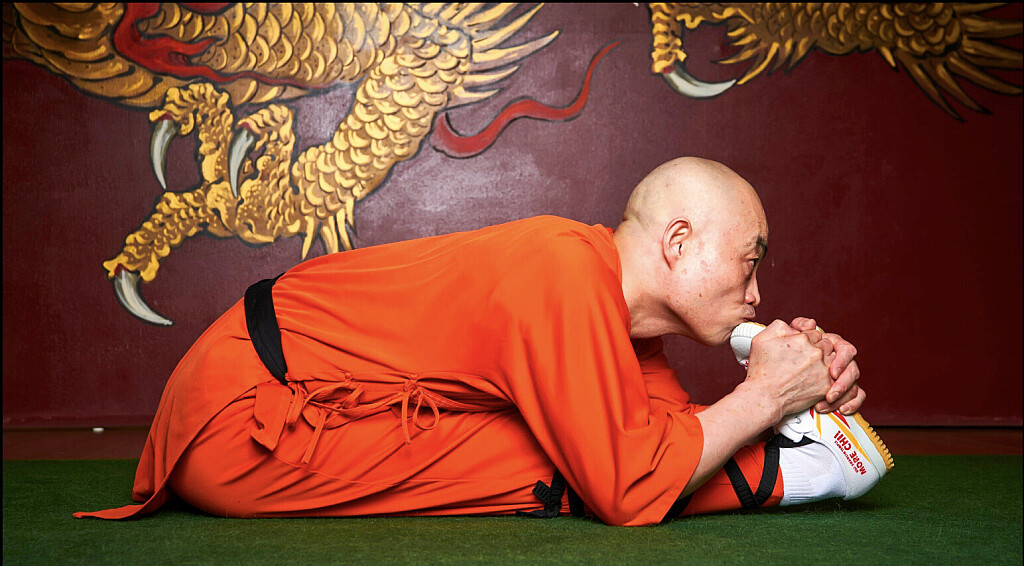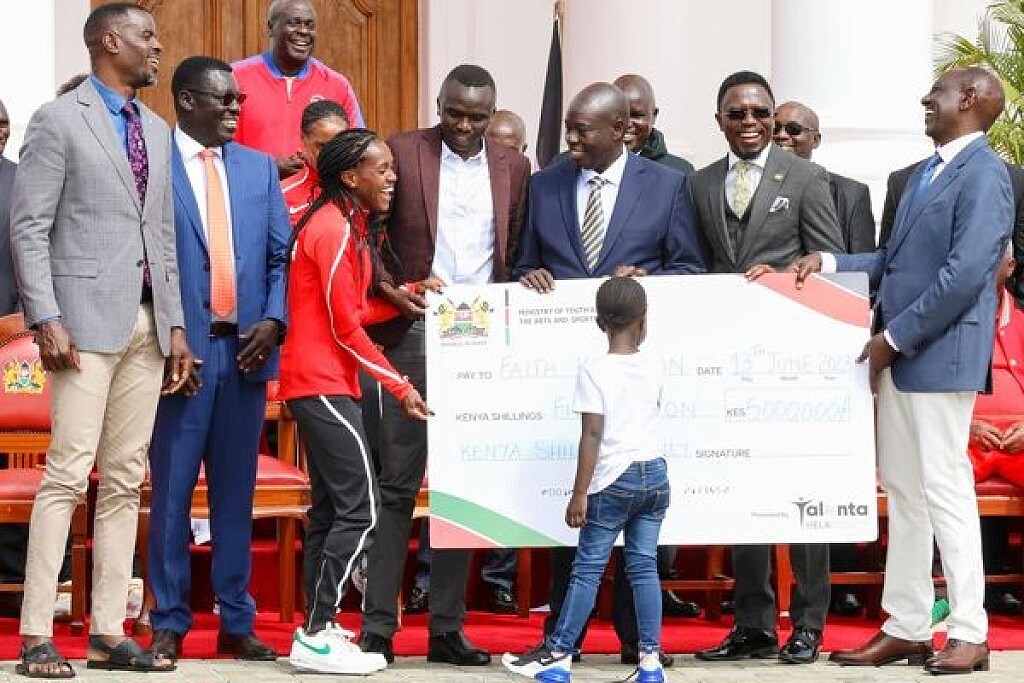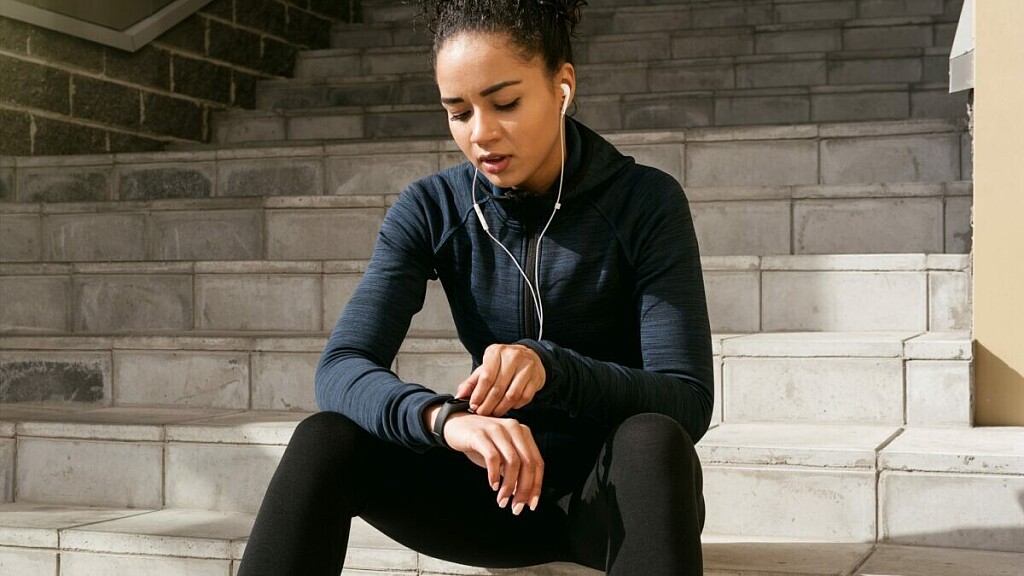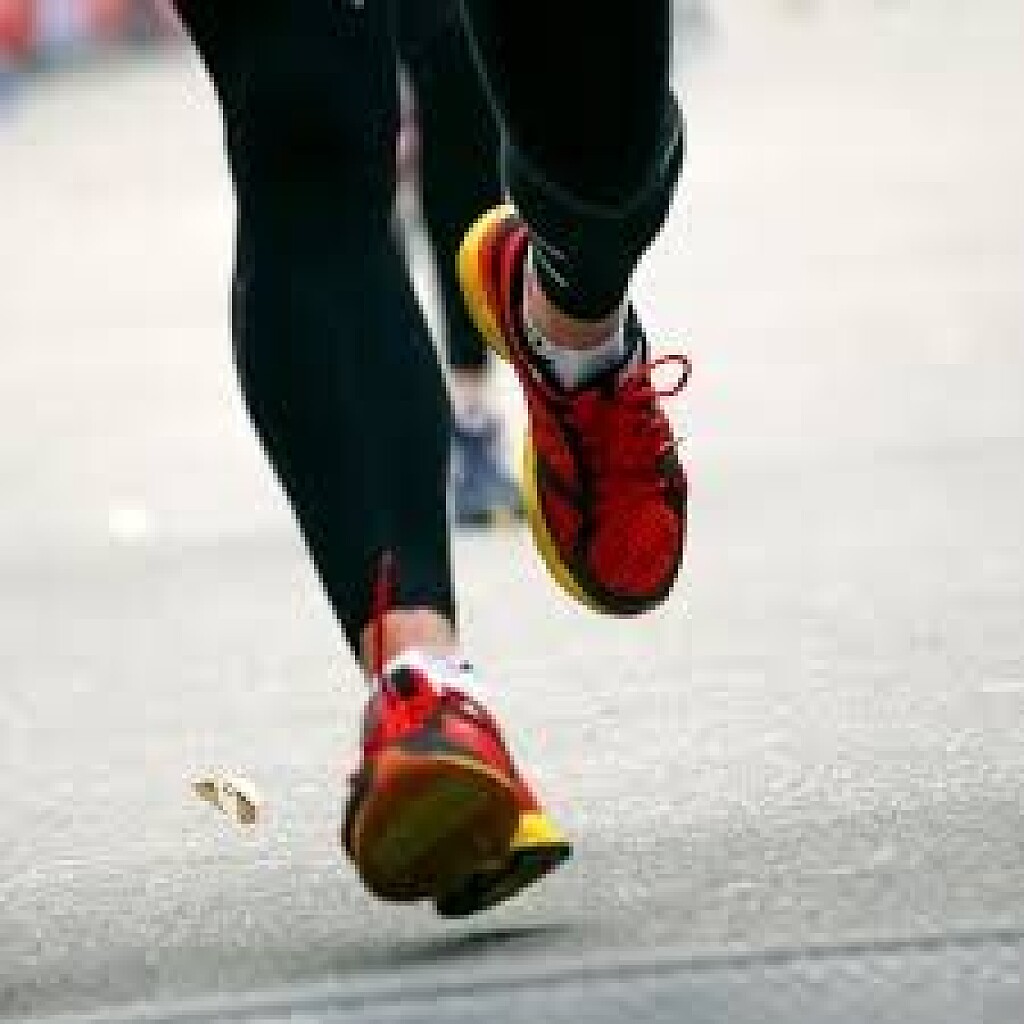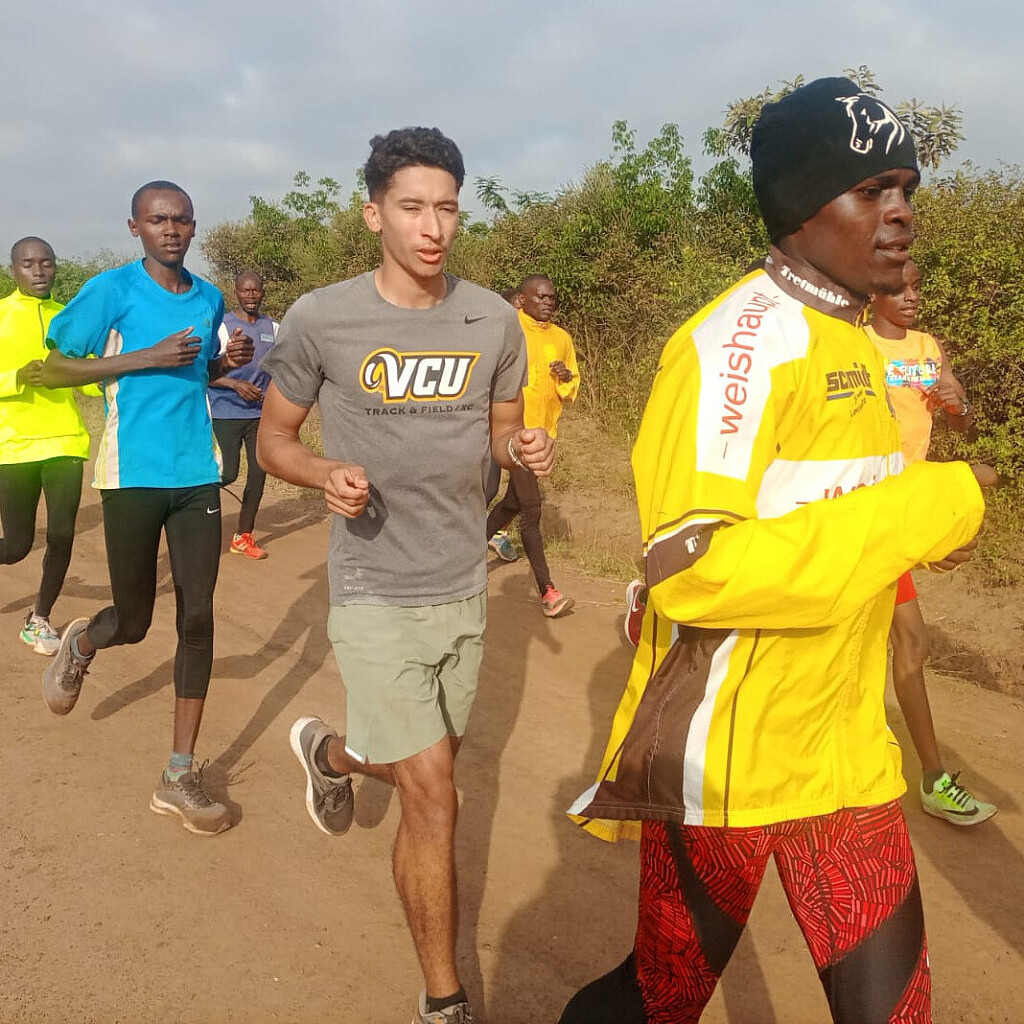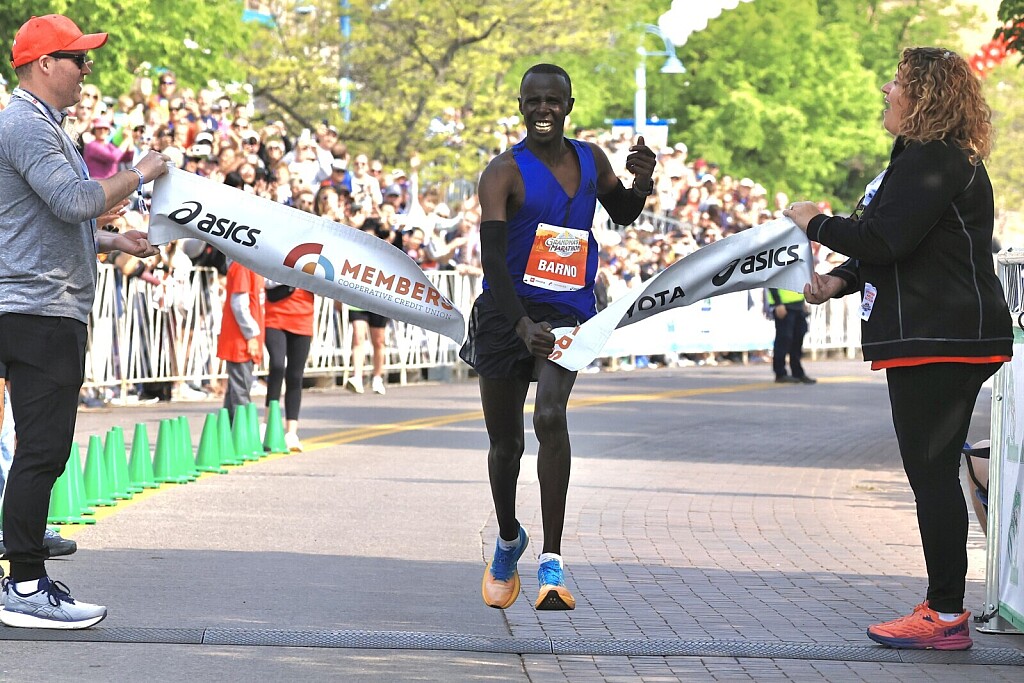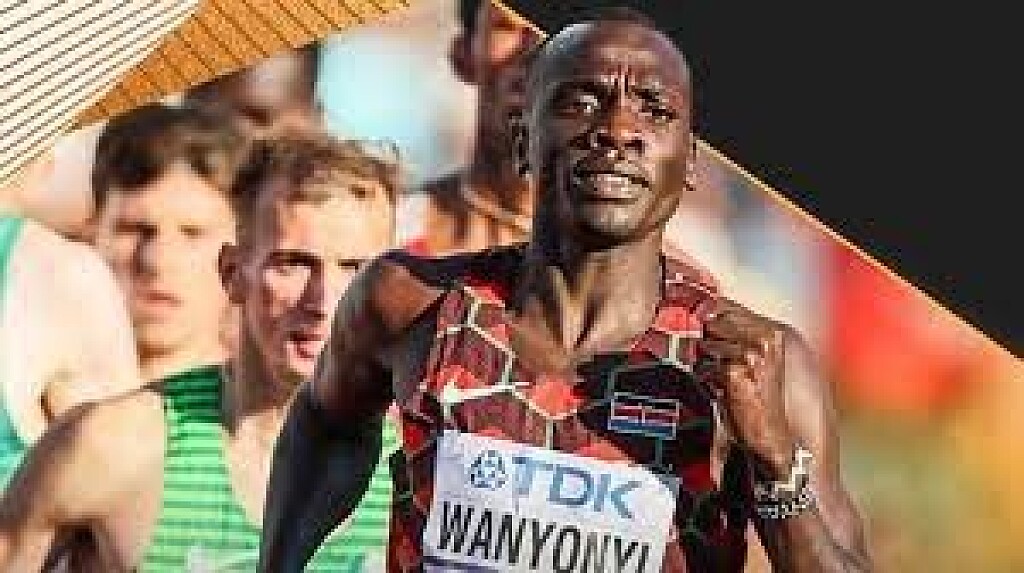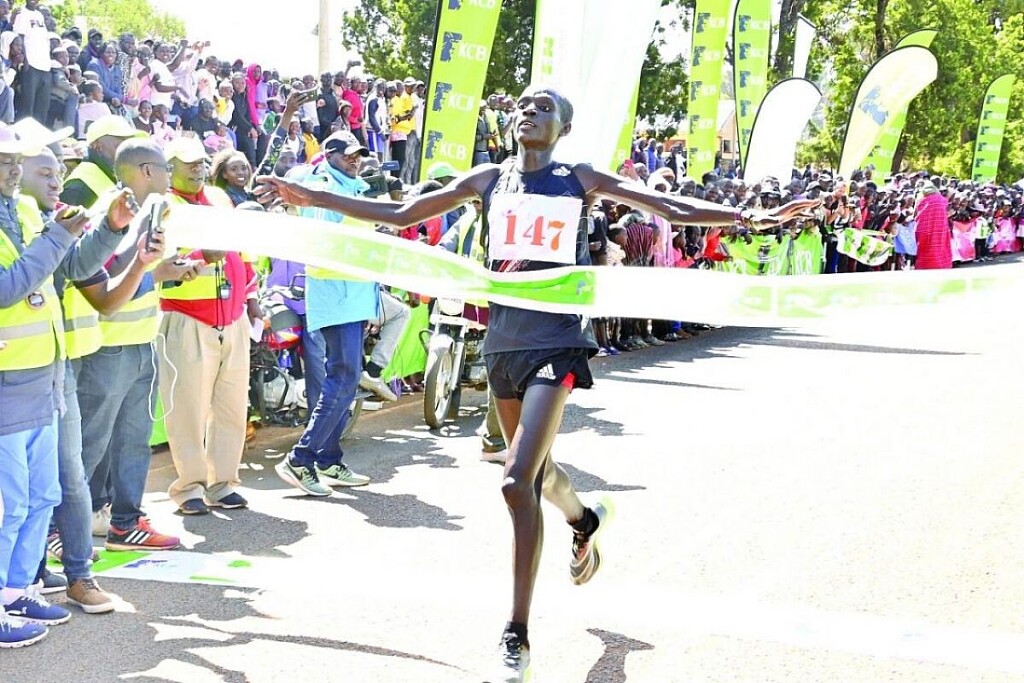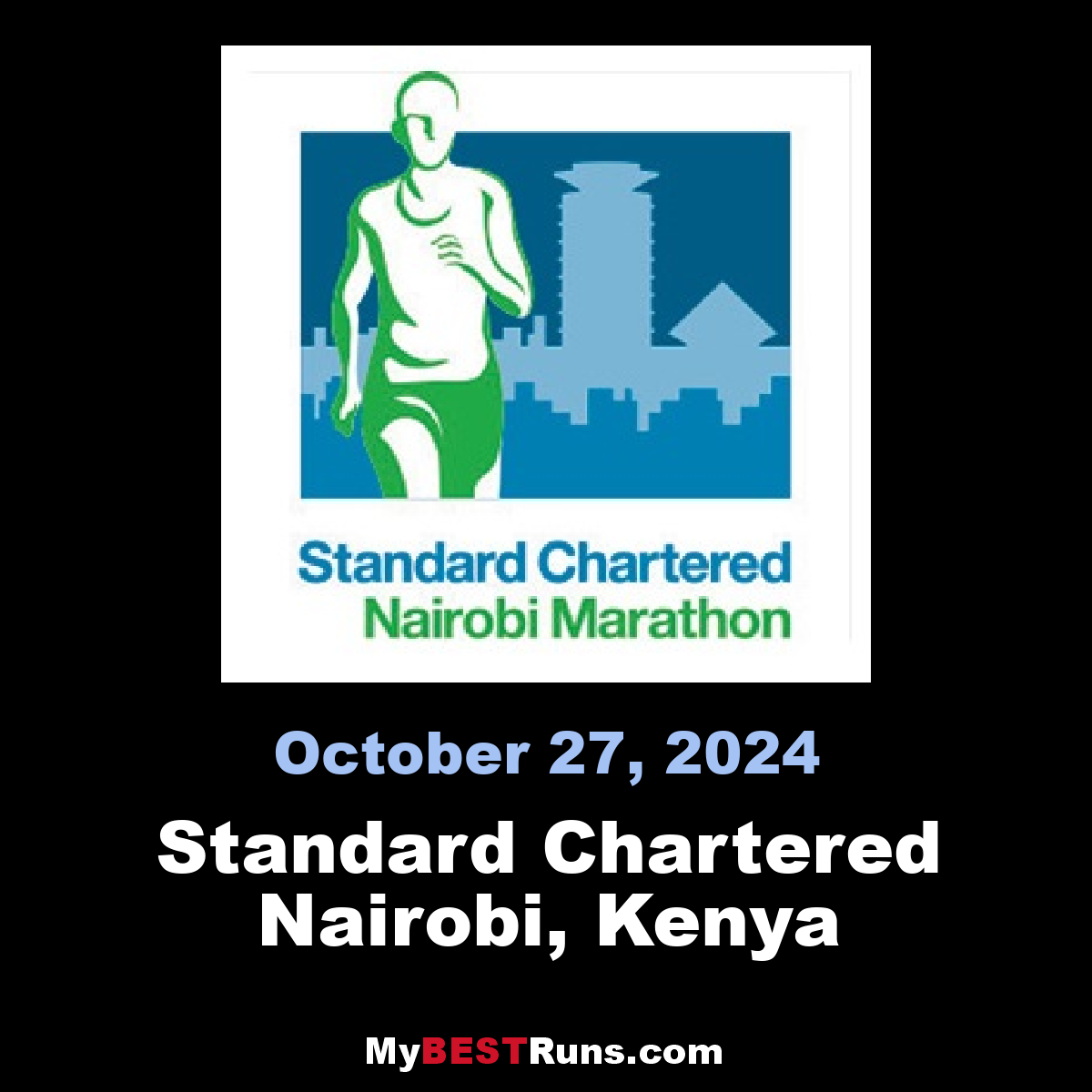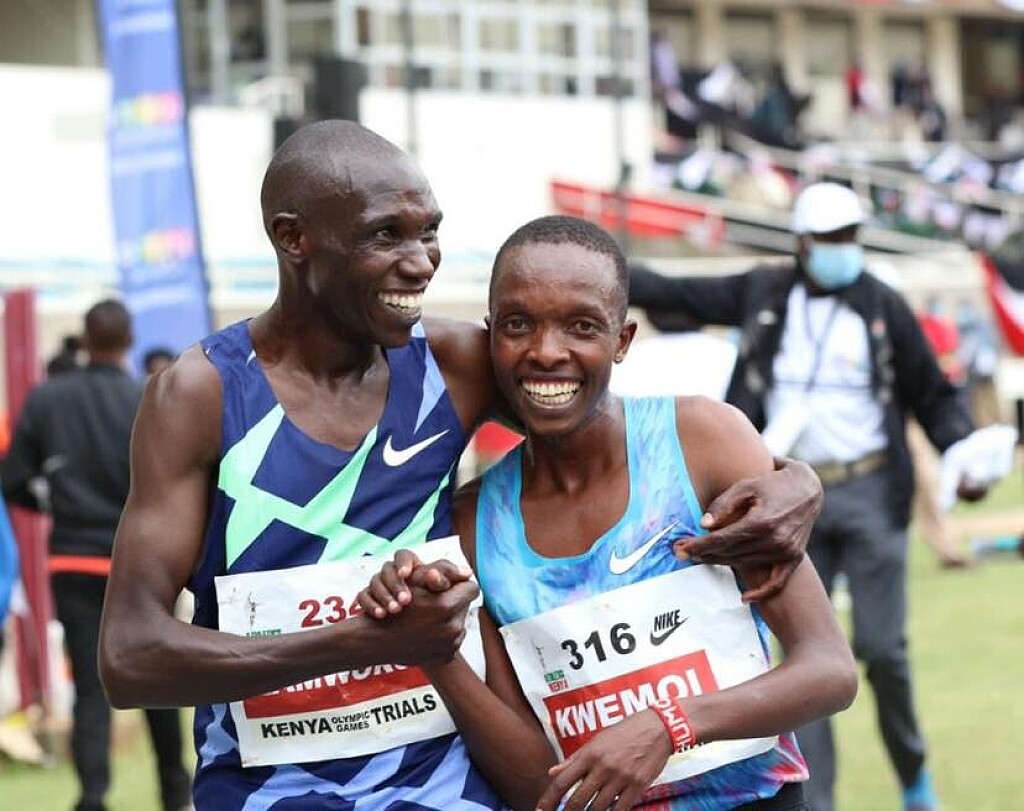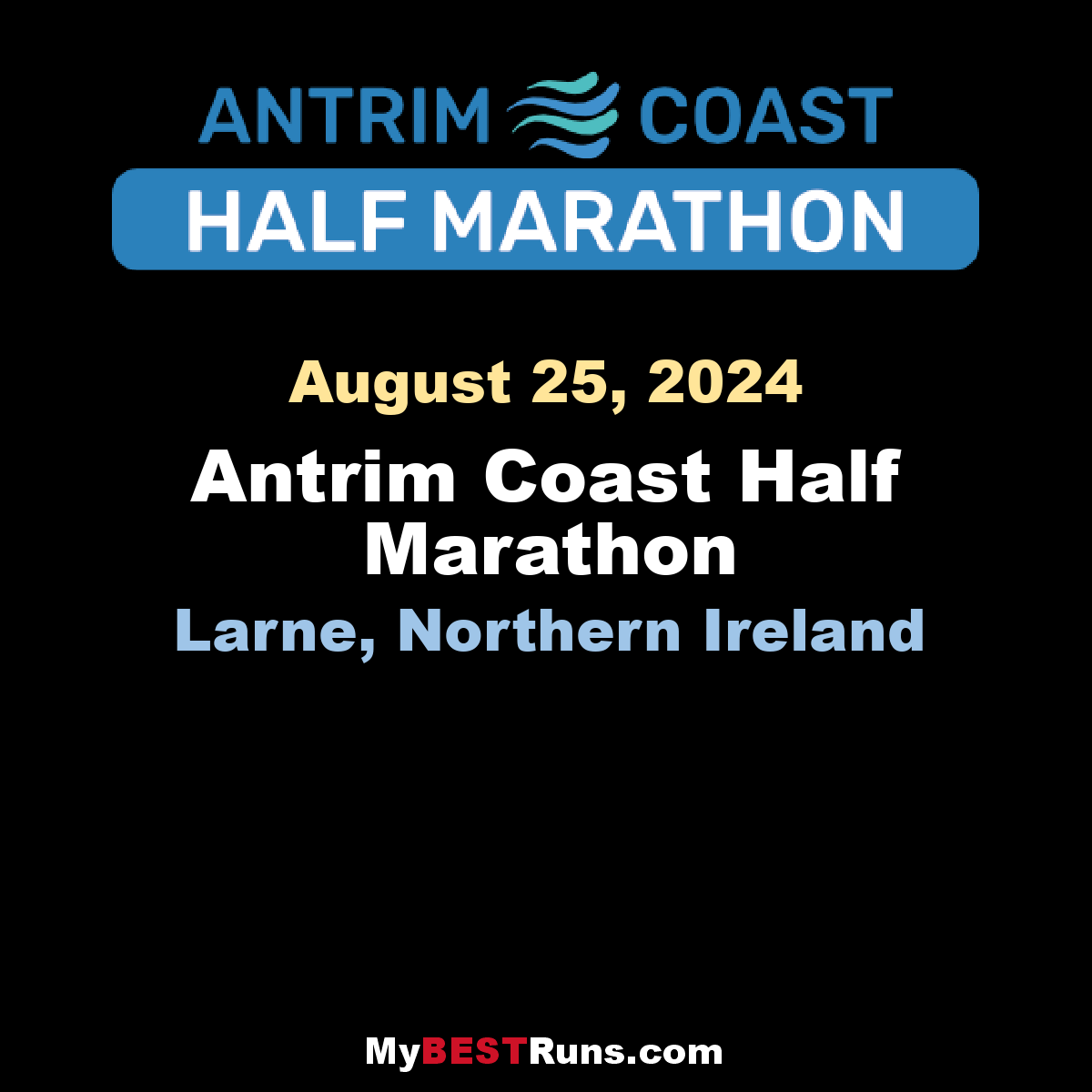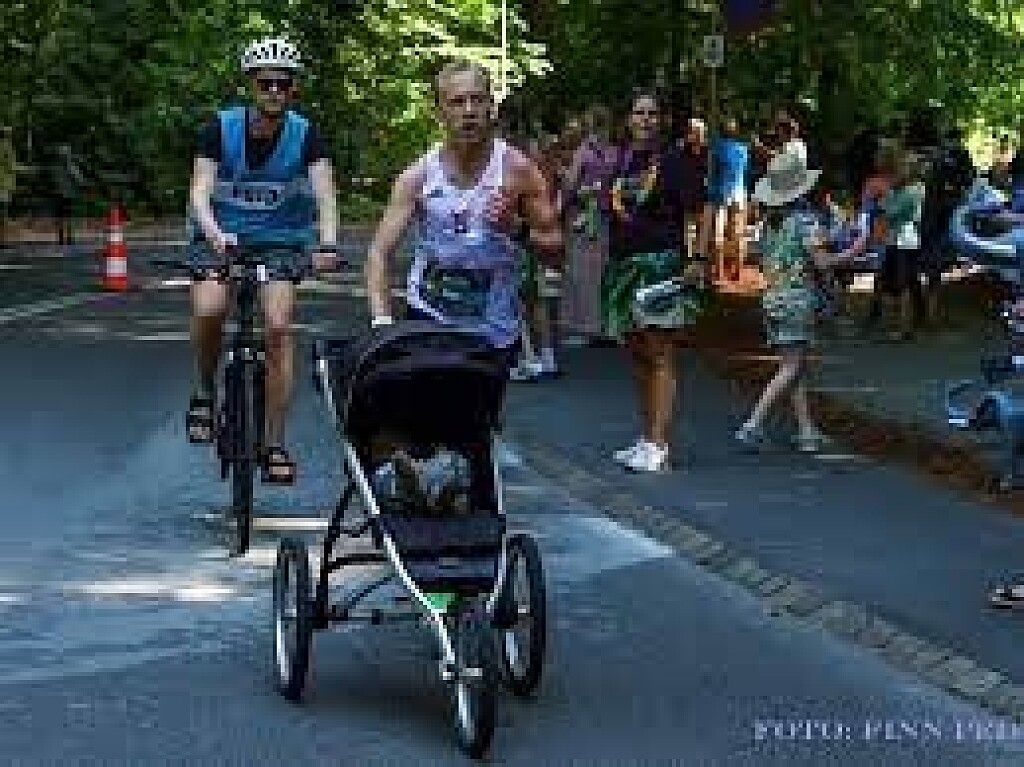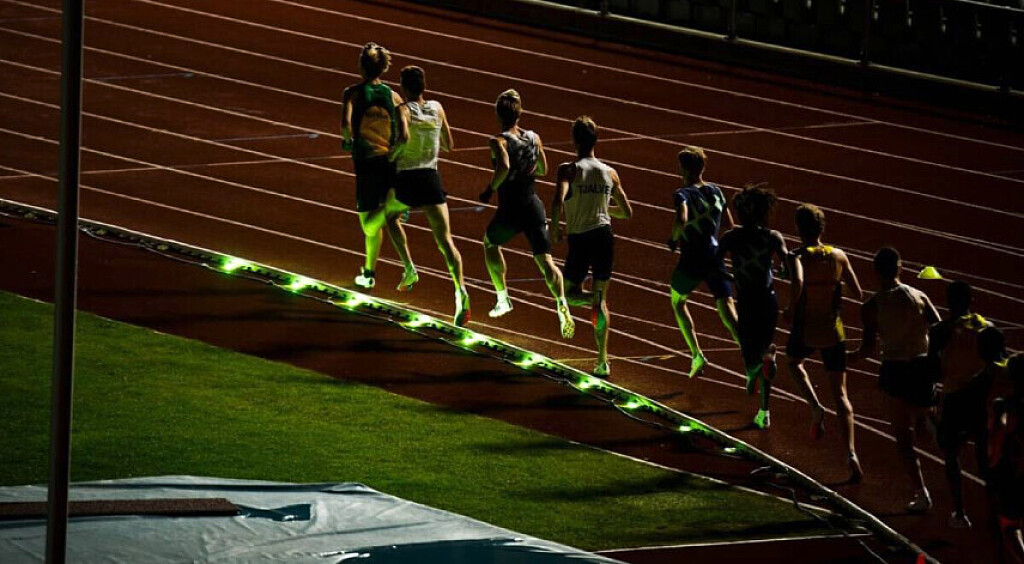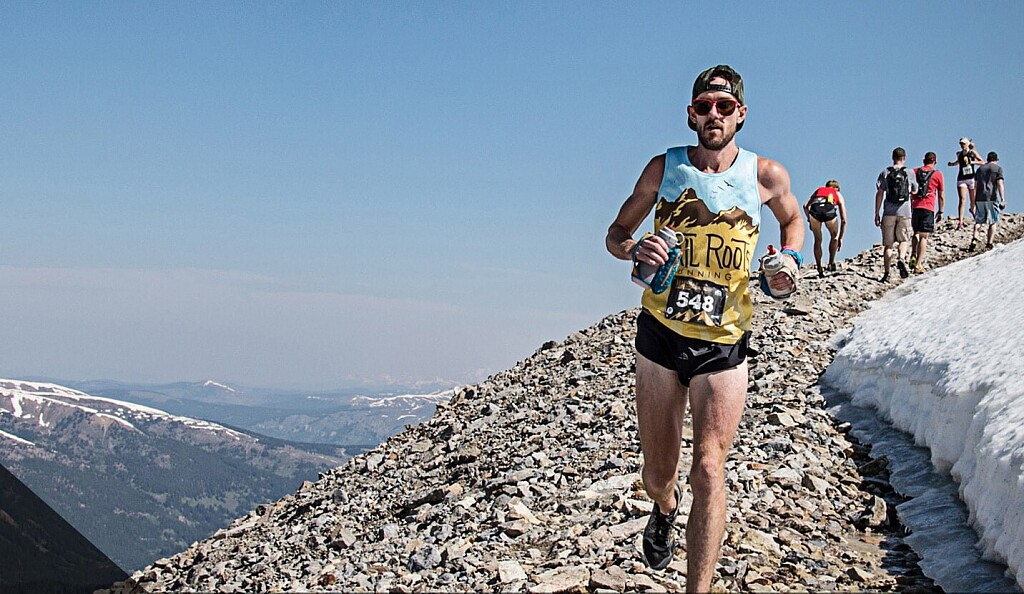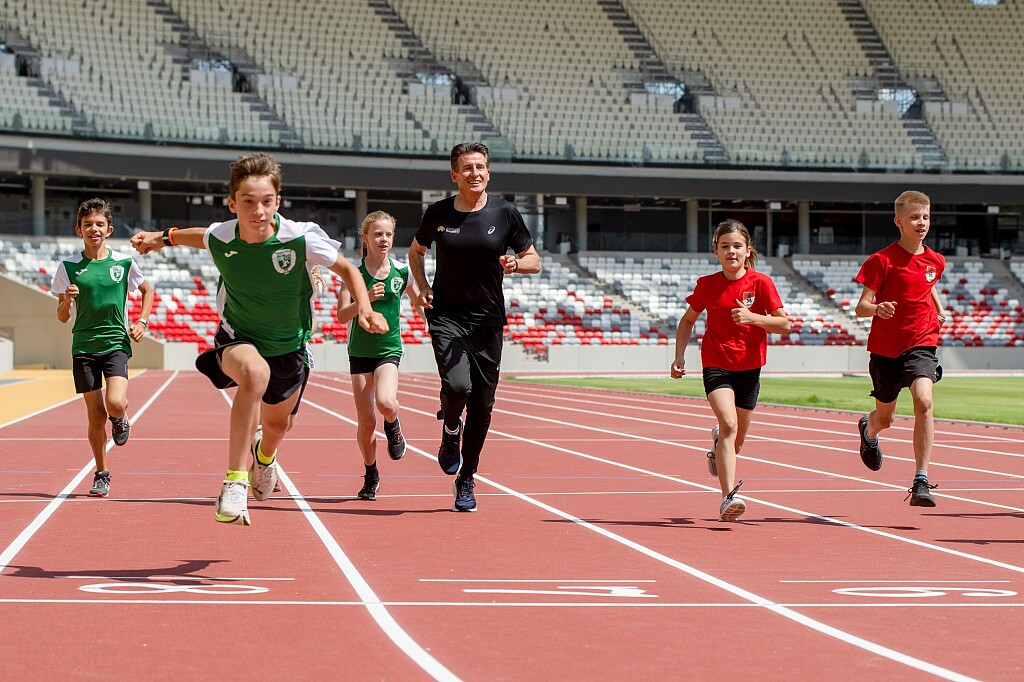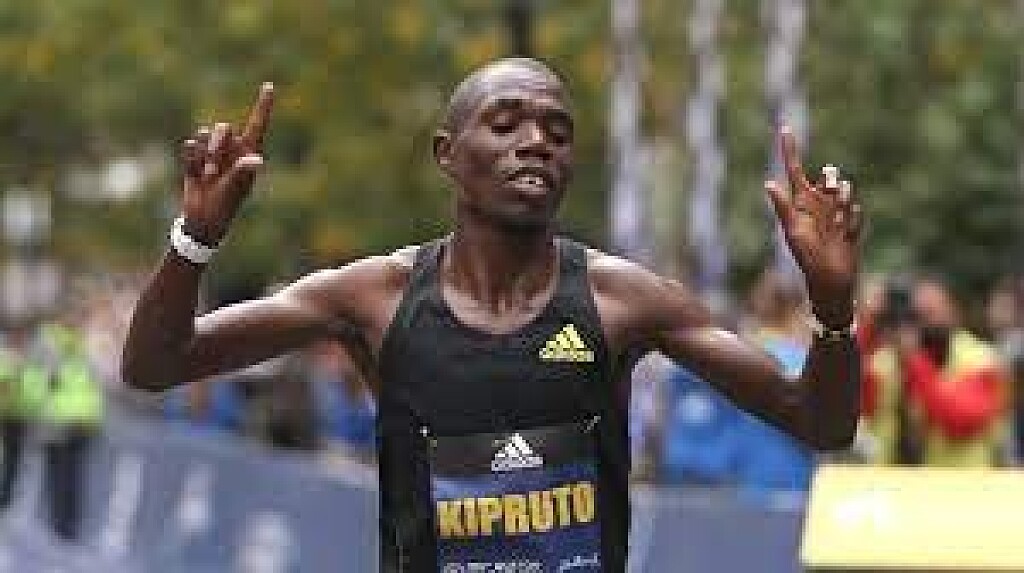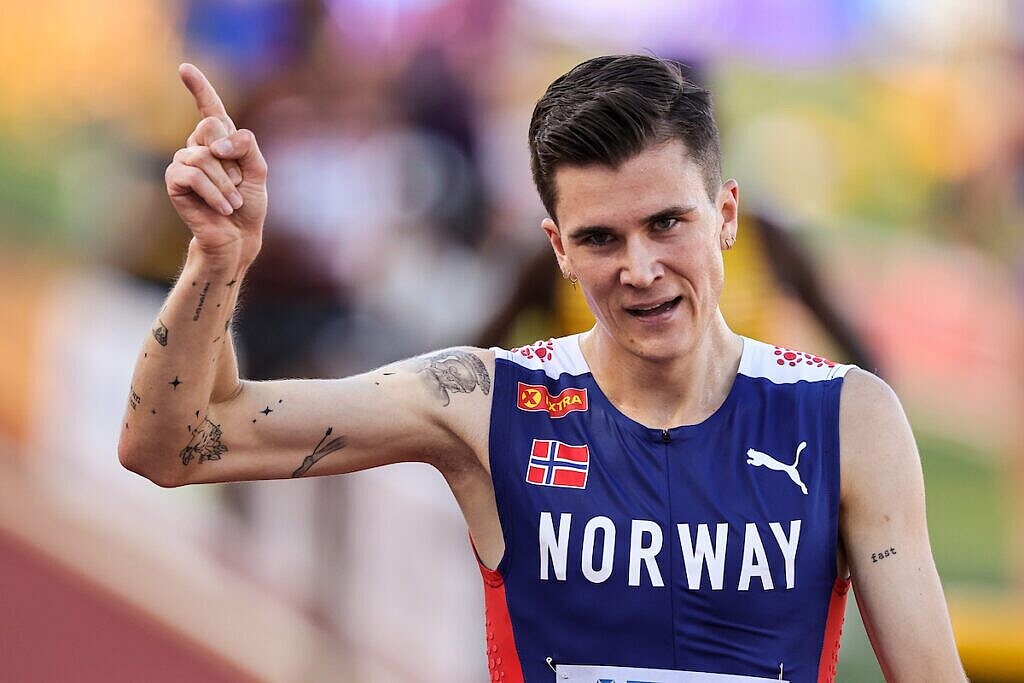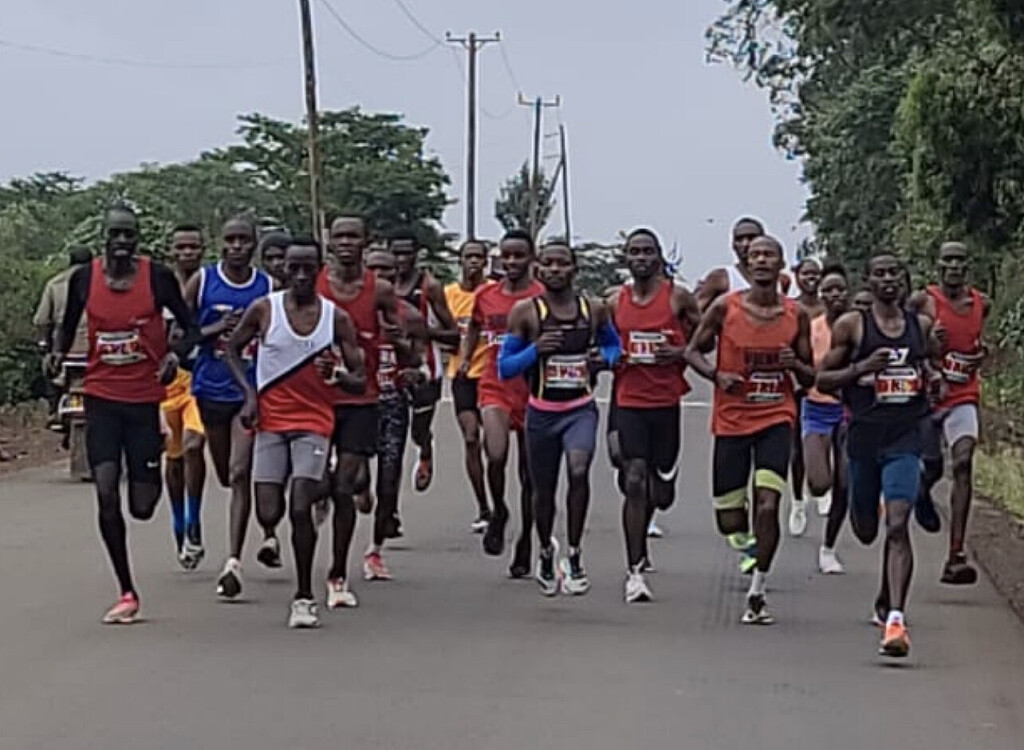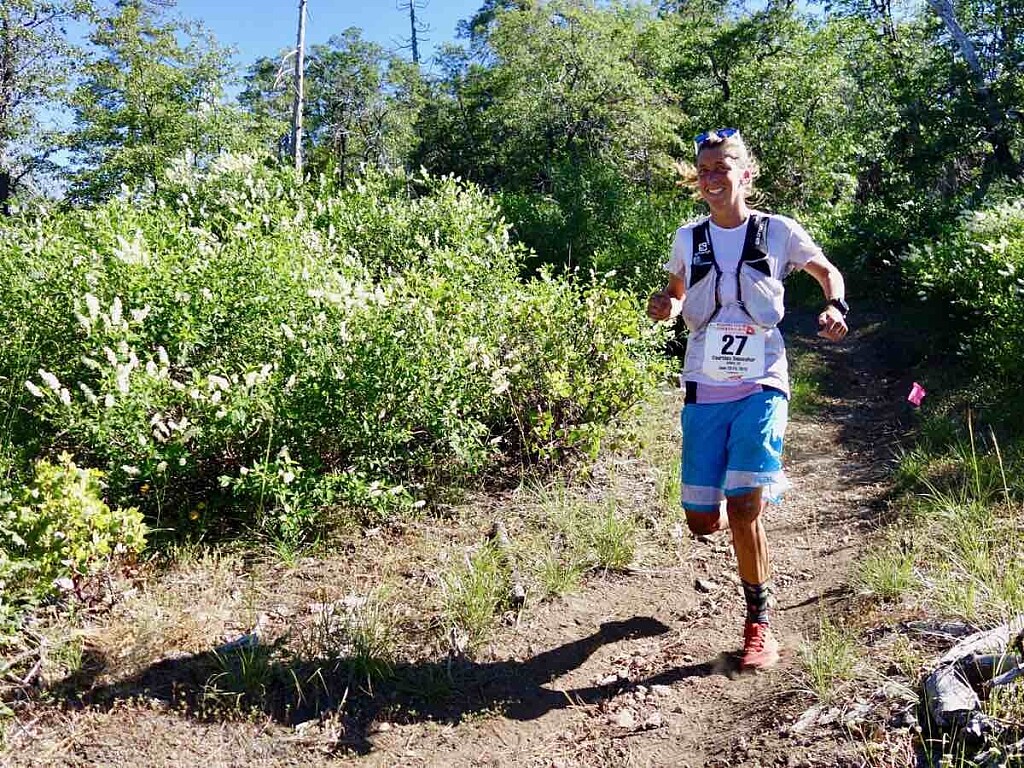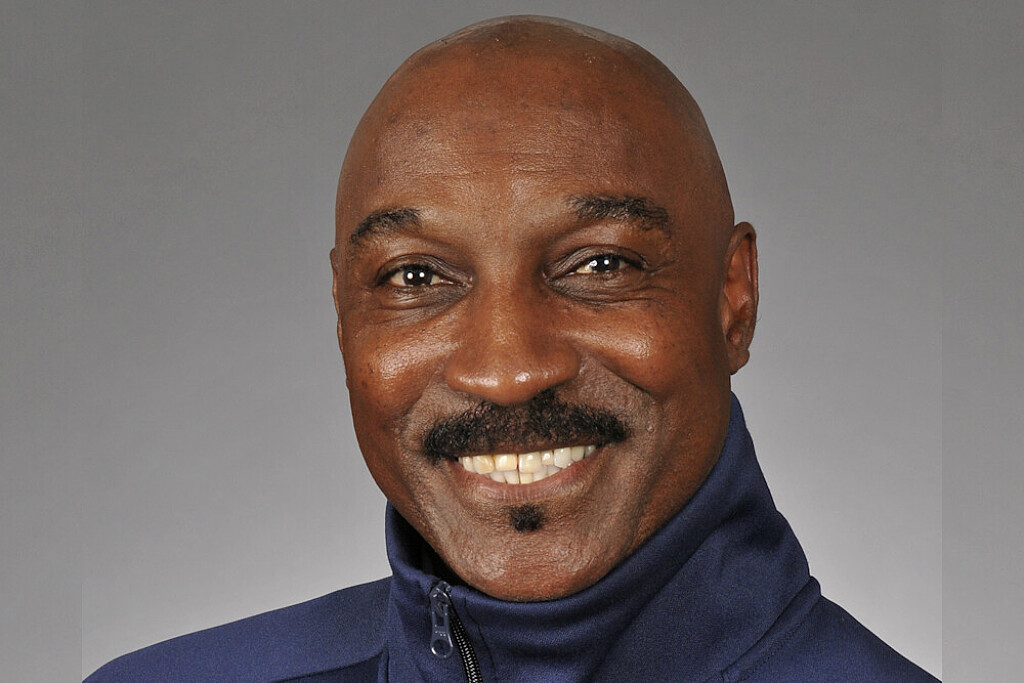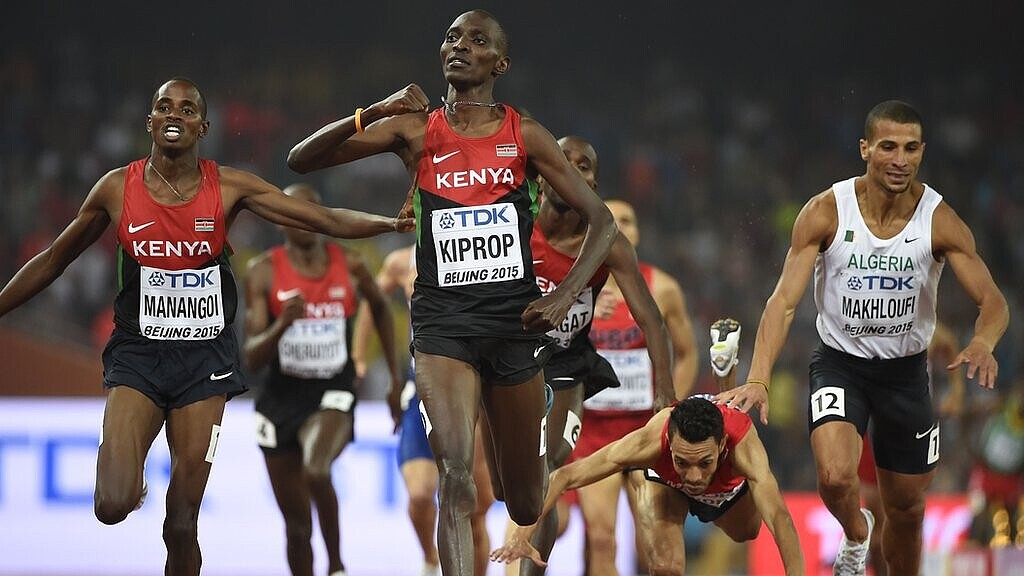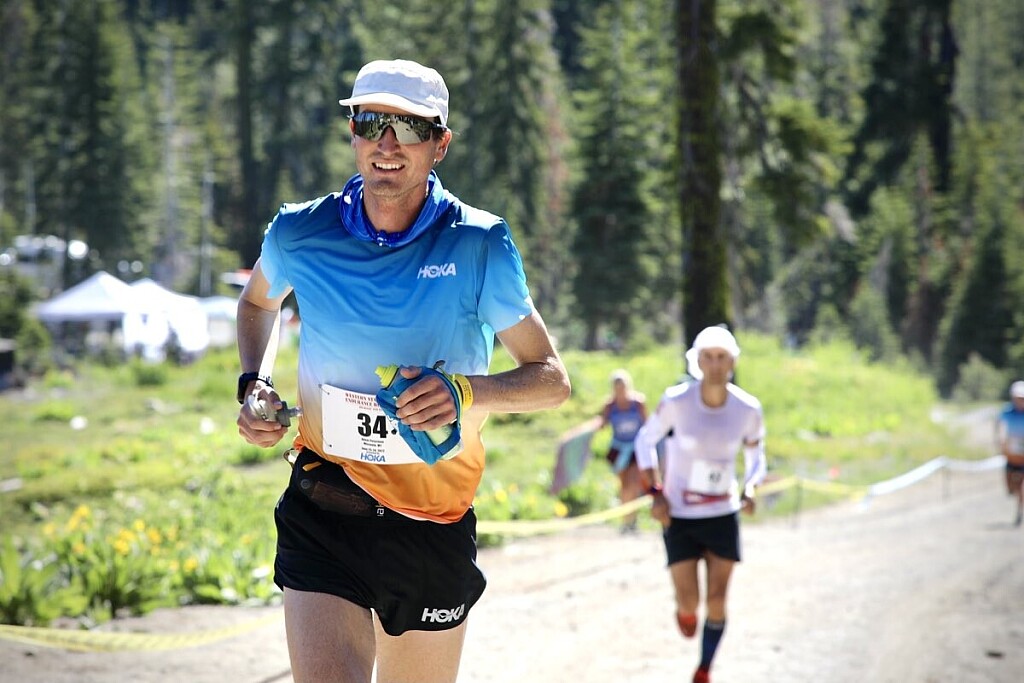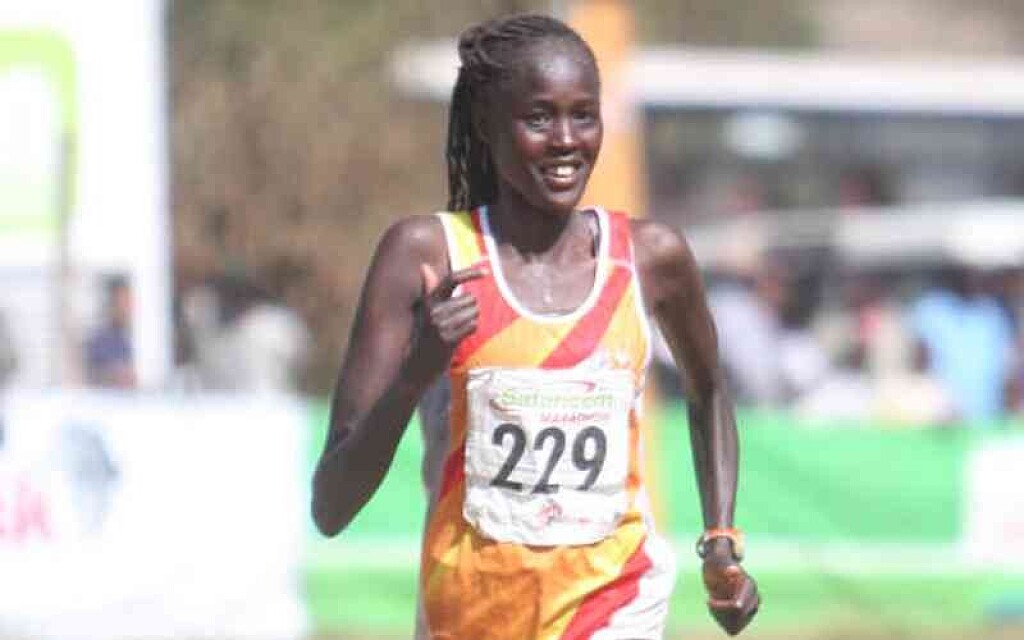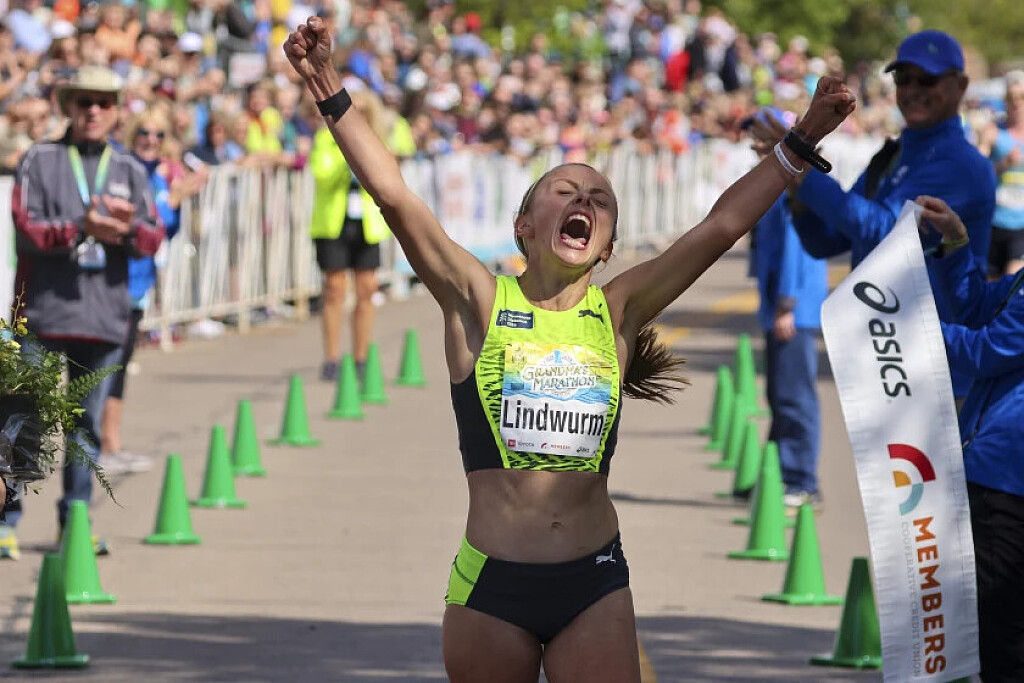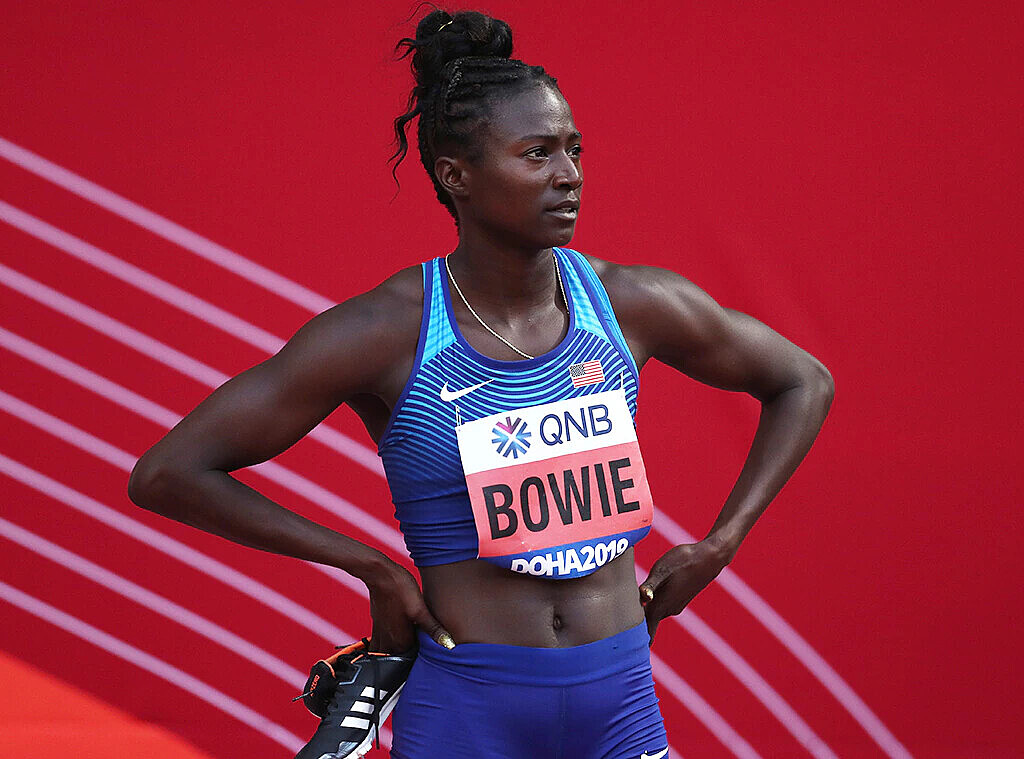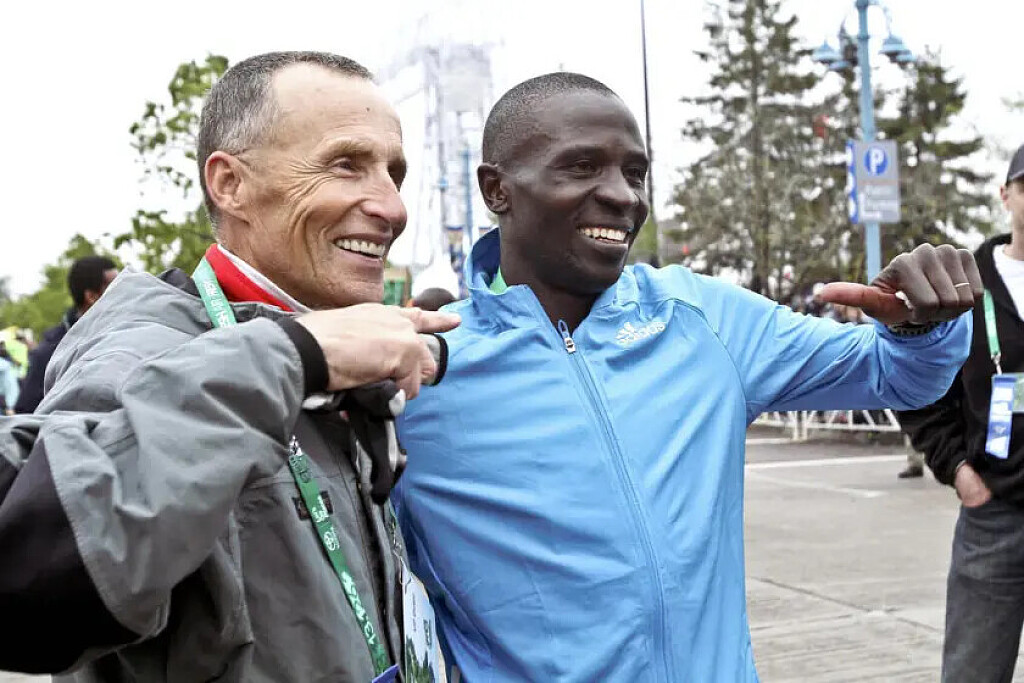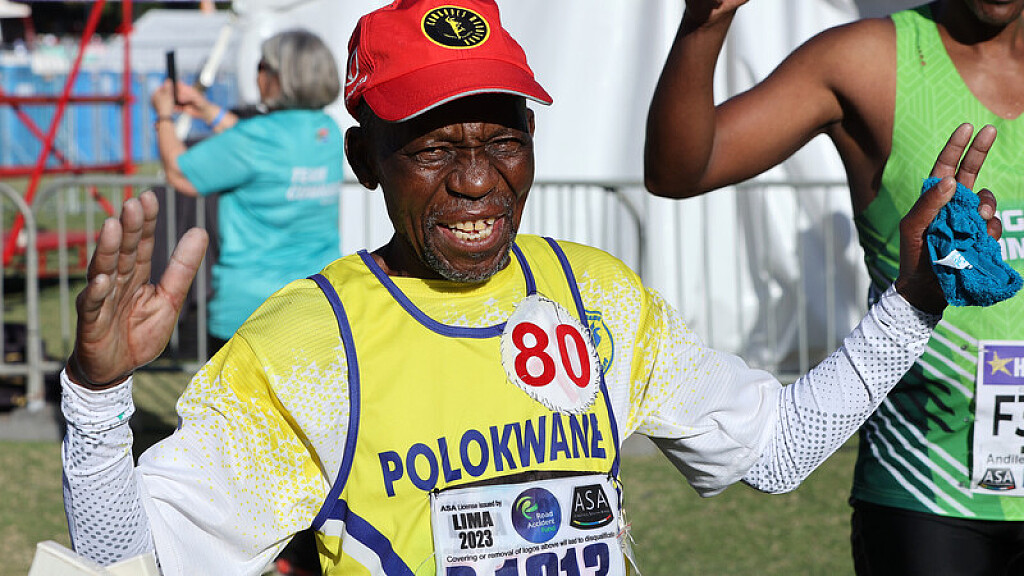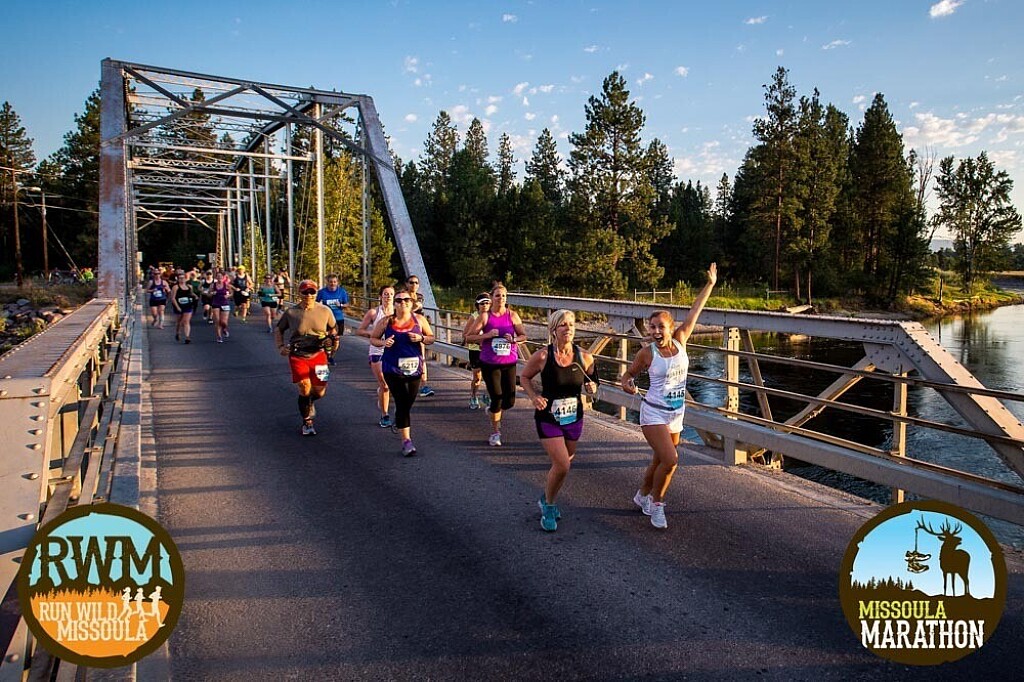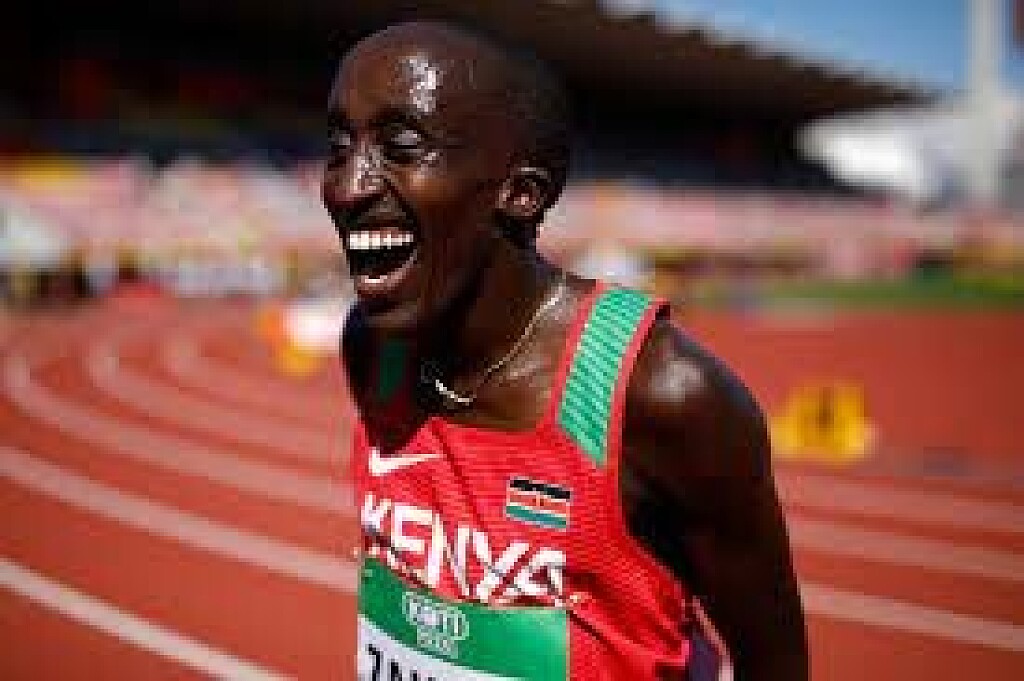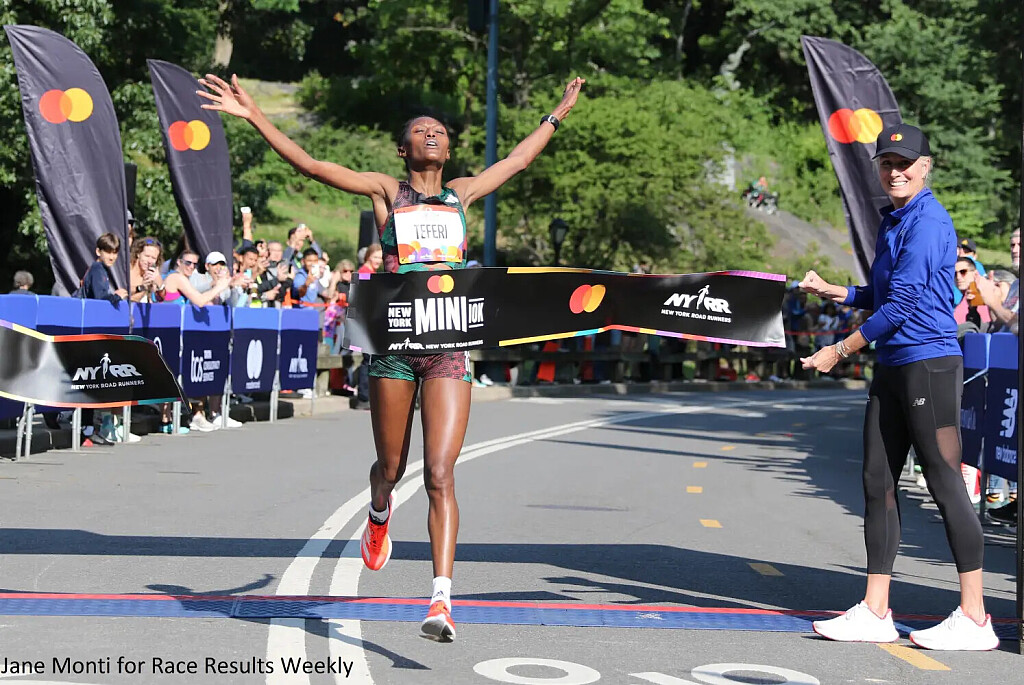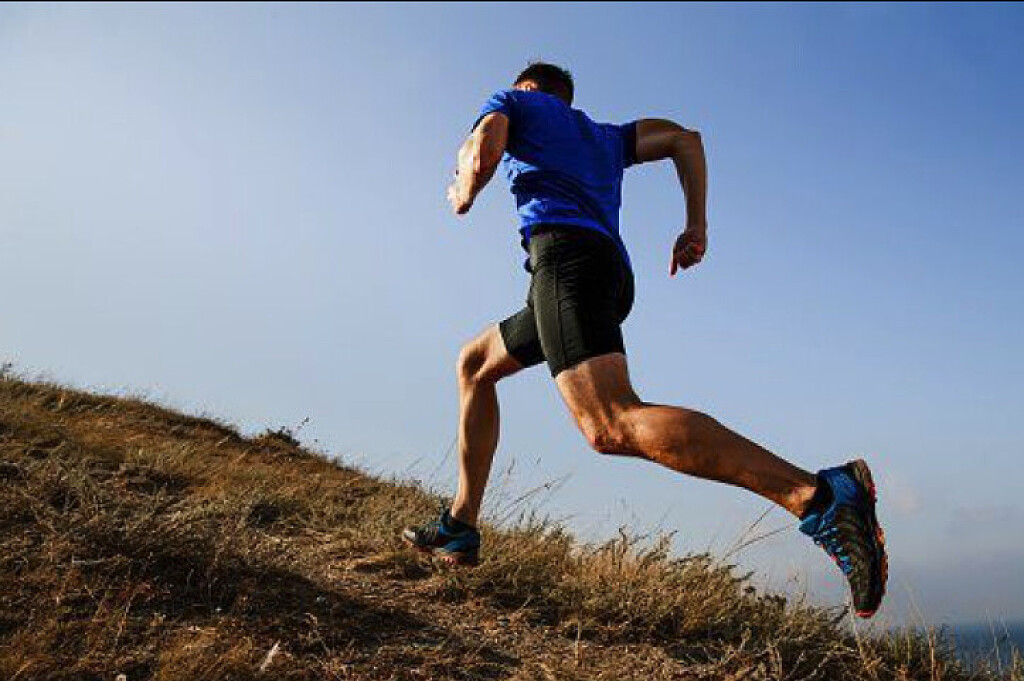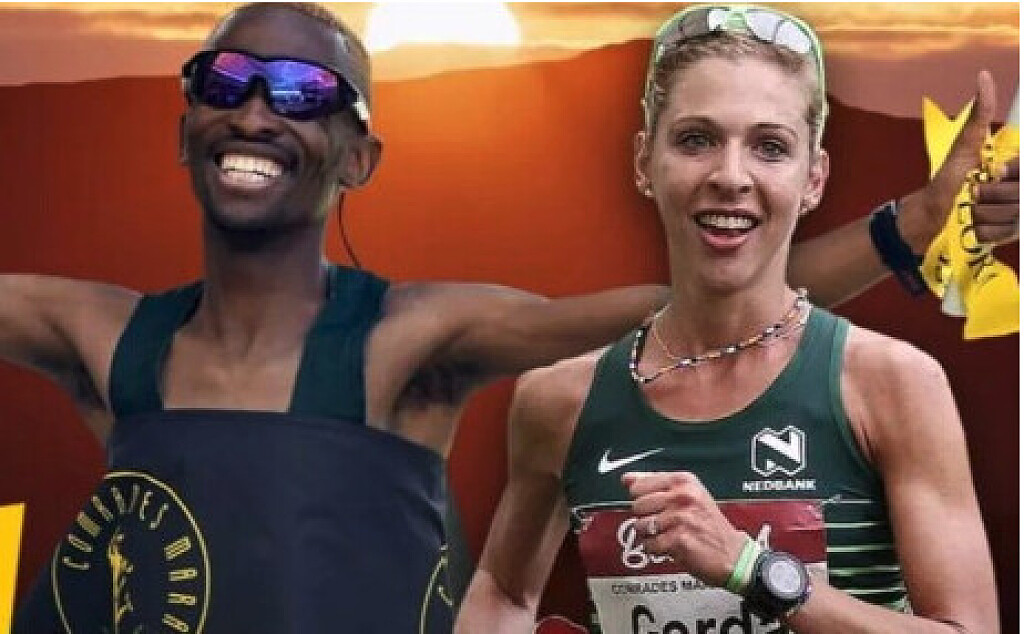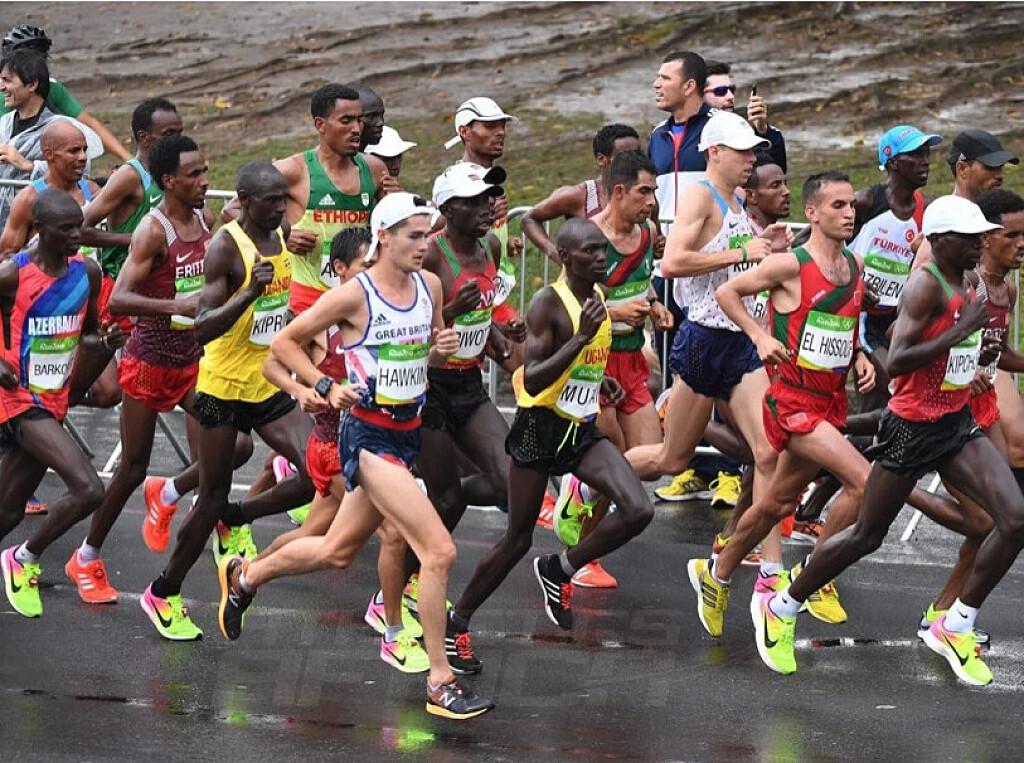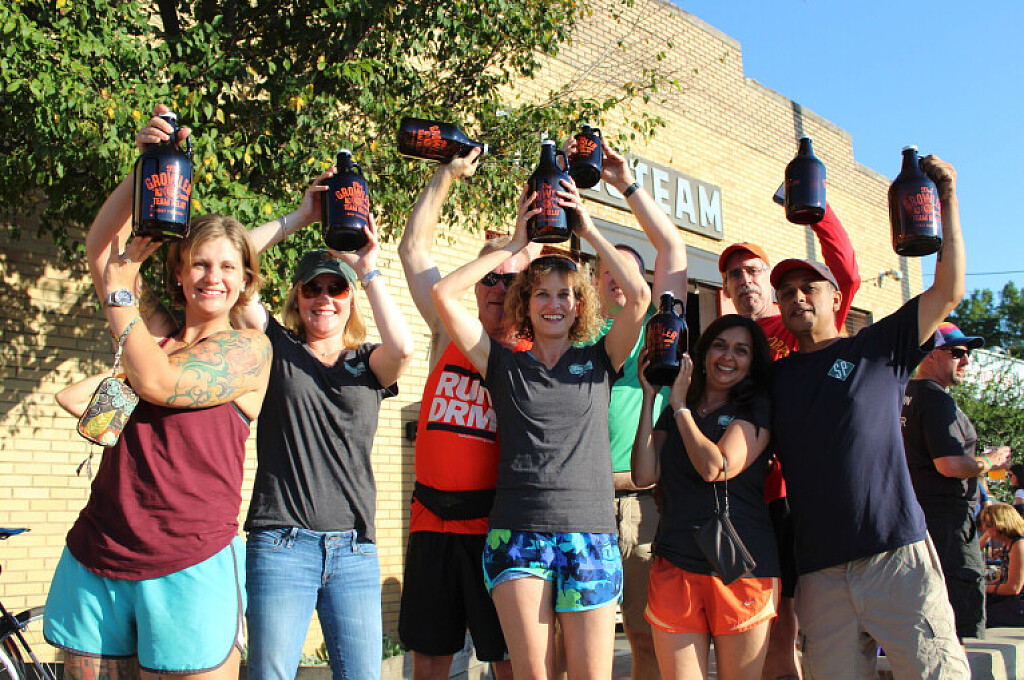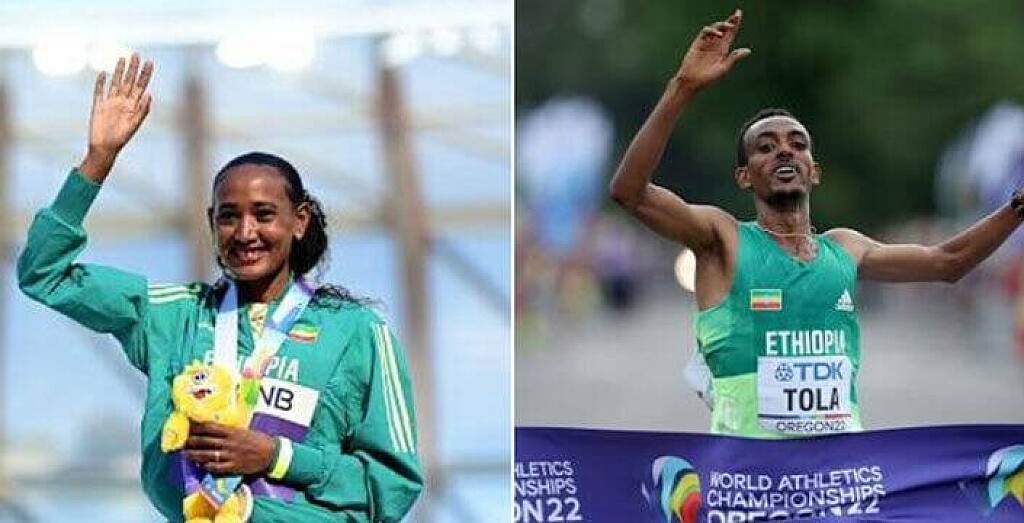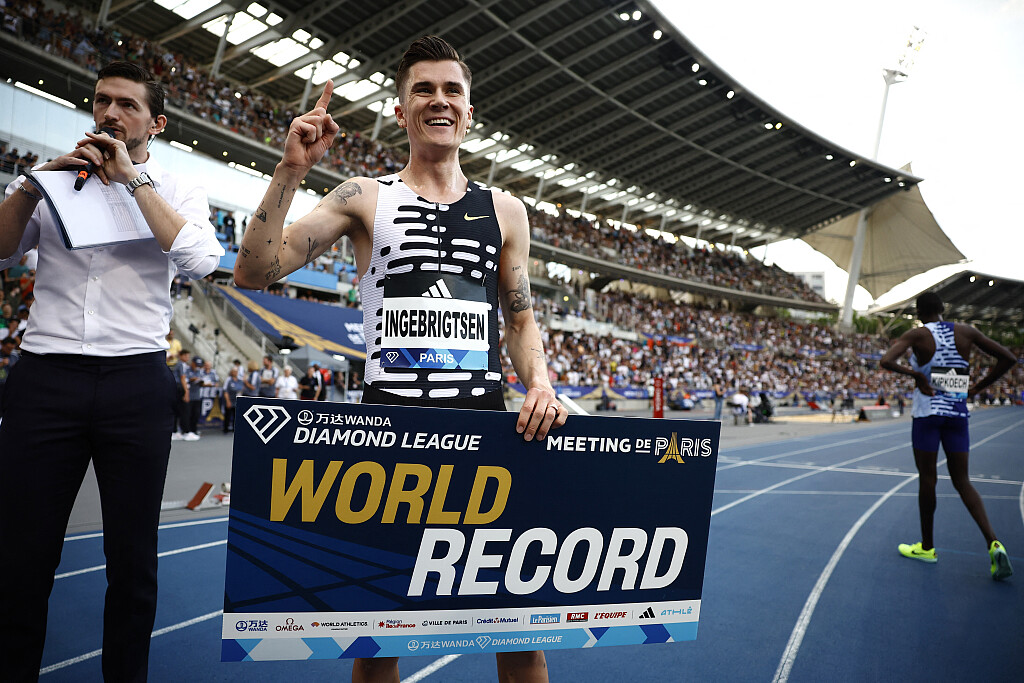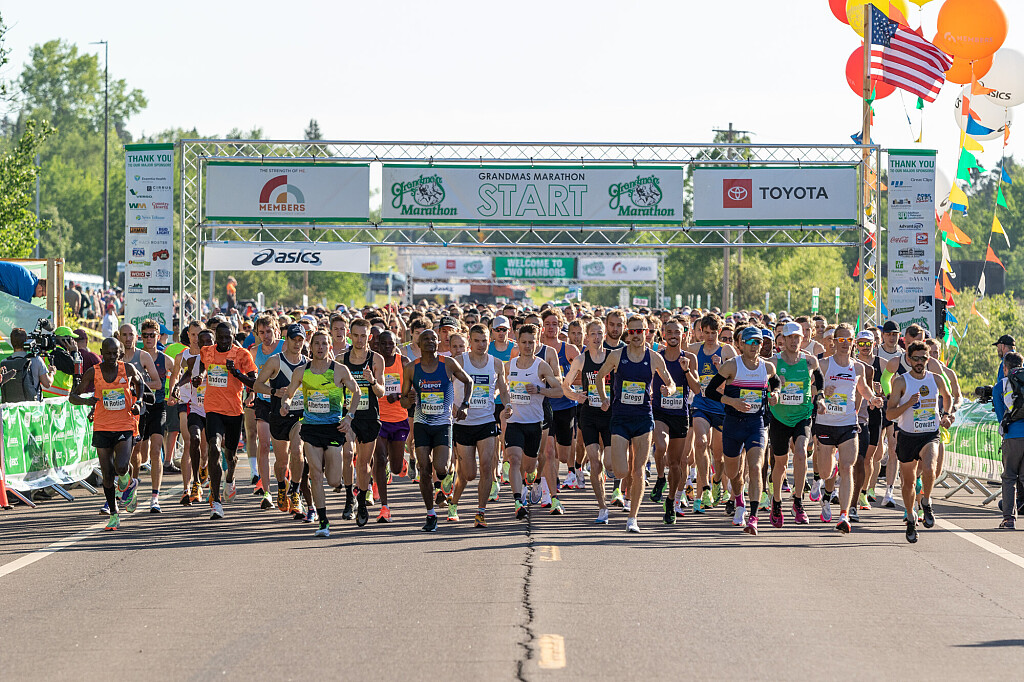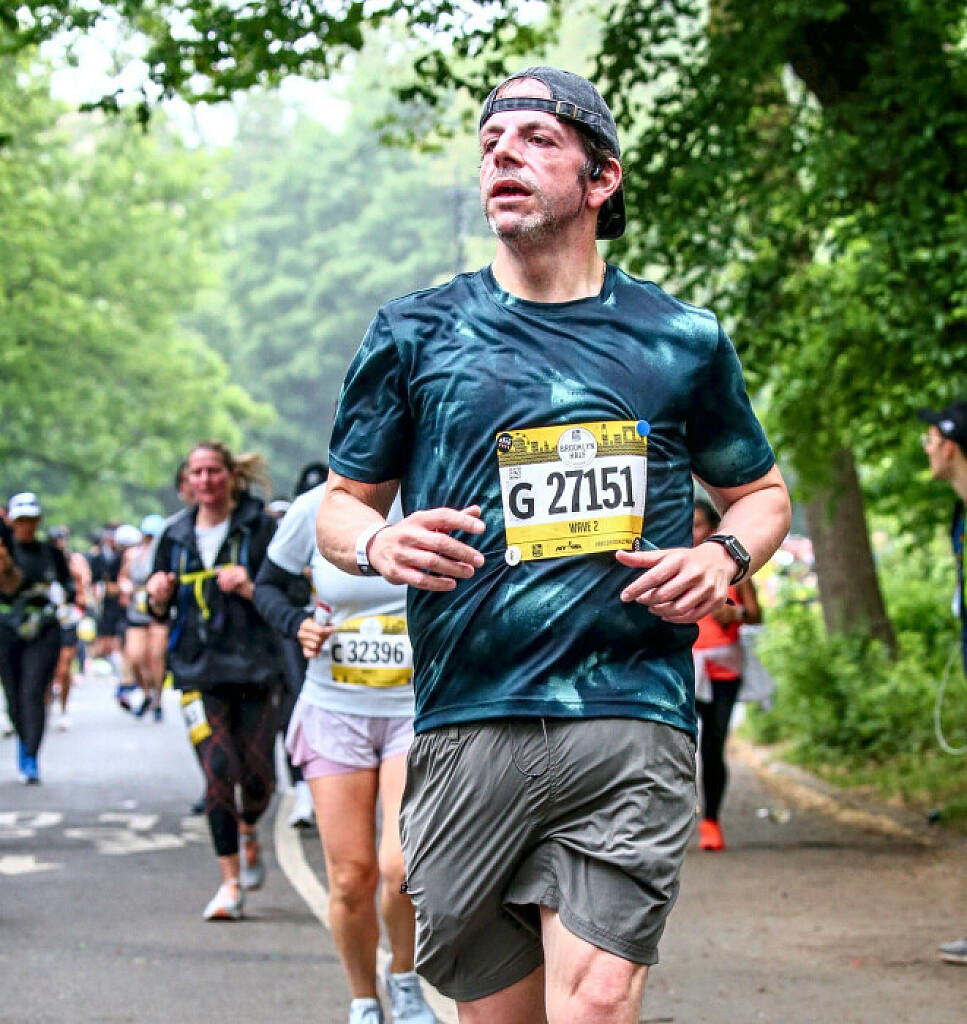Running News Daily
Running News Daily is edited by Bob Anderson in Mountain View, California USA and team in Thika Kenya, La Piedad Mexico, Bend Oregon, Chandler Arizona and Monforte da Beira Portugal. Send your news items to bob@mybestruns.com Advertising opportunities available. Over one million readers and growing. Train the Kenyan Way at KATA Running Retreat Kenya. (Kenyan Athletics Training Academy) in Thika Kenya. Opening in june 2024 KATA Running retreat Portugal. Learn more about Bob Anderson, MBR publisher and KATA director/owner, take a look at A Long Run the movie covering Bob's 50 race challenge.
Index to Daily Posts · Sign Up For Updates · Run The World Feed
The Olympic and world 800m champion Athing Mu will make her season debut at the USATF NYC Grand Prix Meet on June 24
Athing Mu, the Olympic and world 800m champion, will make her season debut at the USATF NYC Grand Prix. This meet is part of the World Athletics Continental Tour Gold series, the USATF NYC Grand Prix takes place at Icahn Stadium on Randall’s Island June 24.
It will be Mu's first competition in exactly 11 months, as she returns to action for the first time since the World Athletics Championships Oregon22, where she added world 800m gold to the Olympic title she claimed in Tokyo.
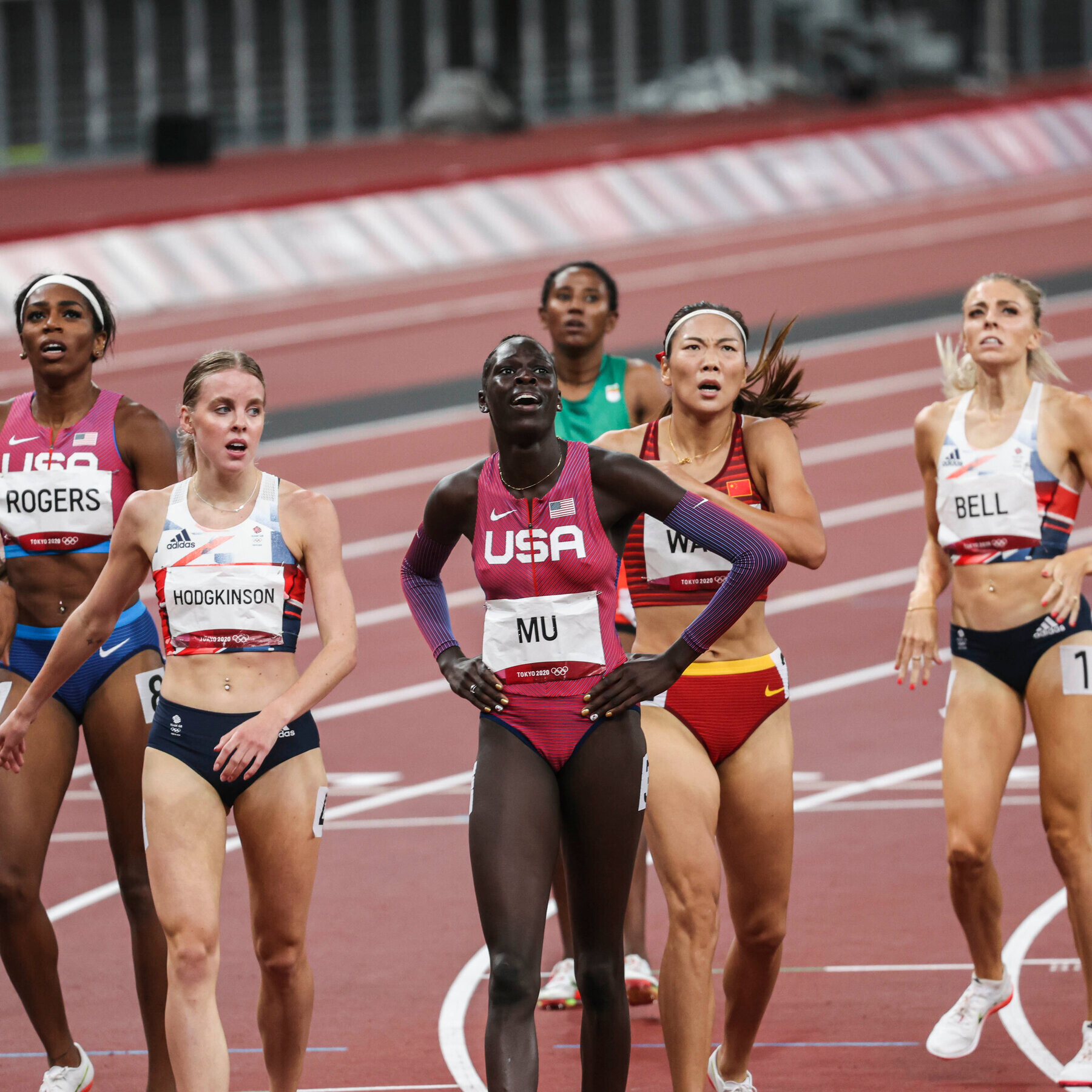
Mu made herself known as one of the world’s top track athletes in 2021 when she won the NCAA title in the 400m, and then gold medals in the 800m and 4x400m relay at the Olympic Games. The 21-year-old followed up her Olympic success with gold in the 800m in Oregon, running 1:56.30. Her US record of 1:55.04 was set in Eugene in August 2021.
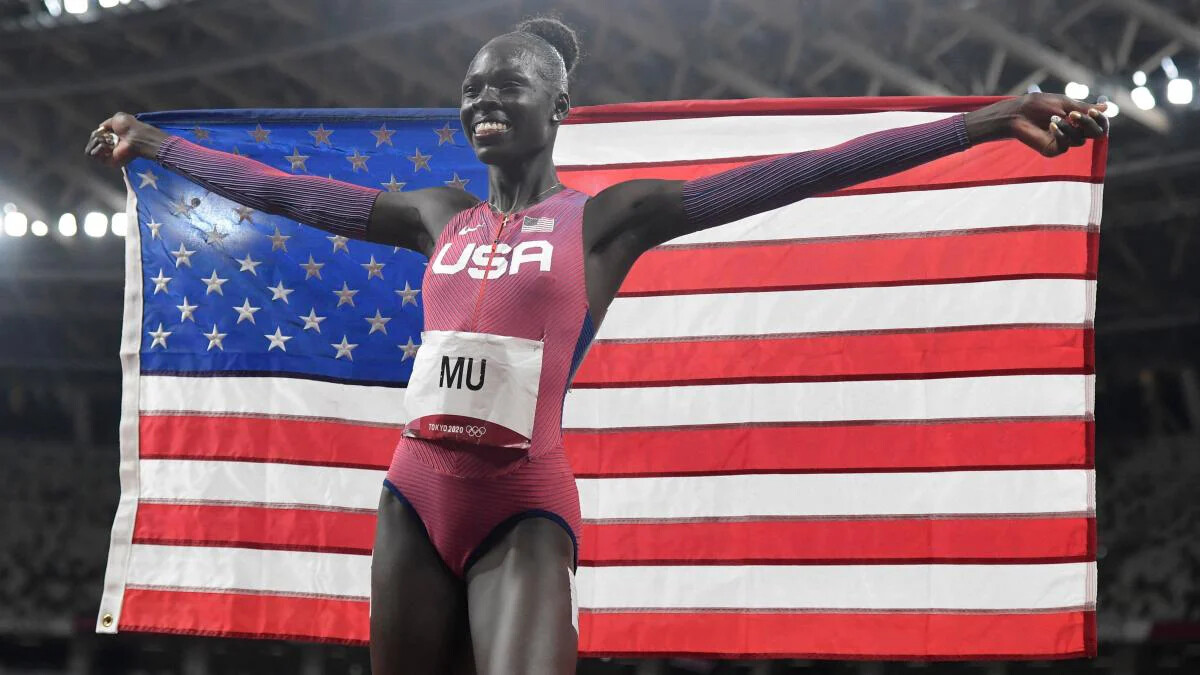
Athing Mu was born and raised in Trenton, New Jersey, and is the second youngest of seven siblings. Her parents immigrated to the United States from South Sudan, and her family is of South Sudanese heritage. She began competing in track at the age of 6. Mu did not join her high school track team, choosing to compete instead for Trenton Track Club. She graduated from Trenton Central High School in 2020
Challenging her in New York will be her fellow New Jersey native and the world indoor 800m champion Ajee’ Wilson, and the US indoor 1500m champion Heather MacLean.
In the women’s 100m hurdles, 2015 world champion Danielle Williams of Jamaica joins a field that includes Keni Harrison of the United States, the former world record-holder, and Jamaica’s Megan Tapper, the Olympic bronze medallist.
Those top athletes join the previously-announced Noah Lyles, Gabby Thomas, Zharnel Hughes, Ackeem Blake, Sydney McLaughlin-Levrone, Aleia Hobbs, Melissa Jefferson, Devon Allen, Trey Cunningham, Robert Dunning, Bryce Hoppel, Will Sumner, Chase Ealey and Maggie Ewen.
(06/21/2023) Views: 677 ⚡AMPby World Athletics
This stretch can undo a day’s worth of sitting
After an hours-long drive to your destination race or a long day sitting at your desk, you’ve likely felt the discomfort of tight hip flexors. Before you head out for your evening run or off on a pre-race shakeout, spending just two minutes performing the wall quad stretch can reverse the effects of several hours’ worth of sitting, allowing you to run freely and comfortably from the moment you head out the door. And if the name wasn’t a giveaway, it’ll loosen up your quads, too.
How to do the wall quad stretch

The wall quad stretch targets the muscles at the front of your thigh, hip and pelvis, and is an intensely effective stretch when performed correctly. This can be highly beneficial for runners, who tend to struggle with tight hips, hip flexors and quads.
Before you begin, it’s important to remember that the aim of this stretch is not to push your limits, which will create a stress response in your body and cause you to tense up even more. Instead, the goal is to ease into the stretch, and only stretch as far as you can while maintaining deep, even breaths. If your breath starts to become shallow, or you notice you’ve started to hold your breath, you’ve gone too far and should ease up.

To perform the stretch, all you need is a wall and a pillow or towel to cushion your knee. To get into the stretch, you’re going to place one knee on the floor (start about four inches or 20 cm from the wall) with your lower leg leaning against the wall behind you. Then bring your other knee forward with your foot planted firmly on the floor in front of you for balance, at a 90-degree angle to your quad.
If you’re having trouble maintaining balance, position something (like a chair) close by that you can hold on to. If you can, raise your torso to an upright position, with your hips square and your butt tucked in, while breathing deeply. Hold for one minute, then switch sides.
The closer your knee is to the wall, the more intense the stretch will be, so start at a spot that feels comfortable, then gradually move your knee closer to the wall as you breathe into the stretch.
Check out the video below for step-by-step instructions and tips to maximize the stretch. Just a minute per side in the position at the end of your work day or after a long drive will have you feeling looser and more relaxed, and ready to hit the roads, trails, or wherever your run will take you.
(06/21/2023) Views: 617 ⚡AMPby Brittany Hambleton
How often should you grab water during a 10K?
If you’re thirsty for success in your next 10K race, figuring out hydration could unlock your full potential on the pavement. But how often should you grab water during the race? We’ve got the refreshing scoop on when and how often you should take H2O, so sit back and quench your thirst for knowledge!
Lara Rogers, head coach of the Under Armour professional team UA Mission Run Baltimore Distance group in Baltimore, and mentor to future stars training for the 2024 Paris Olympics, shares her insights on hydration. With her expertise, you’ll be equipped to conquer the 10K with a well-hydrated stride.

According to Rogers, the frequency of water intake depends on factors like weather conditions, sweat rate, pre-race hydration levels and personal preferences. “For runs under an hour, your body won’t require much water, as there isn’t enough time to absorb and utilize it effectively. However, in warmer temperatures (above 24 C), consuming water every 15 minutes or 3K can help ward off dehydration.”
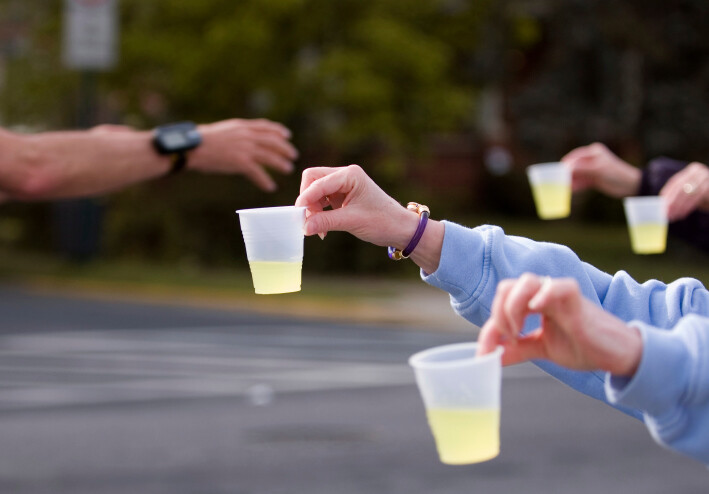
Preparation is key, and Rogers advises drinking 12-16 ounces of water a couple of hours before the race, gradually reducing intake one hour before to avoid a sloshy stomach. “During the race, if you feel dehydrated, wet your mouth and spit out the water to combat dryness while satisfying your thirst,” says Rogers.
“Listen to your body’s signals,” says Rogers. Ignoring thirst can lead to dehydration, so make use of water stations on the 10K course. Find the hydration balance that works for you and that leads to a stellar performance.
(06/21/2023) Views: 600 ⚡AMPby Marley Dickinson
Celebrity Kung Fu Monk Yan Ming Can’t Stop Running
One of the world’s leading kung fu masters has trained the Wu-Tang Clan, Björk, and Wesley Snipes. Running is central to his training. Here’s whyThough Shi Yan Ming is a world-renowned kung fu master, he was lucky to survive a poverty-stricken childhood as a peasant in China.
He was born in 1964 in Henan Province, the heart-center of the country, where Chinese civilization is said to have originated, and food was scarce. Two siblings died of starvation prior to Yan Ming’s birth, and he was a very sickly child.
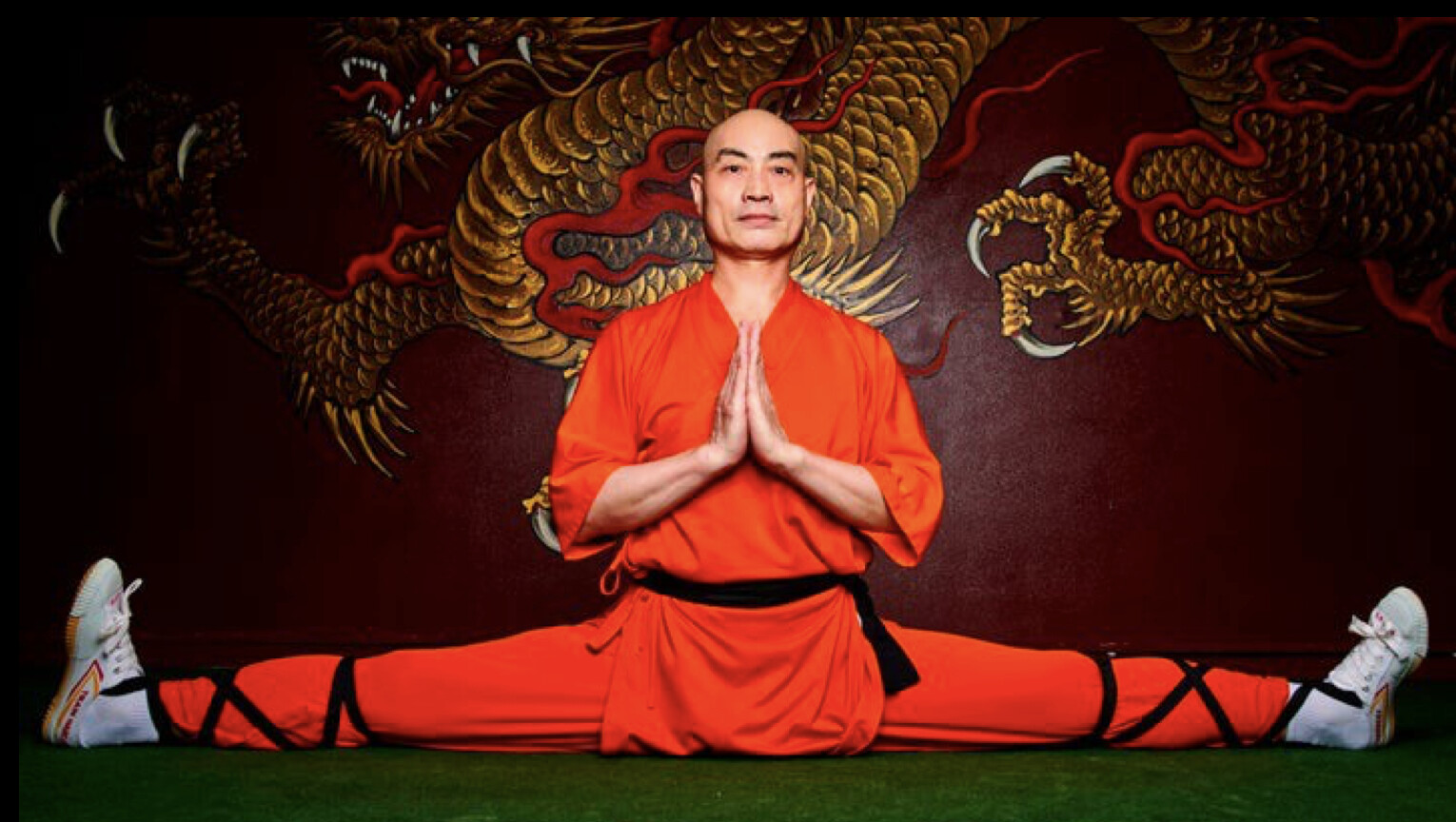

Fearing the same fate might befall him, his parents brought Yan Ming to the door of a 1,500-year-old Shaolin Temple. He was taken in by the monks there and began to live by the grueling schedule of a kung fu disciple—training, practicing, meditating, and running. His health, along with his skill, improved rapidly.
“I was running a lot in China,” recalled Shifu (an honorary title meaning “master” or “teacher”). “The temple was built in the woods, in a mountain range; I was running to build strength and endurance.”
In some ways, he has been running ever since.
In 1992, Shifu was part of a group of Shaolin monks invited to perform on a U.S. tour. The temple in which he was raised had been the original Shaolin Temple, dating back to 495 A.D., and the lineage of monks practicing kung fu and Chan Buddhism (also known as Zen) helped establish Shaolin as one of the most graceful and disciplined martial arts. Shifu, a 34th generation master, and his fellow monks gained renown for their craft and were quickly invited to display their skills on international tours.
After a show in San Francisco, California, he escaped his hotel room in the middle of the night and made his way by bus to New York City. He started the first Shaolin Temple in America in Chinatown, waking up early to go on training runs across the Brooklyn Bridge. In the intervening 30-plus years, he has taught countless others, from RZA of the Wu-Tang Clan to Björk to Wesley Snipes. He’s also appeared in several movies and helped spread the practice that has been his way of life.
Running is championed by many martial artists as a way to train both body and mind. Bruce Lee called running “the king of exercises,” and had a remarkably consistent routine to support his training. As an activity grounded in form, repetition, and discipline, it is no surprise that it is considered an essential part of training both physical and mental resilience. In recent years, Shaolin monks have even gone viral for their ability to “run” across water.
To Shifu, running is a form of “action meditation.” In kung fu, everything is an opportunity to hone one’s skill and wisdom. “Speaking is meditation,” noted Shifu. “Walking is meditation. Jogging is meditation. Everybody has different abilities. To help people individually, you can’t use one approach.”Such diversity of teachings is at the heart of the welcoming nature of the temple and Shifu’s ability to meet students where they are.
In doing so, Shifu aims to spread the Shaolin teachings of self-actualization, dignity, and compassion to as many people as possible. It is this spirit of inclusivity and access to a life-changing practice that has drawn so many to the temple.
Kirby Koo, a disciple of Shifu’s and the manager of the USA Shaolin Temple, stumbled into Shifu’s orbit seven years ago with the vague idea of getting in touch with her roots (she was raised partly in Hong Kong). After moving to New York, a childhood friend had told her that if she ever wanted to do kung fu, the best master on the planet was right there in Chinatown. She checked it out and hasn’t looked back.
“When you come from the depths of extreme poverty to training celebrities and being in Hollywood, you understand that everyone’s going through a journey and that we’re all the same,” Koo said, referring to Shifu’s ability to connect with people from all walks of life. “In the temple, everyone’s wearing the same uniform, everyone’s doing the same moves, and it doesn’t matter where you come from or what your bank account is.”Still, embracing running was not something Koo envisioned when starting kung fu.
“I used to be the type of person to be like, ‘When I run…I’m only running if it’s for my life,’” she said. Yet now Koo sees running as a form of meditation, a way to further the spiritual, mental, and physical training of kung fu by practicing with the whole body.
“Before training kung fu, I always understood that exercises are for different parts of your body—you do a bicep curl, you stretch your hamstring. But in order to maximize your power, speed, and endurance, in kung fu you use every part of your body for every move.”
Running is championed by many martial artists as a way to train both body and mind. Bruce Lee called running “the king of exercises.”
“Shifu says that the true gym is when you look into the jungle,” continued Koo. “Animals don’t lift weights. If you watch a cheetah, they use all their muscles to leap into the air and then they continue running, they don’t just use singular body parts.”
Look upon a trail or road and you might notice the same thing about a runner leaping and bounding with all of their muscles firing. This sense of a whole-body pursuit that is as much action as it is meditation—should one choose to perceive it that way—is perhaps where kung fu and running intersect.
At 59, Shifu doesn’t seem to be slowing down. Whenever he talks about practice, it is with language that is both nurturing and fierce, indicating the support and discipline required to inspire growth and maintain form.
“We are getting younger every day. We can work on getting younger every year,” said Shifu. “If you don’t sharpen a blade, it becomes rusty. We need to discipline ourselves to exercise. Young body, noble mind. Keep challenging yourself. Exercise your precious life.”As Koo noted, her job at the USA Shaolin Temple would be a lot easier if Shifu wasn’t committed to teaching all day, every day.
As the manager, Koo wouldn’t mind if the master slowed down once in a while and was more available for other aspects of temple administration. He has eschewed the potentially lucrative route that some masters of his renown might opt for, teaching only privately and emerging once in a while for a public showcase. But that is not Shifu; his aim is to make the temple and teachings available to all.
“If you’ve ever met anyone who knows what their life purpose is, rain or shine, that’s him,” said Koo. “That’s why he’s on Earth.”
Shifu wouldn’t disagree. “We have to take every opportunity we have to help out as many people as possible,” said Shifu, invoking the Buddhist roots at the heart of kung fu practice. “That’s why we’re here. You spread the word and help more people. That’s meditation.”
To Shifu, every moment, whether one is engaged in stillness or action, can be part of a way of life that is useful, powerful, and compassionate. And that is why, after all these years, Shifu is still running.
(06/21/2023) Views: 589 ⚡AMPby Outside Online
Two world records and a house for Kenya's Kipyegon
Kenya’s Faith Kipyegon, who recently set world records in the 1500m and 5000m, has received a house and 5 million KES ($35,000) following her historic feats in Florence and Paris this month.
Kipyegon met with Kenyan President William Ruto on her return to her home country, with Ruto pledging a similar monetary reward for Kenya’s future world record-breakers.
The awarding of a house to Kipyegon follows the announcement on 30 May of a new scheme in Kenya that is designed to help athletes to own property and invest their earnings. It is particularly important for female athletes, who will now be able to buy a house under their sole name.
Kipyegon – the first recipient of the scheme – ran 3:49.11 to break the world 1500m record in Florence on 2 June and a week later the 29-year-old clocked 14:05.20 in Paris to add the world 5000m record to her ever-expanding CV.
She met with Ruto at State House in Nairobi and was joined at the ceremony by her husband Timothy Kitum, the 2012 Olympic 800m bronze medallist, and their daughter Alyn.
The new scheme is the result of a partnership between Athletics Kenya and Kenyan banking institution Housing Finance Group that offers athletes affordable home ownership, financing at incentivised Kenya Mortgage Refinancing rates and links to strategic affordable housing developers.
“It is a no-brainer that having a decent shelter is one of the basic needs for human survival. Yet, for all its importance, decent housing is one of the biggest challenges that millions of Kenyans face in this country,” said Athletics Kenya President Jackson Tuwei during the launch of the partnership in Nairobi, where Hon. Ababu Namwamba, the Cabinet Secretary for Youth Affairs, Sports and the Arts, was chief guest.
“Among those affected are Kenyan sportsmen and women who struggle with balancing putting a decent roof over their heads and pursuing their ambitions on the track and field.”
Beatrice Chebet, Beatrice Chepkoech, Dan Kiviasi, Mary Moraa, Wiseman Were, Wilfred Bungei, Milcah Chemos, Catherine Ndereba, John Ngugi and William Tanui were among the current and former athletes who were present at the launch ceremony.
(06/20/2023) Views: 734 ⚡AMPHow to use heart rate variability as a training tool
As running technology gets smaller and more portable, the number of insights it offers into our health continues to grow. For wearable heart rate monitors, the tech has gone beyond simply providing data to reshaping the way many runners train and race. Instant access to the beats-per-minute (BPM) metric has made training by heart-rate zones the go-to training guide for many. Yet, there’s much more our hearts can tell us than how hard it’s working.
Heart rate variability (HRV), an increasingly popular metric for runners, offers subtle insights that our hearts reveal between the lines—or between the beats—that can help us better understand our overall running health and guide us in tweaking our training accordingly.
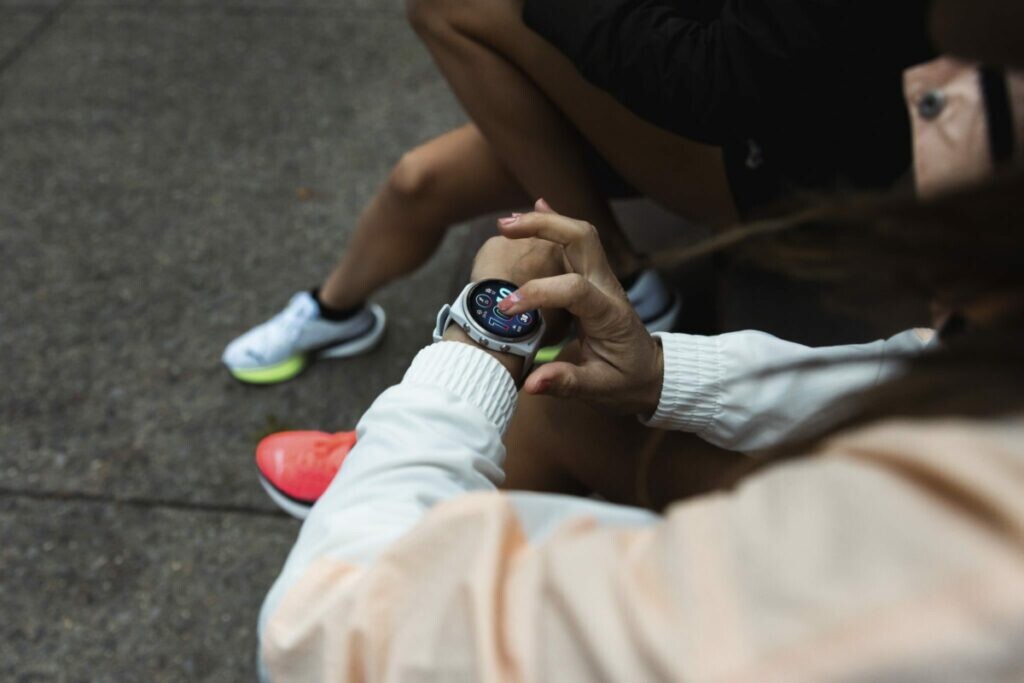
What is HRV?
Unlike heart rate, HRV focuses on the gaps between the beats. Specifically, it’s a measurement of the natural changes in tempo from one beat to the next. It’s a concept that’s probably familiar to anyone who’s ever tried playing the drums (or has lived on the same block as someone who has). An experienced drummer with rock-solid timing can hold the tempo perfectly between successive beats, so their “variability” is low. A shaky beginner who keeps striking the snare a little too early or too late, meanwhile, has high variability.
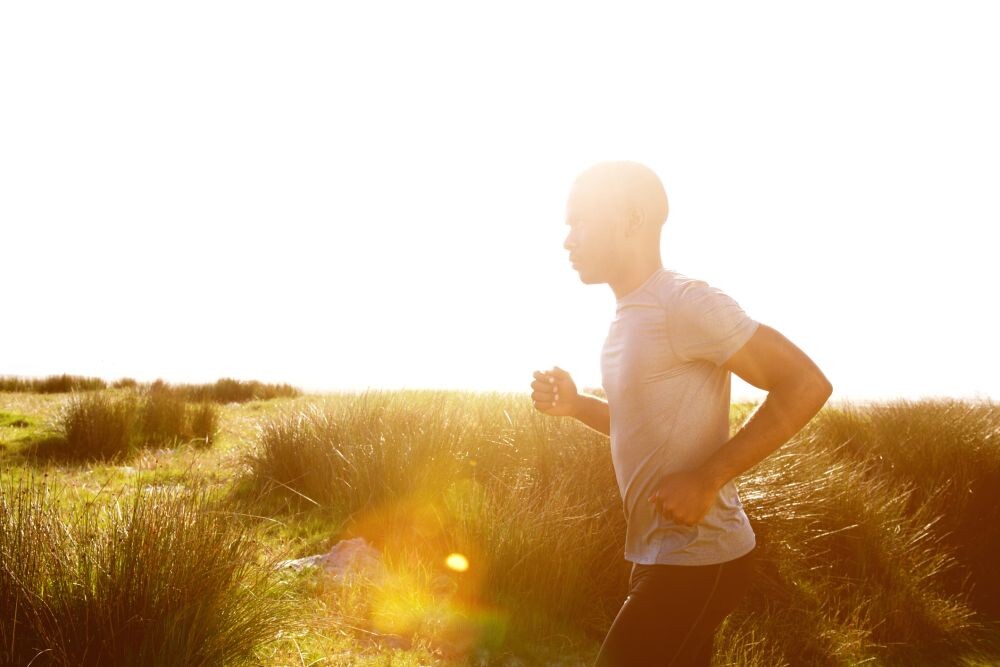
There are big differences between heartbeats and drumbeats, of course, and one in particular may make HRV seem a bit counterintuitive. While metronomic timing is great for drummers (and listeners), it’s not necessarily ideal for runners. In general, a heart that doesn’t keep the tempo exactly right between beats, like our fledgling drummer friend, reflects better overall health.
What can HRV tell us?
HRV can reflect several aspects of a runner’s overall health and fitness, for example, how well a body is adapting to training load or stress. If your HRV remains relatively high, it suggests the body is effectively recovering and adapting to the demands of your workouts. Conversely, a consistently low HRV may indicate inadequate recovery or excessive training stress, which could increase the risk of overtraining or injury.
HRV can also serve as a tool to gauge recovery. Lower HRV values are generally associated with fatigue and insufficient recovery, whereas higher HRV values indicate a readiness to perform. A higher HRV is generally associated with better cardiovascular health, overall fitness and improved autonomic nervous system function. A high HRV can also reflect the state of your mental and emotional well-being, like lower stress levels and improved mental resilience.
How is it measured?
HRV measurement is increasingly becoming a standard feature of portable running tech. It has been incorporated by companies such as Polar and Wahoo into chest strap heart-rate monitors, as well as smartwatches and fitness trackers by brands including Apple, Coros, Garmin and Fitbit. While the steps for taking measurements will vary by device, readings are taken when at rest while seated or lying down. Scores are most commonly expressed in milliseconds, with higher scores tending to reflect better overall health.
What do I do with the results?
Although HRV can provide a helpful snapshot of trends in your overall health, what the numbers mean from one runner to the next can be, rather fittingly, highly variable. As with maximum heart rate, a strong HRV score will continue to drop as runners get older, and even between healthy runners of the same age, scores can vary wildly. That’s why, when making sense of your HRV, it’s more valuable to look at which direction your numbers are trending, rather than trying to hit a score that may not reflect your overall health. Numbers that trend higher indicate improvements in fitness and overall health and may reflect your readiness to increase the intensity of your training. A string of decreasing scores could suggest one or more aspects of your overall health could use more attention.
What HRV numbers won’t tell you is what you need to fix. Because HRV can be shaped by many factors—level of physical activity, psychological and emotional stress, diet and sleep quality among them. In addition to taking HRV measurements daily, it’s important to regularly—perhaps once a week—check in with yourself on each of the above factors in your overall health, identify where you might be falling short and what changes need to be made (such as getting to bed earlier or eating more nutritious meals). Note how the changes affect the direction of your HRV scores in the coming week and see if that helps.
(06/20/2023) Views: 540 ⚡AMPby Paul Baswick
How Your Feet Recover (or Don't) After a Marathon, According to Research
New research highlights the type of damage that may occur from 26.2 miles of impact.
Participating in marathons can be a thrilling accomplishment, but it’s not always easy on the body—research has highlighted that marathon runners can be prone to serious soreness depending on muscular strength levels, as well as hamstring damage, for example. But what does it do to your feet? New research in the Scandinavian Journal of Medicine & Science in Sports finds that the larger muscles in the feet may show damage in the form of swelling and soreness for a week or more after a race.
To determine how feet are affected, researchers recruited 22 college runners who ran at least two to three times per week, and who were registered for the Mt. Fuji International Marathon in either 2019 or 2021. They used magnetic resonance imaging to measure the transverse relaxation time of the intrinsic and extrinsic muscles at four different time points: before the marathon, as well as days one, three, and eight after marathon completion.
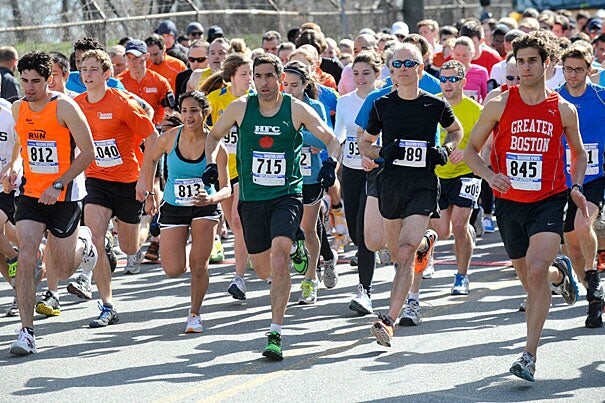
To help put that into layman’s terms: The intrinsic muscles of the foot originate and insert within the foot itself, while extrinsic muscles originate in the lower leg and connect to the foot by way of the ankle. Both types of muscles stabilize the inner arch of the foot while working to move the foot during walking and running. Transverse relaxation time, also known as T2, is a measure of muscle damage.
When comparing the T2 values, researchers found significant damage for one of the intrinsic muscles and three extrinsic muscles the day after the marathon, with values fluctuating over the course of eight days.
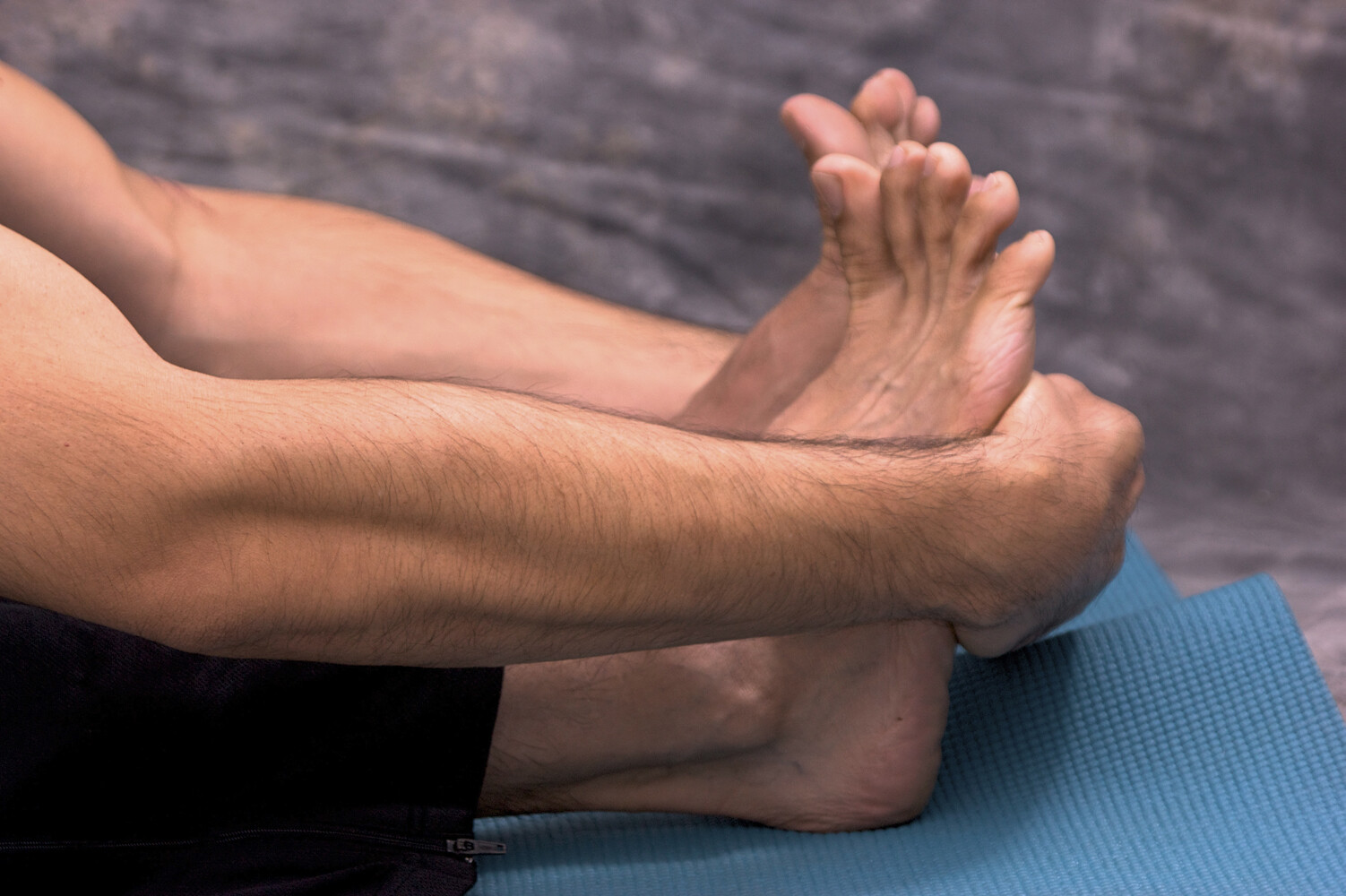
“This shows that different foot muscles are affected in different ways during a full marathon, with outer muscles more prone to damage than inner ones,” according to lead author Mako Fukano, Ph.D., researcher at the Shibaura Institute of Technology in Japan. He told Runner's World that pressure on the ankle joint during a continuous, long-distance run like a marathon would affect extrinsic muscles the most because they’re the ones that have to work harder to produce an efficient running stride.
“These findings might help for conditioning and injury prevention,” she said. “They give an indication that building strength in your feet could be important for recovery.”
In terms of how to best take care of your feet, the optimal strategy would be a combination of single- and double-leg exercises incorporated into a strength program, said Carol Mack, D.P.T., C.S.C.S.
“Strength training throughout the marathon training cycle can to help keep the foot and ankle muscles as strong as possible to run long distances,” she told Runner’s World. “For example, single-leg exercises will help isolate the stabilizing muscles in one leg at a time.”
Examples of some exercises to include in your marathon strength routine include single-leg Romanian deadlifts, single-leg squats, and Bulgarian split squats.
Another factor here is to allow time for recovery, she added. In the recent study, researchers only looked at damage in the first eight days after a race and there was still evidence of muscle damage. That means it’s unclear how long the damage may actually affect foot and ankle muscles, Mack said.
“What’s key is to understand that recovery from a marathon takes time,” she said. “In the weeks after a race, it’s important to take time off from impact exercise to let the muscles in the foot and ankle recuperate.”
(06/20/2023) Views: 456 ⚡AMPby Runner’s World
You too can Train the Kenyan Way in Kenya
Kenyan runners and many non-Kenyan runners training in Kenya have had good success. But why? These four things stand out as the reasons behind their success.
1. Training is a big part of their secrets including sloop training, intervals, fartlek and many exercise drills. They train twice a day, six times per week with the evening run easy.
2. Equally important is their diet, the Kenyan's runner diet is starch based very high in carbohydrates. Kenyan runners get 76 percent of their daily calories from carbs.
3. Almost all Kenyans train in groups, many at training camps.
4. Kenyans runners are surrounded by inspiration and positive thinking. You must believe you can run a 2:01 marathon to be able to do it. Visualization is a big part of this.
Many runners outside of Kenya have thought about training in Kenya with Kenyan runners. Some have made the trip and have had great success. But for most runners making the trip to Kenya and training for a month or more there never become more than a dream.
The main reason why it only remains a dream is because it just has not been easy to set it up. Lifetime runner Bob Anderson who also was the founder of Runner's World Magazine in 1966 and most recently the publisher of My Best Runs has made it easy for runners to come to Kenya and Train The Kenyan Way.
Bob and his wife Catherine first travelled to Kenya in 2013 and staged a race in Thika. It was during this trip he met up with Elam Wangwero, a 29-minute 10k runner who just loved all aspects of athletics. Bob and Elam talked about setting up a training camp in Thika (just an hour outside of Nairobi) during that trip.
Work started on the Kenyan Athletics Training Academy (KATA) some years later. Bob brought on board Florence Kimiti to be the manager and then hired Coach Joseph Ngure to be the head coach.
Construction was finished in September 2021. For the last two years the KATA staff have been working with Kenyan staff athletes getting them ready to accept guest athletes from around the world. The KATA staff athletes are training to become professional runners (some already are) and to help guests achieve their goals.
“COVID did slow things down for a while, says Bob Anderson, "but on June 14, 2023 we welcomed our first guest."
KATA has six private rooms for guests, each with a double bed and private bath with a shower. KATA has a total of 26 rooms including staff athletes’ rooms, office, a runners Lounge with a large TV screen, Olympic Dining Hall, Laundry room, Kitchen, massage room and a courtyard and garden so athletes can relax in between workouts.
KATA is solely set up for athletes who are interested in improving, running new PR's, becoming campions or being a professional runner. "We offer world-class training, quality Kenyan runner's food in a relaxed inspirational atmosphere with the emphasis on distance running, " says Director/Owner Bob Anderson working from his office in Mountain Views, California USA.
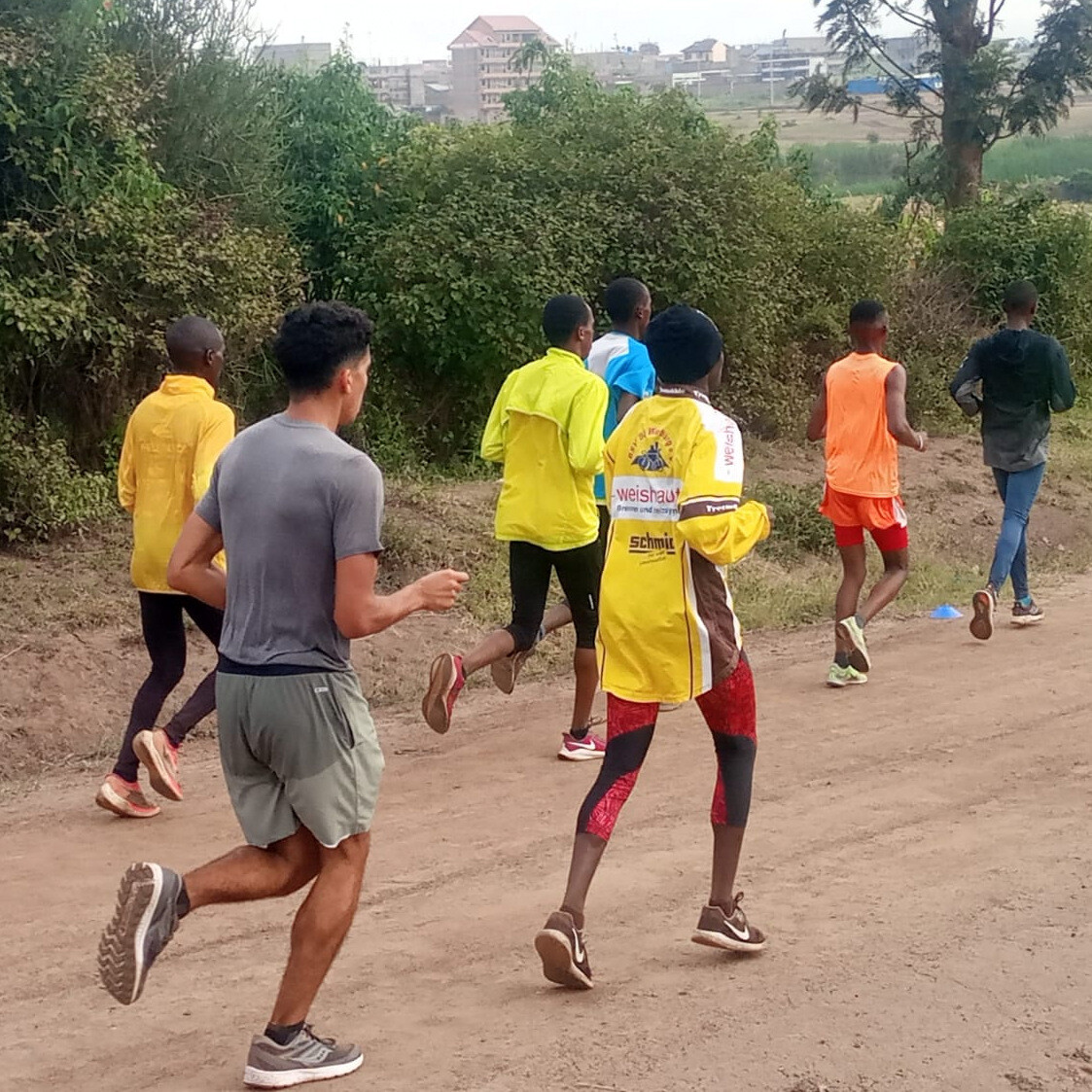
KATA’s first guest arrived on June 14th and is staying for six weeks. 20-year-old Nahim Abdallah (first and second photo) is a college student at Virginia Commonwealth University. He has clocked a 4:22 mile and recently ran a 14:31 5000m. He wants to be in top form for the upcoming cross-country season. His goal is to get under 14 minutes for 5k during his stay.
The second confirmed guest checking in July 2 for 12 weeks is Max Barnett (third photo) from England. He ran a 3:45 marathon in Paris a few weeks ago and wants to break three hours by October in Lisbon. "This is an aggressive goal," says Coach Joseph, "but we are going to help him make it happen."
"I have spoken with Max several times," says Bob Anderson "and I think we can help make this happen because of the passion Max has for running. His focus for 90 days will be running where now in England he just has too many other things getting in the way."

Bob Anderson and the team are very dedicated to this program and feel their setup is different than most. "We just have a cozy personal feel here," says onsite manager Florence. "So much positive inspiraton."
"This is your chance to Train the Kenyan Way," says Bob. All you need is a passport/visa and an airline ticket to Nairobi, Kenya. KATA will take care of everything else including picking you up at the airport. "Of course, you have to have the desire to become a better runner," says Florence, who was also a 1:59 800m runner as a junior.
"KATA offers training programs for 800m to 1-mile, 5k, 10k, Half Marathon and the Marathon" says KATA's onsite senior AK coach Joseph Ngure. "We will work with you and help you achieve your goals. Just let us know your starting point and your goals and we will provide the coaching to help you achieve it."
At any one time 12-20 Kenyan KATA staff runners are training at KATA. Most live and eat at KATA while others live nearby. These Kenyan athletes set the style of KATA as they work hard to become better runners themselves and help and support our guests.
You might be thinking that something like this must be very expensive. It is not, the cost is just $375US weekly with a minimum stay requirement of four weeks. This covers all your costs including a private room, three meals a day and world-class training.
For more info go to: www.KenyanAthletics.com
(06/19/2023) Views: 1,247 ⚡AMPby Lisa Wall
This humble sandwich is actually an incredible snack for runners
Do you remember, as a kid, being called inside after an afternoon of running around outside for a quick peanut butter and jelly sandwich (PB&J, for those in the know) and a cold glass of milk? Regardless of how you took it – crusts cut off, white bread, wheat bread, more peanut butter than jelly – it tasted like pure, unadulterated love.
Somewhere along the way, we ditched our beloved PB&Js for a more diverse lunch menu filled with chickpea salads, tuna paninis, and spinach smoothies. And while the introduction to nutrient-dense foods was essential for growing into adulthood, it’s time we look back and recognize that PB&Js are a totally underrated running snack.Let’s address the elephant in the room (who, coincidentally, would probably love PB&Js).
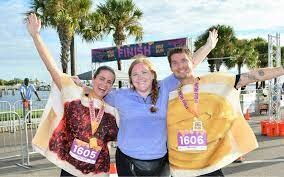
This beloved sammy can get a bad wrap as housing unhealthy and highly-processed ingredients, but, there are so many quality PB&J materials nowadays that you can feel good about whipping one up before or after a long training run.
Surprising no one, there are three ingredients in a PB&J. The bread, the peanut butter, and the jelly. Cool. Now that we have that out of the way, let’s talk about good options.
For years, shoddy “science” and a cultural gluten panic has maligned bread as “bad carbs”. However, studies show that whole wheat bread can not only be part of a healthful diet, but can reduce the risk of heart disease in adults. This is because whole grains contain essential vitamins like fiber, vitamin B, zinc, iron, and more. Plus, we as runners know how important carbs are.
A 2022 study followed dietary patterns of runners and found that those who ate whole grains over regular grains (white bread, white pasta, cereal) saw improvements in their runs.
It’s still a good idea to have a fair bit of skepticism when looking at breads in the grocery store aisle. Just because the packaging says, “Whole grains”, doesn’t mean it’s a good choice for your PB&J. Look for the 100% Stamp from the Whole Grains Council, which is a trusted third-party verifier.
You’ll also want to choose a bread that’s low in sugar (stick to six grams or less) and high in fiber.
A few examples of breads that meet these requirements are:
one slice - 110 calories
Did you know there’s a difference between jelly and jam? Jelly is made with strained fruit or fruit juice, whereas jam is made of mashed fruit. While the nutritional value of both are similar, their textures may dictate your preference. Jam often has fruit chunks in it, while jelly is smooth.
Jelly contains simple carbs and sugars, things runners love because of the ease of digestibility and quick hit of energy. Unfortunately, jelly can be high in added sugar and fructose corn syrup, so it’s best to keep an eye on the nutrition label when selecting this key part of the sandwich. That being said, sugar-free jelly is often made with artificial sugar replacements, which can cause digestive stress for some people.
You want to find a jelly made with natural sweeteners and little to no additives.An equally sticky and delicious ingredient to the PB&J is one many people steer clear from when trying to be health-conscious. But never fear! Peanut butter can be a great source of protein and healthy fats, both essential for a recovery from runs.
Some peanut butter brands often add in unnecessary additives and sweeteners to their products. Ideally, your choice should contain one ingredient: peanuts. Makes it easy, right? Look for natural peanut butters and don’t be alarmed by the oils sitting on top of a fresh jar. Simply mix before scooping.
As much as we stick to the humble, original PB&J combination, there are plenty of ways you, as a runner, can elevate your sandwich. For post runs, you can add banana slices for an extra dose of potassium and sprinkle flax seeds on top for healthy fats and extra fiber. If you’re more focused on quick, simple carbs before a run, replace bread with whole grain bagels instead.
For the more daring runners, try adding a splash of sriracha on top of the jelly and peanut butter. The heat cuts nicely with the sweet jelly and, when combined with peanut butter, tastes like Thai-inspired food. Yum.To a small saucepan on medium-low, add blueberries, chia seeds and water. Cook, stirring occasionally, until mixture takes on jam-like texture, about 10 minutes.
(06/19/2023) Views: 446 ⚡AMPby Outside Online
How to keep your momentum when traffic stalls your run
Nothing puts a cold stop to a good warmup run like the sudden flash of a traffic warning light. From short, frequent waits at downtown intersections to longer holdups at railway crossings, to drawn-out delays at lift bridges where ships saunter by at a snail’s pace, pauses caused by traffic are a reality for every runner at some point. When waiting out whatever is blocking your path, keeping your engine warm with some simple exercises can help you maintain your momentum.
Why keep moving?

Opting to keep active instead of idling during an unplanned pause can have mental as well as physical benefits. Stopping cold can disrupt a runner’s flow and mental focus, especially during a challenging run. Maintaining some level of movement can help you keep your mind engaged and prepared to throw it back into the same gear when you start moving again. Staying active when stopped also keeps blood flowing to the muscles—resting and cooling your muscles for too long can cause a performance hit, and even increase the risk of injury, once your wait is over and it’s time to pick up the pace again. Having some simple exercises up your sleeve will help you slip into active standby mode. Consider these suggestions for coping with delays of varying durations.
Traffic signals: waits of 30 seconds to two minutes
For brief, predictable stops at city intersections, where waits to cross the street typically last mere seconds to around two minutes, running in place is probably the most intuitive and practical way to keep your body moving. Transitioning from a run to a stationary jog—and back again—maintains the flow of activity with no interruption. It’s also a form of exercise that doesn’t take up any additional space, which is important when running on busy city streets where sidewalk real estate is at a premium. Running on the spot makes it easy to gauge and manage the intensity of your movement when waiting for the light to change. Those pacing themselves by heart rate can easily adjust their effort (which could be cadence, kick height, or both) to stay in the same target heart-rate zone they were in while on the move.
Railway crossings: waits of up to five minutes
While running in place might also be appropriate to wait out zippier commuter trains, getting stuck at a rural railway crossing by a seemingly endless stream of lumbering cattle cars might call for a less monotonous approach. For medium-length pauses that are too long for running on the spot, but too short to make doubling back on your route worth your while—particularly if you’re strict about not exceeding your distance goals—a mix of exercises will keep your blood pumping and help the time pass more quickly.
Consider rotating between routines that focus on different muscle groups in one- to two-minute intervals. This might include working your core by performing a plank, followed by two minutes of dynamic stretching (targeting gluteal muscles and hamstrings for a minute each) and finishing with mobility exercises such as front- and side-leg swings.
Lift bridges: waits of 10 minutes to eternity (seemingly)
Fortunately, the longest traffic delays runners are likely to face tend to be the easiest to plan around. Such is the case with boat and ship traffic. In areas such as Ontario’s Niagara region, where the Welland Canal cuts through streets in several communities, raised lift bridges can stop runners for 20 minutes or more. The most practical option for staying in motion when a raised bridge blocks your route is to have an alternate route at the ready. Or, depending on the training-run goals, it may be worth rethinking your gameplan entirely—if the route you’ve mapped out for your two-hour long run risks leaving you stuck at a bridge at the 90-minute mark, stick to a course where exceedingly long traffic tie-ups won’t jeorpardize your training targets.
(06/19/2023) Views: 463 ⚡AMPby Running Magazine
The benefits of adding strength training to your running routine
Running is one of the most popular sports in the world for people who want to stay fit. It offers many benefits and gives the participants lots of endorphins to get them through the day.
Although running alone is a great form of exercise, there is more you can do to become the best runner you can be. Below are some of the many benefits of adding some strength training to your normal running routine.

Strengthen Muscles Around Joints
Because running is such a high-impact sport, runners are more likely to develop injuries like shin splints and pulled muscles. Simple strength training exercises can help build and strengthen the muscles around the joints in the knees, ankles, and hips.

These are the areas where injuries and long-term pain can occur, so it is better to start strengthening the body before problems occur than to experience an injury and have to take time off of running.
Increased Bone Density
Running is a sport that will keep you strong and increase your bone density, but strength training can do that as well. According to the Mayo Clinic, prolonged strength training will make your bones denser, which is important for runners.
Denser bones mean less chance of diseases like osteoporosis later on in life. That means more years of running long into the future.
Running Longevity
Runners who integrate strength training into their weekly workout schedule may be able to run for longer. Running is known to be quite hard on the body because it is so high-impact. Because of this, many runners are not able to continue running into their 40’s, 50’s, or 60’s because of injuries or long-term wear and tear.
Doing exercises to strengthen your body early on in your running career will help you to continue running and staying fit for many more years.
It Offers An Alternative to Running
Even runners know that it is not good for you to run every single day of the week. Adding strength training to your routine gives certain muscles a break and offers others to get stronger. A good weight training routine interspersed with long and short runs creates a well-rounded workout routine that will keep you fit. Additionally, strength training gives your whole body a break from the intensity that running brings. The key to a good exercise routine is variety.
Creates a Social Atmosphere
Although runners can form friendships on the running path, it is hard to have real conversations when running. Often running takes all of the breath you have and none can be wasted on conversation.
Adding strength training to your running routine gives you and your running buddies the opportunity to chat, share running advice, and just get to know each other better.
Strength training is an activity that is growing in popularity and shows no signs of slowing down. The decision to add strength training to your routine as a runner will only help you to grow as an athlete. Once you consider these benefits, run to the gym and get a spot on the bench before they are all taken.
(06/18/2023) Views: 647 ⚡AMPby Colorado Runner
This Groom Literally Ran to the Altar Last Weekend
He ran a marathon from his family’s lake house to the wedding venue—and then said “I do.”
People deal with pre-ceremony jitters and mark the occasion of their wedding in myriad ways. Sometimes that entails a shot of whiskey, taking a long walk, or practicing yoga. For one Chicago man, running a marathon to his wedding venue last weekend was just the ticket.

On Thursday, before saying “I do,” Chicago runner Simon Tanzman laced up a pair of black New Balance trainers and completed his “Running to the Altar” marathon, hoofing it from his family’s lake house to his wedding venue, the Morris Estate in Sawyer, Michigan. In a video interview with ABC 57 just 24 hours before the wedding, Tanzman told the local news station how he got the idea to tackle this nuptial run. “So this started because about a year ago I decided to just randomly see about how far was it from our cabin in Sawyer, Michigan to the wedding venue, and it was 21 miles—almost a marathon, but 5 miles short,” he said. “Probably a stupid idea, but I was like, ‘Hey babe, what would you think?’ ‘Whatever you want, babe.’ And here we are.”
Holly Hurston fully supports her husband’s running goals. She said, “He just really loves to challenge himself, and any kind of goal he can attain … he’s not crazy.”
By the time the festivities began late Saturday afternoon, the groom was all cleaned up and dressed to the nines in a light gray suit with purple accents, dancing up a storm with his bride. You’d never know he’d just pulled off such a daunting athletic feat.
Tanzman started running as a hobby a few years ago to get in shape and says he fell in love with the sport. Including his run to the altar, he’s run five marathons, three official races, and two solo, self-created challenges. The first of those runs, taken up early in the pandemic when most races and events were canceled or virtual, was one Hurston created for him, called the “Hippity Hoppity Holly Half.”
She made a custom race T-shirt for Tanzman, and had him run a path along Lake Michigan, waiting for him along the course with water, Gatorade, and snacks, “just always being there for him, showing my support and love for him,” she said.
“I couldn’t have done it without her driving around the course,” said Tanzman.
That kind of mutual love and support surely bodes well for the couple’s marriage, and is sure to give the newlywed wings at Tanzman’s next race, October’s Chicago Marathon
(06/18/2023) Views: 532 ⚡AMPby Runner’s World
Elisha Barno becomes winningest men’s runner in Grandma’s Marathon history
The country’s 12th largest marathon represented by 56 different countries was welcomed back into the Northland on Saturday morning, Grandma’s Marathon.
During the full marathon in the elite men’s division, Elisha Barno continued to bring his best to the race earning his fifth, first place finish at Grandma’s Marathon with a PR of 2:09:14.
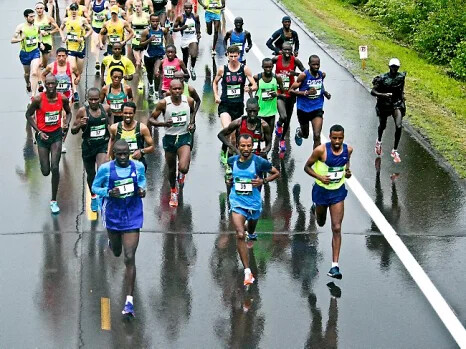
Barno shaved 18 seconds off of his previous time and currently owns three of the top four finishes at Grandma’s Marathon.
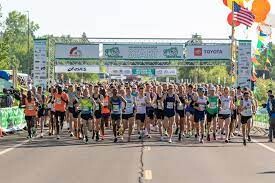
The Kenyan is now also the winnigest men’s runner in the history of Grandma’s Marathon.
(06/17/2023) Views: 646 ⚡AMPby Alexis Bass
Grandmas Marathon
Grandma's Marathon began in 1977 when a group of local runners planned a scenic road race from Two Harbors to Duluth, Minnesota. There were just 150 participants that year, but organizers knew they had discovered something special. The marathon received its name from the Duluth-based group of famous Grandma's restaurants, its first major sponsor. The level of sponsorship with the...
more...Kimutai wants to emulate Wanyonyi ahead of Budapest
Fast-rising Kelvin Koech Kimutai is looking to emulate former world under-20 800m champion Emmanuel Wanyonyi in the two-lap race. Kimutai, who also won the East Africa 800m title, has set his focus to represent Kenya at the World Athletics Championships in Budapest Hungary, in August.
To realize his dream, Kimutai is hoping to finish on the podium when he lines up at the national athletics championships next week at the Nyayo Stadium in search of the qualifying time for Budapest.
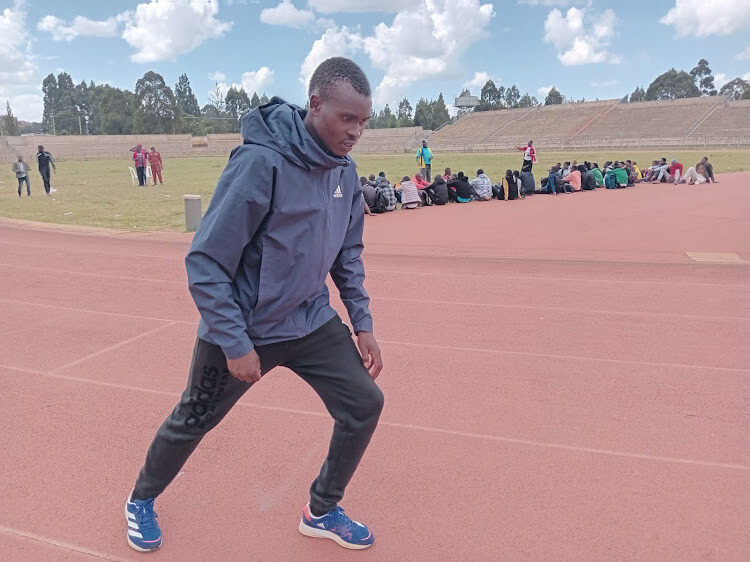
Last Saturday, he finished second in both the 400m and 800m during the AK Central Rift Championships at the Kipchoge Keino stadium in Eldoret. “I managed to double in the 400m and 800m finishing second but I want to run well and be in position one at the national championships next week,” he noted.
The 17-year-old says he wants to run well so that he can qualify for world championships come August. He said he is motivated by the consistency he has displayed in his past assignments.
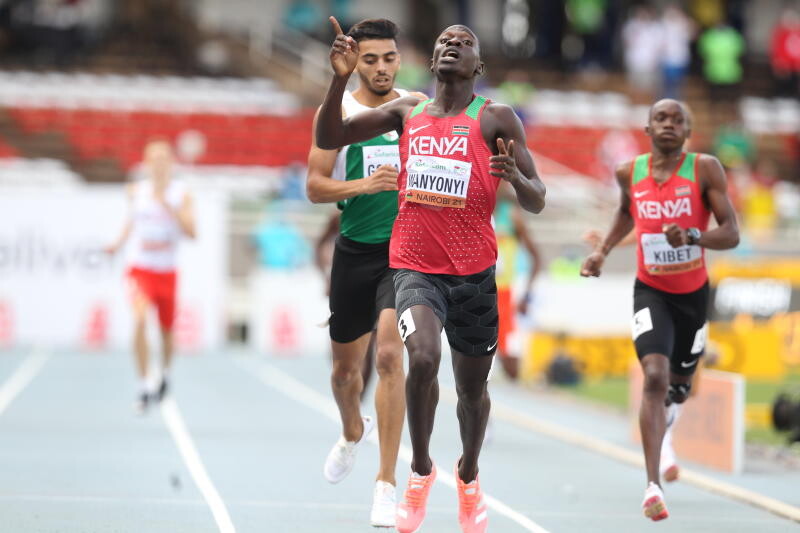
“I won my first medal at East Africa Championships in Tanzania and went on to win in Lusaka during Africa U-18/20 Championships. These wins have motivated me to look for more accolades,” said Kimutai.
Koech is a Form Four student at the Kosirai Secondary School in Nandi County. Wanyonyi, who has now won two back-to-back Diamond League series titles—Rabat and Paris—also attended the same school.
“My dream is to keep winning on the international stage and fly the country’s flag high. Wanyonyi, who is my role model and a former schoolmate inspires me with his performance,” he revealed.
(06/17/2023) Views: 626 ⚡AMPby Africa-Press
World Athletics Championships Budapest 23
From August 19-27, 2023, Budapest will host the world's third largest sporting event, the World Athletics Championships. It is the largest sporting event in the history of Hungary, attended by athletes from more than 200 countries, whose news will reach more than one billion people. Athletics is the foundation of all sports. It represents strength, speed, dexterity and endurance, the...
more...Samuel Naibei set to run at next Nairobi Marathon
Iten International Marathon champion Samuel Naibei has confirmed participation at next Nairobi City Marathon.
Speaking in Iten on Thursday after receiving his Sh1 million cheque for winning the inaugural Iten race in December last year, Naibei said he has set his focus to compete in the Nairobi International Marathon.
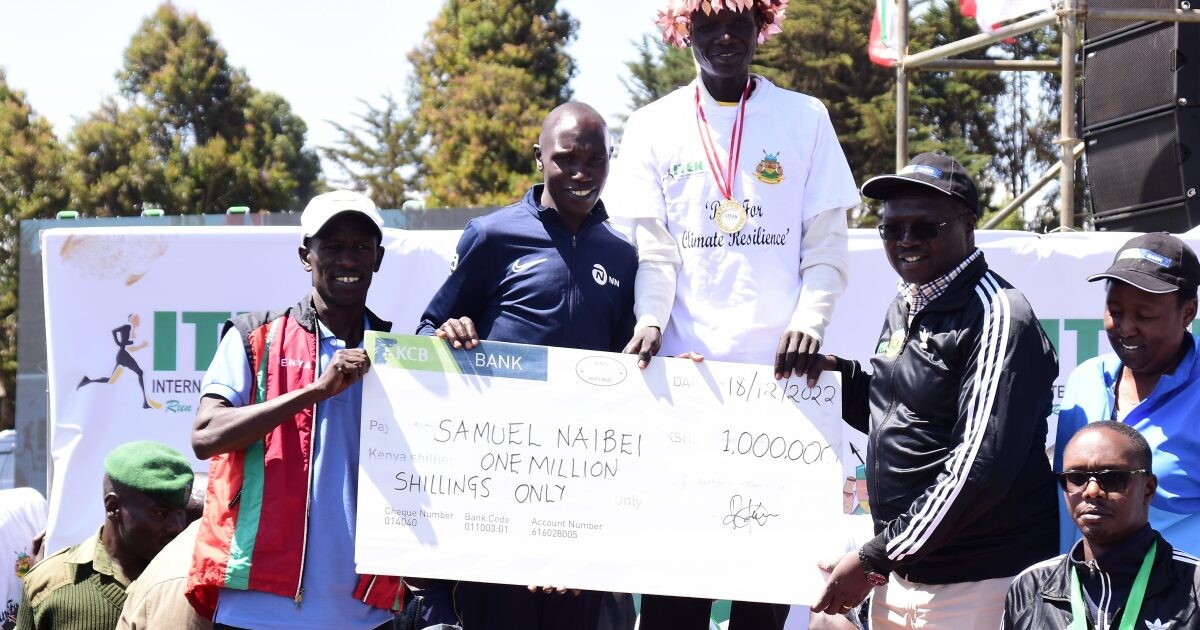
“I will be competing at the Nairobi Marathon that will mostly be concentrated on the Expressway” he said.
“Just a month ago, I competed at the Nelson Mandela Half Marathon in South Africa, which I won in 61 minutes. I am ready to improve on it.”
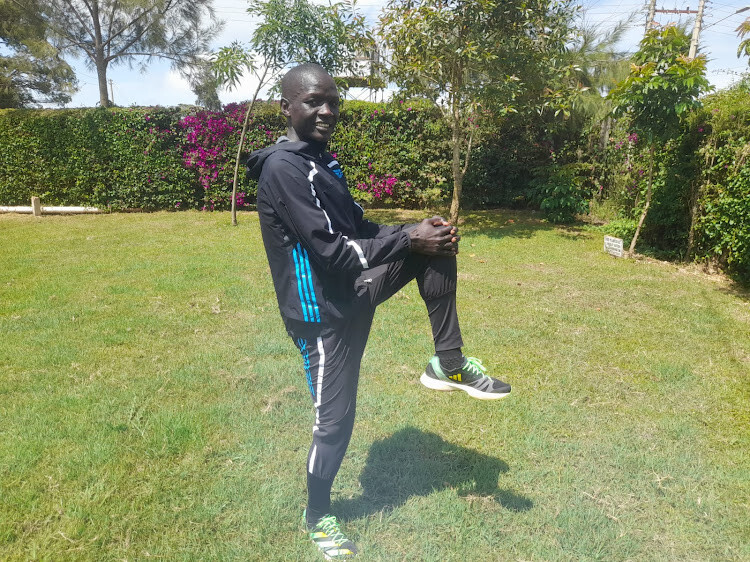
Naibei won the men’s race in Iten while Caroline Jepchirchir ruled the women’s category.
In Iten, Naibei edged out experienced marathoners on his debut including Albert Kangogo among others in a time of 2:08:43. Joshua Kogo came second in 2:10:35 while Kangogo completed the podium positions in 2:11:46.
Naibei said they are on course as far as training is concerned and promised to do well in Nairobi. “Running 2:08 in Iten is easy but not so good for me. I want to do more,” he said. “We are running well in this region because coaches are doing a great job.”
(06/17/2023) Views: 564 ⚡AMPby Emmanuel Sabuni
NAIROBI MARATHON
Nairobi Marathon is an annual road running competition over the marathon distance held in October in Nairobi, Kenya. First held in 2003, the competition expanded and now includes a half marathon race along with the main race. It was part of "The Greatest Race on Earth", fully sponsored by Standard Chartered Bank....
more...Rodgers Kwemoi to make half marathon debut at Antrim Coast Half Marathon
The 2016 World Under-20 10,000m champion Rodgers Kwemoi will make his first half marathon appearance this year at the Antrim Coast Half Marathon, a World Athletics elite event, on August 27.
Kwemoi had a successful outing last season, reigning supreme at the N Kolay Istanbul half Marathon and later finishing second at the Ras Al Khaimah half Marathon in the United Arab Emirates.
He opened his 2023 season with a 10th-place finish in the 10,000m at the 31st Kanakuri memorial middle-and long-distance Invitational Meet.
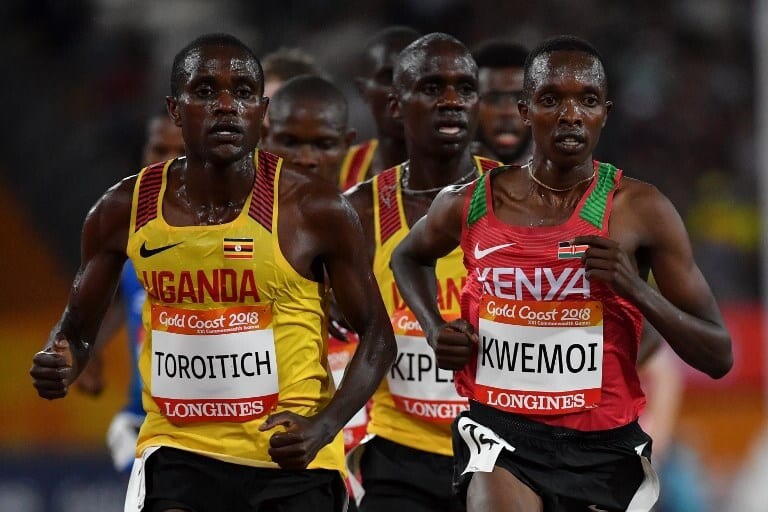
He then finished ninth in the 10,000m at the 1st Nittaidai Challenge Games before finishing third at the 67th Central Japan Corporate Teams Athletics Championships.
He will be looking for his first win when he takes on opponents in the Irish capital for the first time.
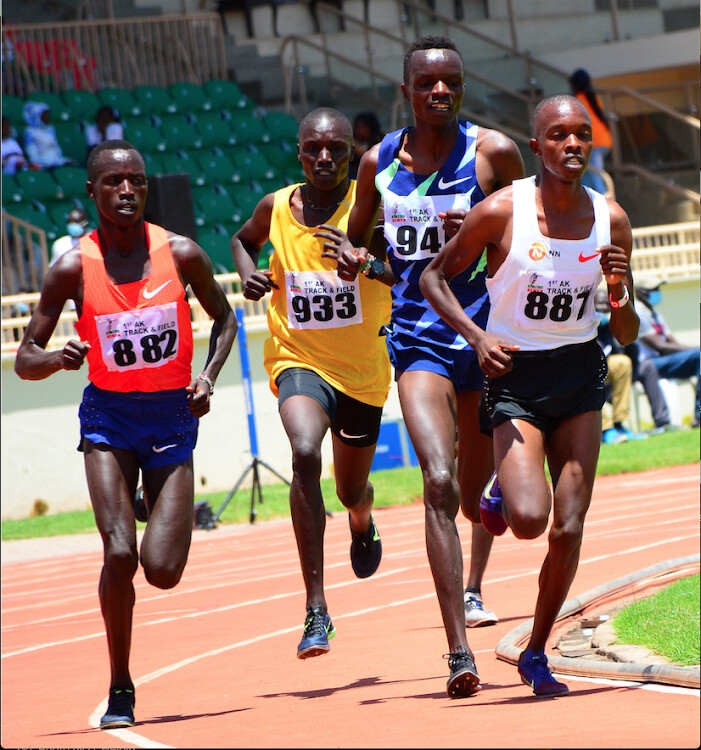
Another athlete who has confirmed participation is Great Britain’s Callum Hawkins who will be opening his season at the event.
His last race was last year’s Valencia half Marathon where he fizzled out to finish in a disappointing 28th place.
The 2017 Marugame half-Marathon champion will be looking for a fresh start when he takes on his opponents. He returns to Ireland after a seventh-place finish during last year’s event.
(06/17/2023) Views: 525 ⚡AMPby Samuel Nganga
MEA ANTRIM COAST HALF MARATHON
The MEA Antrim Coast Half Marathon 2022 has been approved by World Athletics as an Elite Event. The World Athletics certified course takes in some of the most stunning scenery in Europe, combined with some famous landmarks along the route. With it's flat and fast course, the race is one of the fastest half marathons in the world. Starting...
more...Danish dad smashes stroller half-marathon record
Breaking records in marathon running is no easy feat, but Danish distance runner and new dad Jacob Simonsen managed to do just that, in a rather unconventional way. With his one-year-old son, Viggo, safely tucked in a jogging stroller, Simonsen blazed through the Aarhus City Half Marathon on June 11, setting an unofficial stroller half-marathon Guinness World Record of 68:04.
Simonsen, 28, shattered the previous record by a whopping 34 seconds, averaging a speed of nearly 19 km/hr around Aarhus. Simonsen is quite an established runner domestically, earning the title of Danish champion at the 2023 Copenhagen Marathon, where he placed ninth overall in 2:14:46. He has also represented Denmark at the 2019 and 2023 World Cross-Country Championships.
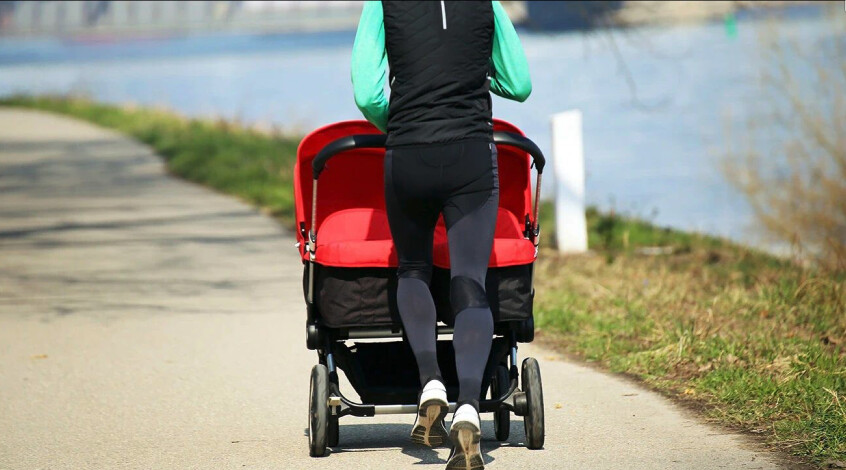
Before the race, he told Danish reporters that he isn’t used to running with a stroller, but thought it would be a fun challenge with his newborn son. His main concern heading into the race was making sure his son didn’t wake up from his nap unhappy about this endeavour. Luckily, things went as planned. “Viggo was a champ throughout the race,” said Simonsen. “He seems to have inherited his father’s sense of adventure and love for the thrill of running.”
Typically, stroller runners start at the back, but to ensure fair competition and Simonsen’s bid for the record, he was granted a position at the front. He also had another runner follow him to capture the attempt on video and make the feat official, a requirement for a Guinness World Record.
Simonsen finished fifth overall, only a minute and a half behind the winner, Omar Hassan, who won in 66:31.
(06/17/2023) Views: 591 ⚡AMPby Running Magazine
Is Wavelight technology good for the sport?
Last week at the Paris Diamond League, we witnessed one of the most extraordinary single-day spectacles in the history of the sport. Over the course of two hours, two world records and a world best were shattered; the races were nothing short of spectacular, particularly when Faith Kipyegon skilfully closed the gap on the Wavelight during the final two laps, leaving Ethiopia’s Letesenbet Gidey in the dust and achieving the seemingly impossible: a new women’s 5,000m world record.
The question of whether Wavelights are beneficial for the sport remains subjective, with opinions among track fans varying. On one hand, they enhance the performance and make races more engaging for spectators at the track or watching from home. On the other hand, they provide a precise pacing strategy for elite athletes, potentially facilitating faster times and diminishing the traditional element of intense competition.What is Wavelight technology?
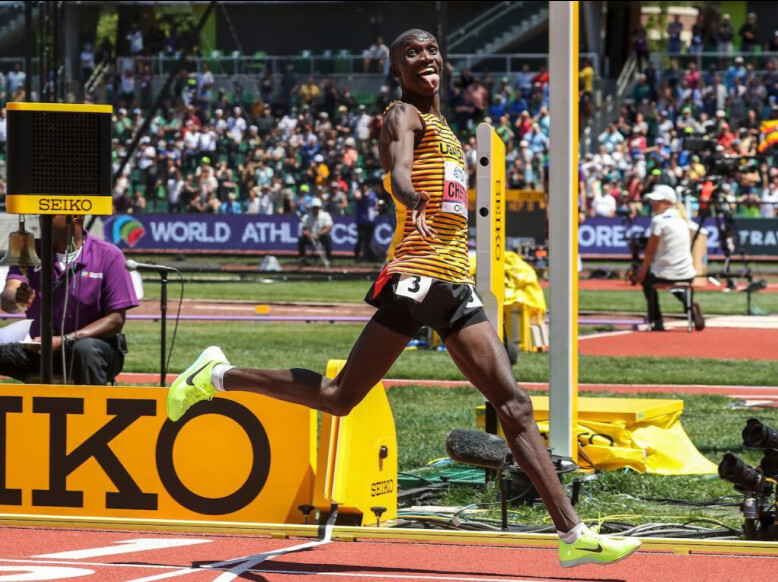
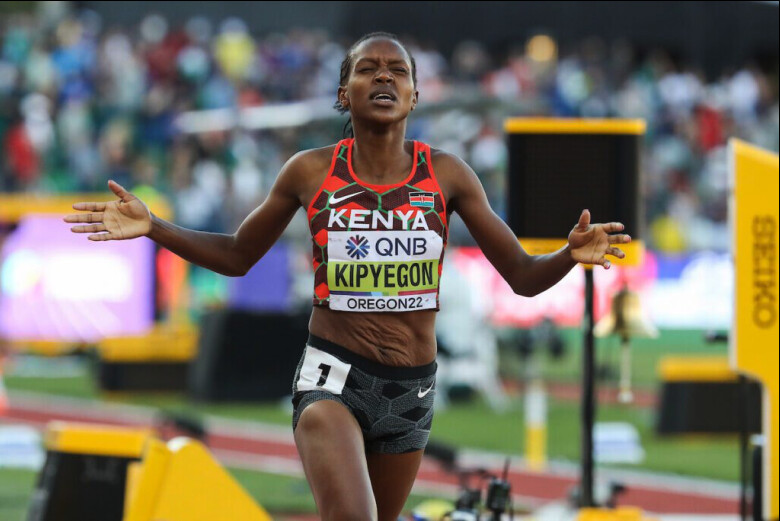
Wavelight technology, named for the Mexican Wave, was introduced by World Athletics in 2019. It serves as a tool for athletes and spectators, offering assistance with pacing and providing a visual representation of the race’s progression. A wave of lights appears along the inside edge of the track, moving at the desired pace for the race. Typically used in distance events like the 800m, 1,500m, or 5,000m, these lights are programmed to signify specific benchmarks, such as world championship standards, meeting records or world record times.Pros
People are drawn to track and field events to witness athletes breaking records, and Wavelight can serve as a valuable tool for athletes to gauge their paces and attempt to break records. A notable example: at the Paris Diamond League on June 9, where Jakob Ingebrigtsen of Norway and Lamecha Girma of Ethiopia ran ahead of the lights to set new records in their respective races. In Girma’s case, the lights pushed and challenged him throughout the 3,000m steeplechase, with Girma narrowly staying ahead in the final 100m to break the previous world record by one second.
Girma’s reliance on the lights became evident as his pace dropped off after 1,000m, and he had to dig deep to maintain the pace set by the flashing lights. Without them, it is unlikely he would have achieved the record.Track and field has faced challenges since the departure of Usain Bolt in 2017, with the sport seeking its next superstar. The success of major events like the World Championships and the Olympic Games significantly increases the sport’s popularity.
World Athletics recognizes the importance of world or national records in the Diamond League circuit, which contribute to increased viewership. The implementation of Wavelight technology allows athletes to run faster and challenge these record times, catering to the audience’s desire for exciting and fast-paced performances.While not every race will produce record-breaking times, Wavelight enhances the potential for thrilling performances that captivate viewers and generate greater interest in the sport.
Cons
When Ingebrigtsen shattered Daniel Komen’s two-mile record, which had stood for 26 years, my immediate thought was how fast Komen could have run with today’s technology. Komen had pacers guide him through the first 2,000m before running the final kilometre alone against the clock. Similarly, Ingebrigtsen had pacers until around the 2,000m mark, but they gradually dropped off, leaving him with a lead of 10-15 metres over the lights.
Depending on the race style or purpose, I believe Wavelight can have a positive impact on the sport. But they also detract from what track and field is fundamentally about—the world’s best athletes competing against one another. Watching a Diamond League event where one athlete outpaces the rest of the field by 15 to 20 seconds in the 3,000m steeplechase does not benefit the sport. While celebrating superstars is important, track and field legends like Komen, Kenenisa Bekele, Genzebe Dibaba and David Rudisha never had events specifically set up for them to chase world records.
They achieved their records in the heat of competition, racing against other competitors. This is where I believe Wavelight technology crosses a line.A compelling comparison was published in Track & Field News in 2020, analyzing the current and former 10,000m world records—Joshua Cheptegei’s record with pace lights versus Bekele’s record without them. The analysis revealed that Cheptegei maintained much more even splits than Bekele, with a variance of less than a second (0.8s) between his kilometres, which is truly remarkable. In contrast, Bekele’s variance was five times greater, with a difference of nearly five seconds between his fastest and slowest kilometres.I am not suggesting that Wavelights are ruining the sport of track and field, but I believe their use should be limited to specific situations, such as aiming for world standards or being present only during the final lap or two of distances ranging from 1,500m to 10,000m.
By implementing such limits, World Athletics can strike a balance between using technology for pacing assistance and preserving the essence of competitive racing.
(06/17/2023) Views: 805 ⚡AMPby Running Magazine
Snow causes course change at Leadville Marathon
The Leadville Race Series crew has been putting in the work on Mosquito Pass (which sits at 13,185 feet) for this Saturday. However, despite their best efforts to clear Mosquito Pass, Mother Nature has prevailed with heavy snow and freezing temperatures and the Life Time Leadville Trail Marathon & Heavy Half presented by La Sportiva will unfortunately not be able to reach the summit of Mosquito Pass on Saturday.
The team has altered both courses to turn around slightly below the summit and additional mileage has been added elsewhere to maintain course distances of 26.2 and 15.7 miles respectively.
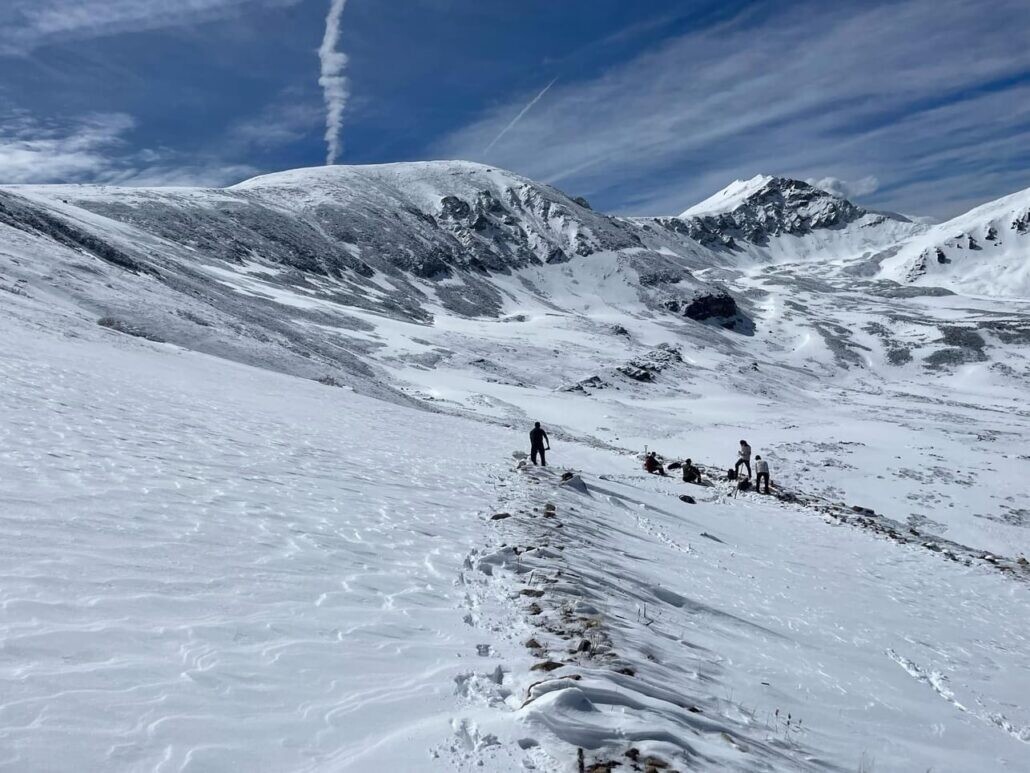
Race Director Tamira Jenlink’s note:
Hello Leadville Race Family! We look forward to seeing you on the start line of the 2023 Life Time Leadville Trail Marathon presented by La Sportiva on Saturday!
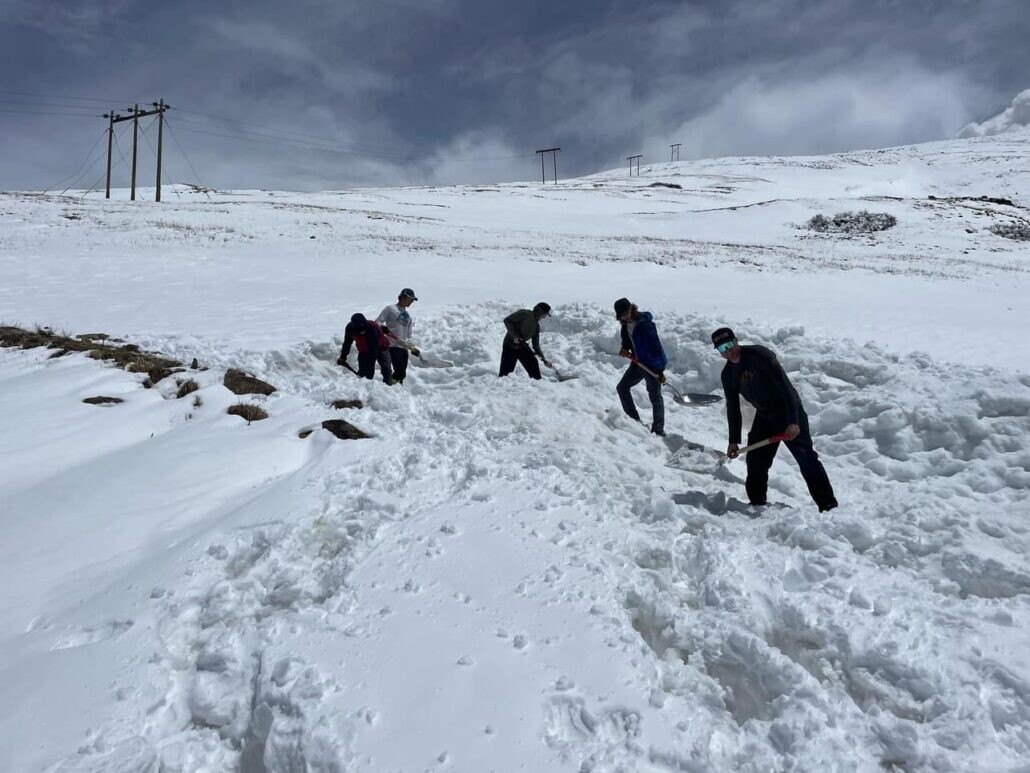
This year has most certainly kept true to the nature of Leadville with snow still falling above 11,000′ as I write this. Our crews have used every ounce of GRIT, GUTS and DETERMINATION possible to remove the last 1.5 miles of snow on Mosquito Pass. While this is still a bit short of the top, we will absolutely not disappoint! We have made minor modifications to the course to ensure every mile will continue to deliver those lung busting climbs, and spectacular views you have been training for, while ensuring your safety and overall experience.
Don’t forget your mittens and maybe a jacket as you may very likely have the quintessential experience of ! running in the snow! See you on Saturday!
(06/16/2023) Views: 760 ⚡AMPby Colorado Runner
Leadville Trail Marathon
Run through the historic mining district’s challenging old mining roads and trails, and hit a high of 13,185 feet at Mosquito Pass during the Blueprint for Athletes Leadville Trail Marathon or Heavy Half Marathon. The views will leave you breathless, if you’re not already. This exciting race is hosted in the Historic Mining District located on the east side of...
more...Allyson Felix speaks out for change after death of former teammate
U.S. Olympic legend Allyson Felix has spoken out, emphasizing the need for better maternity care for black women in America to ensure that the death of her former teammate Tori Bowie is not in vain. Bowie tragically died at the age of 32 last month due to complications during childbirth.
In an article for Time Magazine, Felix, a seven-time Olympic champion, expressed her concern, saying, “Three gold medalists from that 4x100m relay team in Rio set out to become mothers. All three of us, all Black women, had serious complications. Tori passed away. We’re dealing with a Black maternal health crisis. We have three Olympic champions, and we’re still at risk.”
In 2018, Felix gave birth prematurely at 32 weeks, after being diagnosed with pre-eclampsia, a potentially life-threatening pregnancy condition characterized by high blood pressure. Tianna Madison (formerly Bartoletta), another member of Felix and Bowie’s gold-medal-winning 4x100m relay team, also revealed that she faced a near-death experience during childbirth, after going into labour at 26 weeks.
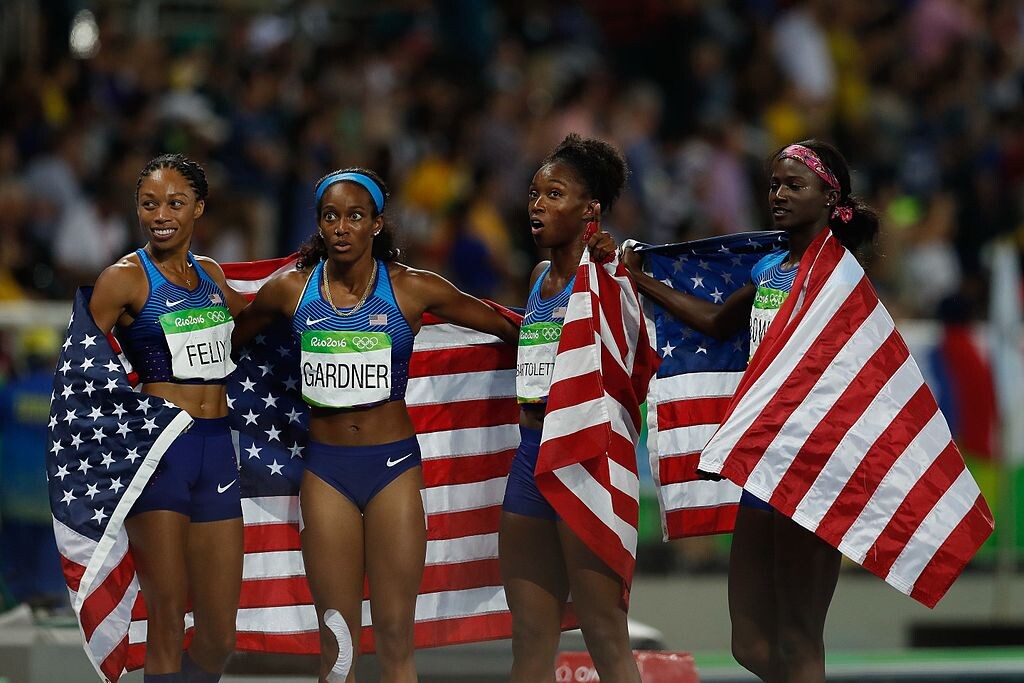
Felix brought attention to data from the Centers for Disease Control and Prevention (CDC) in 2021, which showed that the maternal mortality rate for Black women in the U.S. is 2.6 times higher than that for white women. Similarly, a 2021 study by the University of Oxford demonstrated that Black women in Britain were four times more likely to die during pregnancy and childbirth than white women.
Underlining the urgency of the situation, Felix stated, “There needs to be a change, now, especially in light of Tori’s tragic passing.” Felix also mentioned celebrities Serena Williams and Beyonce, both of whom had near-death complications during pregnancy. “I hate that it takes Tori’s situation to bring attention to this issue,” writes Felix. “But often, it serves as a wake-up call.”
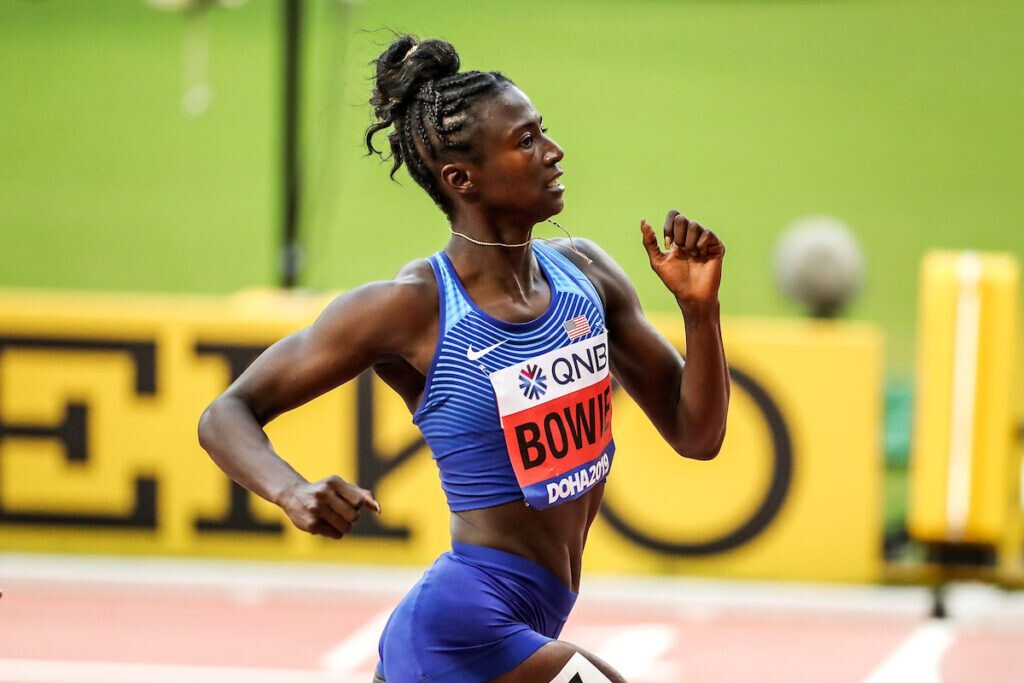
Expressing her concern about having more children, Felix called on the medical community to address the challenges faced by Black women. “Doctors need to have conversations with pregnant Black women and educate them about the signs to look for during pregnancy,” writes Felix. “We are at a greater risk of experiencing these complications.”
Despite the challenges, Felix remains hopeful that “things can get better.” She expressed her hope that Bowie’s death will result in much-needed changes to health care for Black women.
(06/16/2023) Views: 561 ⚡AMPby Running Magazine
Sebastian Coe welcomes perfect stage for the world’s best athletes to shine at WCH Budapest
“With the introduction of the super-fast Mondo track of the National Athletics Center, the stage is set for exhilarating battles and historic performances at the upcoming World Athletics Championships in Budapest,” said World Athletics President Sebastian Coe after running the first lap on the new track, accompanied by local young athletes.
The build up through the one-day meetings of the Wanda Diamond League and the Continental Tour have seen some thrills and spills already.

And you don’t need to wait long for finals. They have been set throughout the Championships from the first day, Saturday 19 August. All athletes are looking for a loud crowd to keep them focused on medals and records. But a passionate home crowd is super important to Hungarian athletes and their performances.
On day one, the men’s shot put is the first final in the stadium – defending champion Ryan Crouser (USA) broke the world record recently and will duel with two-time world champion Joe Kovacs (who may be in a USA vest but has family ties much closer to here – his grandfather is from the village of Szentpéterfa in Hungary).

For those who want a weekend of watching the strongest men in athletics, Sunday 20 August features the men’s hammer throw.
“I don’t need to tell the people of Hungary that there is a huge national tradition in this event. Five of Hungary’s 10 Olympic athletics gold medals are for the hammer. And Hungary’s very own Bence Halász, who won the European Athletics silver medal in Munich last year and bronze at the World Championships in Doha in 2019 will be wanting his home crowd to give him a little extra muscle,” added President Coe.
The National Athletics Center in Budapest, a brand new, purpose-built facility, is emerging as the Central European region's athletics stronghold.
“As Budapest and the whole country prepares to welcome athletes from more than 200 countries; for Central European fans this is a unique opportunity to see the world’s best athletes compete in their own region. My message to all of you is don’t miss out. Book your tickets and your place in history now,” – added the World Athletics President
This historic occasion marks the first time in the 40-year history of the World Athletics Championships that a Central European country has been granted the opportunity to host the world's third-largest sporting event.
"We are organizing the biggest sporting event of the year, and the level of interest we have already witnessed is extraordinary. With tens of thousands of international fans and our very own passionate Hungarian supporters, we have already sold over 190,000 tickets.
The World Championships will be broadcast to an estimated one billion viewers worldwide, bringing immeasurable value and pride to Hungary," stated Kristóf Szalay-Bobrovniczky, Minister of Defence and responsible for Sport and the World Athletics Championships Budapest 23 organization.
The Minister encouraged fellow sports enthusiasts to witness the remarkable performances of Hungarian athletes firsthand, cheering them on throughout the thrilling opening weekend and celebrating their potential podium finishes.
On Saturday, the track that witnessed Sebastian Coe's inaugural lap will be open for everyone to experience, ahead of the world's top athletes competing in August. The National Athletics Centre's family opening day on June 17 invites participants to enjoy the track and engage in races, free of charge. Additionally, participants can seize the opportunity to purchase tickets for the World Athletics Championships in Budapest, from August 19 to 27, at an exclusive 50% discount. Secure your tickets now at tickets.wabudapest23.com.
(06/16/2023) Views: 550 ⚡AMPby World Athletics
World Athletics Championships Budapest 23
From August 19-27, 2023, Budapest will host the world's third largest sporting event, the World Athletics Championships. It is the largest sporting event in the history of Hungary, attended by athletes from more than 200 countries, whose news will reach more than one billion people. Athletics is the foundation of all sports. It represents strength, speed, dexterity and endurance, the...
more...Benson Kipruto shares recipe for success ahead of Boston 10k race
The 32-year-old will be competing at the Boston 10km race on June 25 where he will be up against a strong field.
The 2021 Boston Marathon champion Benson Kipruto has insisted that athletes should embrace teamwork when competing in long-distance races.
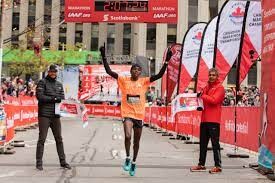
The reigning Chicago Marathon champion revealed that if the pack of athletes has a main goal, they should work together and ensure their goal is realized.
“My tip for racing with friends and teammates is if you are competing for a common target, you should help each other to half or even three-quarters of the race.
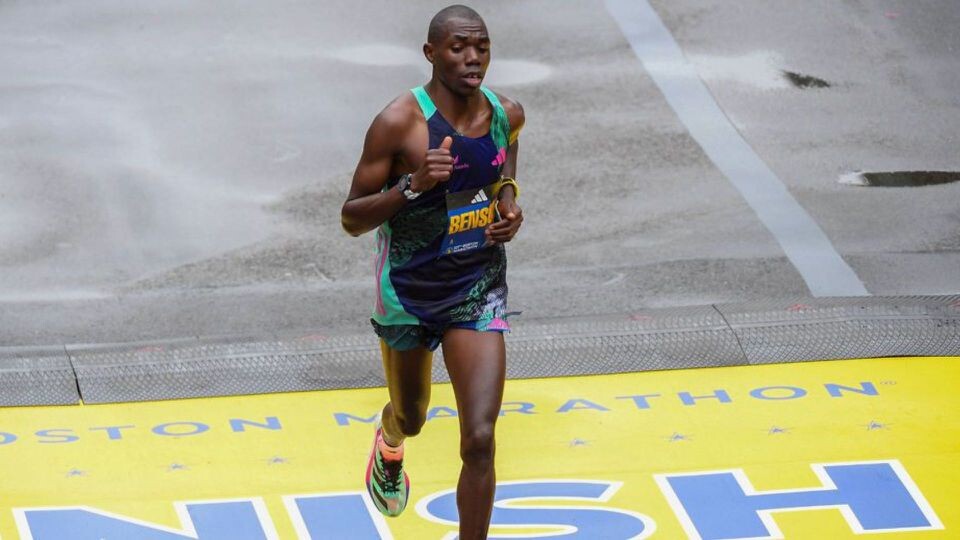
"From that point, anyone who feels strong should go…this will help the rest of the athletes to react and push to their limits. This might help them to get their personal bests,” he said.
The 32-year-old will be competing at the Boston 10km race on Sunday, June 25 where he will be up against a strong field. He plans to execute the strategy in order to set a new PB time.
The race has attracted defending champion Leonard Korir and Gabriel Geay of Tanzania who will be returning after a runner-up finish at April’s Boston Marathon. He had also previously won the B.A.A. 10K in 2018.
Decorated road racers Edward Cheserek of Kenya and Zouhair Talbi of Morocco will also be fighting for top honours. Geoffrey Koech, the winner of last year’s Boston Half Marathon, will also be competing, as will Callum Hawkins of Great Britain, twice the fourth-place finisher at the World Championships marathon.
(06/16/2023) Views: 561 ⚡AMPby Abigael Wafula
B.A.A. 10K
The 6.2-mile course is a scenic tour through Boston's Back Bay. Notable neighborhoods and attractions include the legendary Bull and Finch Pub, after which the television series "Cheers" was developed, the campus of Boston University, and trendy Kenmore Square. ...
more...Jakob Ingebrigtsen to chase his national record at Oslo Diamond League
At the Paris Diamond League last week, the incredible Norwegian athlete and Olympic 1,500m champion Jakob Ingebrigtsen achieved a remarkable two-mile world best. On Thursday evening (afternoon for viewers in North America), the 22-year-old superstar will be competing in his home country, aiming to challenge his national record of 3:28.32 at the Oslo Diamond League.
Jakob’s WR bid
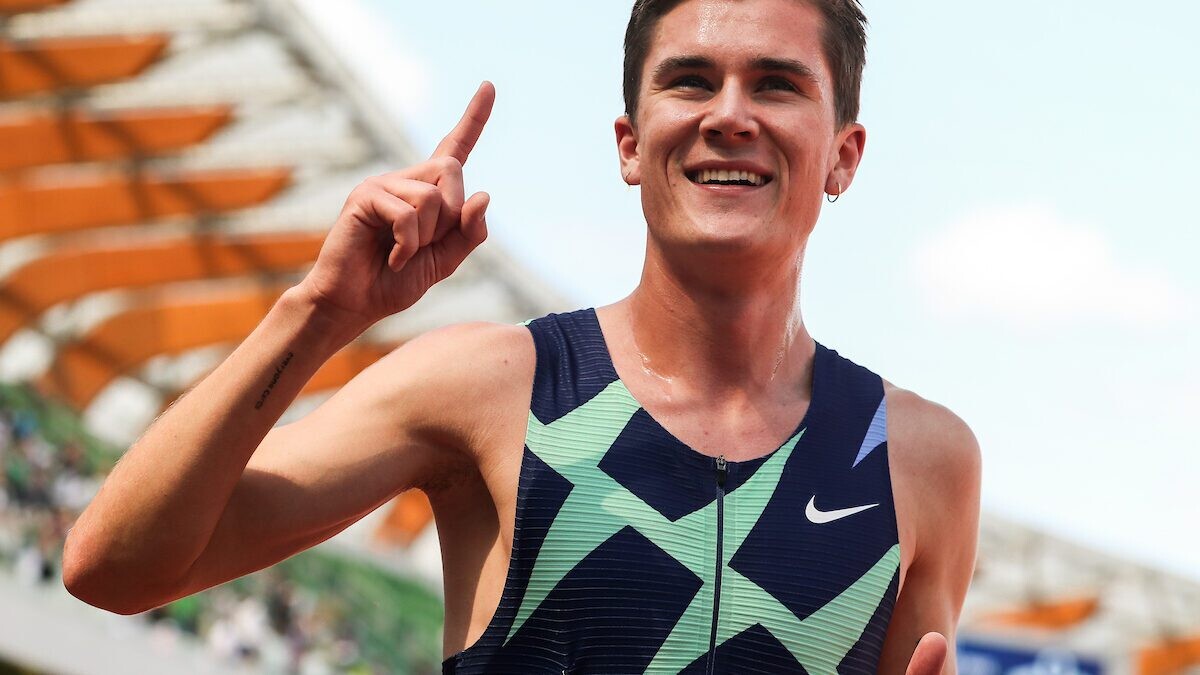
Ingebrigtsen headlines a deep men’s 1,500m field, featuring the silver and bronze medallists from Tokyo 2020, Kenya’s Timothy Cheruiyot and Josh Kerr of Great Britain. Other notable athletes are American Yared Nuguse and Mohamed Katir, who came off a Spanish national record performance over 5,000m in Florence two weeks ago, taking the win in 12:50.79.
During the pre-race press conference, Ingebrigtsen put his confidence on display and said he’s eager to chase a personal best and even take a shot at Hicham El Guerrouj’s 1,500m world record of 3:26.00 “If I break the world record Thursday, I deserve a statue,” said Ingebrigtsen. The Bislett Games meet director responded: “If you do it, I’ll personally set up a statue outside Bislett [Stadium].”
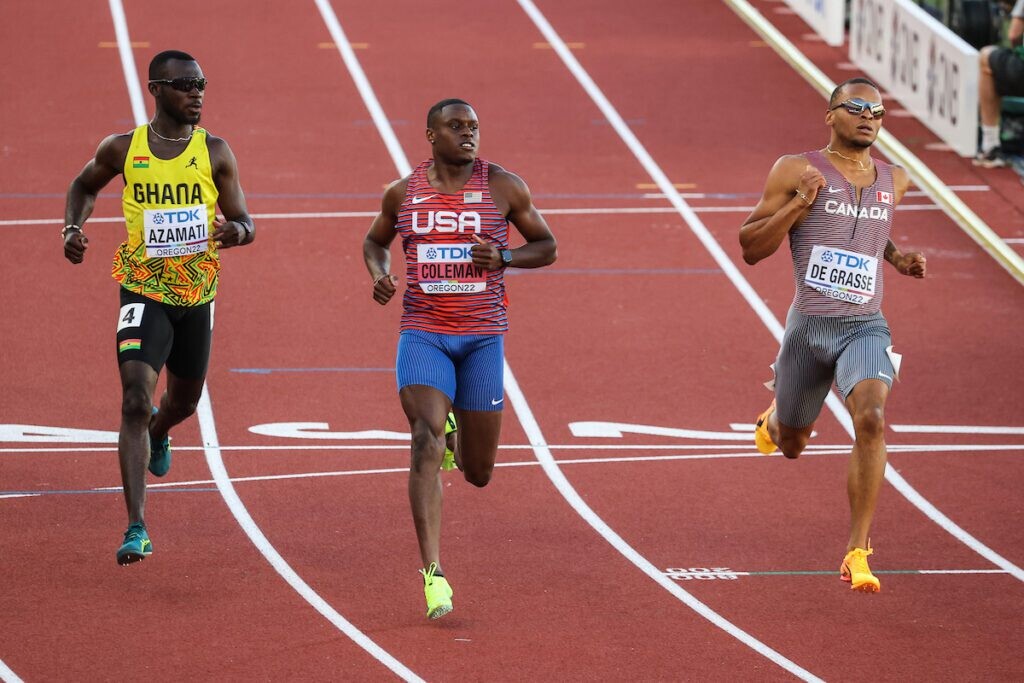
Although there has been a lot of world record talk from Ingebrigtsen and the media, the Wavelight pace in the 1,500m will be set to the meeting record of 3:29.12, going through 800m in 1:52 and the first kilometre in 2:19. Ingebrigtsen will have to close the final 500m in 66 seconds and a sub-53-second final lap if he hopes to take down the world record.
Canadians in Oslo
Two prominent Canadian athletes are competing at Oslo Diamond League Thursday. Olympic 200m champion Andre De Grasse looks to get his season back on track in the men’s 200m. The last year hasn’t been easy for De Grasse, changing coaches, battling injury and a slow start to the 2023 season. In his first three 200m race of the season, he has struggled to dip under the world championship standard mark of 20.24 seconds, a time he has frequently sailed under over the last two seasons. In his first Diamond League race in Doha on May 5, his turnover in the final 70 metres wasn’t there, and he faded to sixth in 20.35. It’s been three weeks since his last race, and he will come into Oslo as one of the favourites on paper, having the second-fastest personal best in the field after the young American, Erriyon Knighton.
Canadian mile and 1,500m record holder Gabriela DeBues-Stafford had a successful outing in her Diamond League return in Florence two weeks ago. After a full year off due to injury, the 27-year-old Olympic finalist ran to a season’s best 4:03.64 over 1,500m. She will come into the Oslo Diamond League as the top-ranked woman in the mile event. This race in Oslo should be more tactical and better suited for DeBues-Stafford’s racing style than the 1,500m in Florence, which resulted in a new world record for Faith Kipyegon.
Two other athletes who will be a tough test for DeBues-Stafford are Jessica Hull, who recently set an Australian record of 3:57.29 in Florence, and Ethiopian rising star Birke Haylom, who ran a giant personal best of 3:57.66 for third place at the Rabat Diamond League. DeBues-Stafford’s mile best is 4:17.87 from Monaco Diamond League in 2019, but any result under 4:23 for her would be a step in the right direction as she continues to prepare for the 2023 World Athletics Championships later this summer.
(06/15/2023) Views: 585 ⚡AMPby Marley Dickinson
The 22nd KATA Time Trail in Thika Kenya saw many seasonal bests for 10k
The June Kenyan Athletics Training Academy Time-Trial took place on Thursday in Thika with a majority of the athletes attaining their Season Best.
Peter Mwaniki clocked 29:33.6 to win the 10kilometres while upshot Levis Kuria clocked 14:59.6 as his Personal Best in ruling the 5Km when the monthly event were staged on the The Mang'u - Ndarugo Road on Thursday morning.
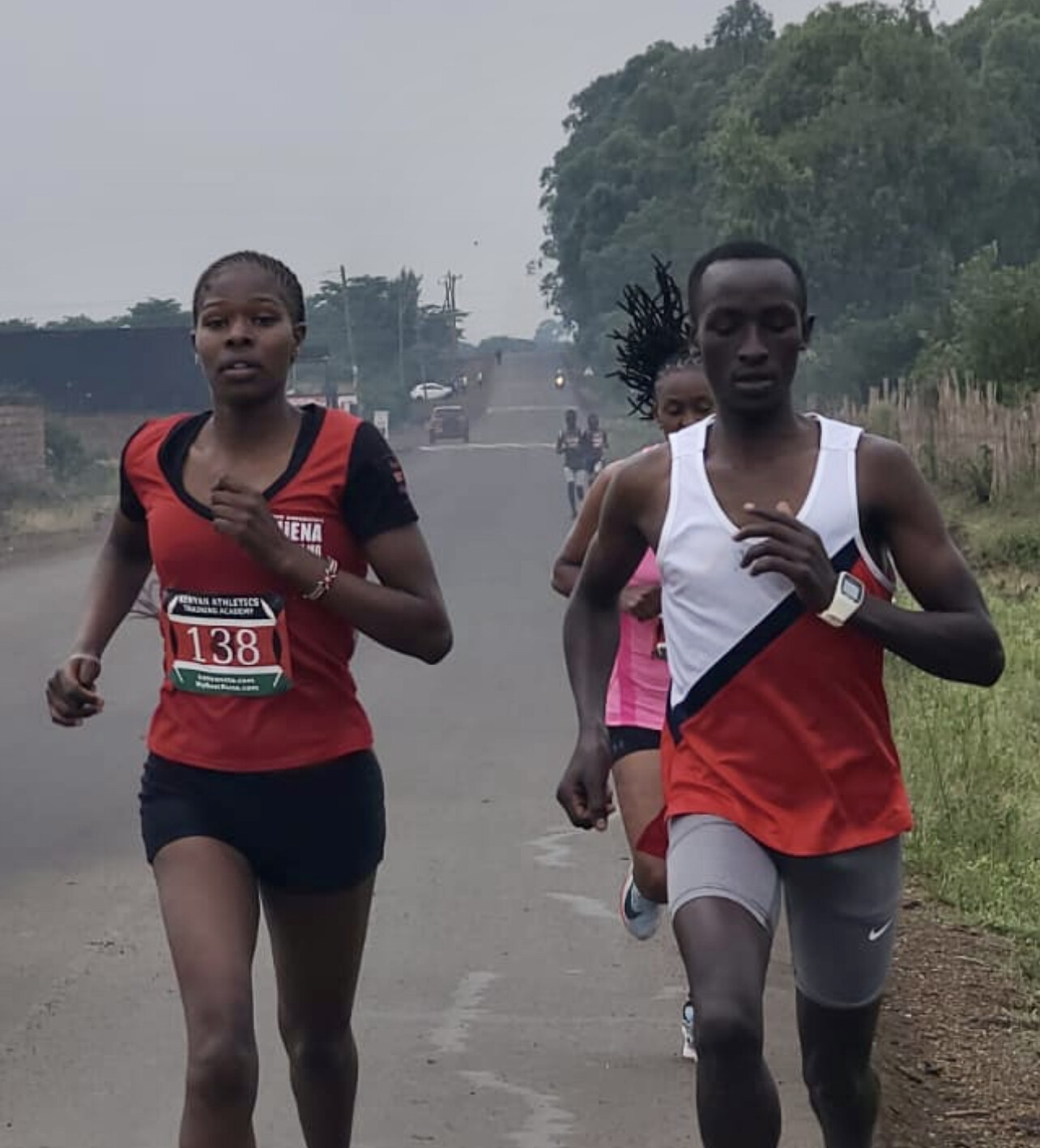
In Women, Catherine Njihia was unchallenged in the 10Km trial clicking 34:26.7 followed by Maureen Nairesiae who clocked 41:49.8 while Nancy Githaiga closed the category in 45:38.7
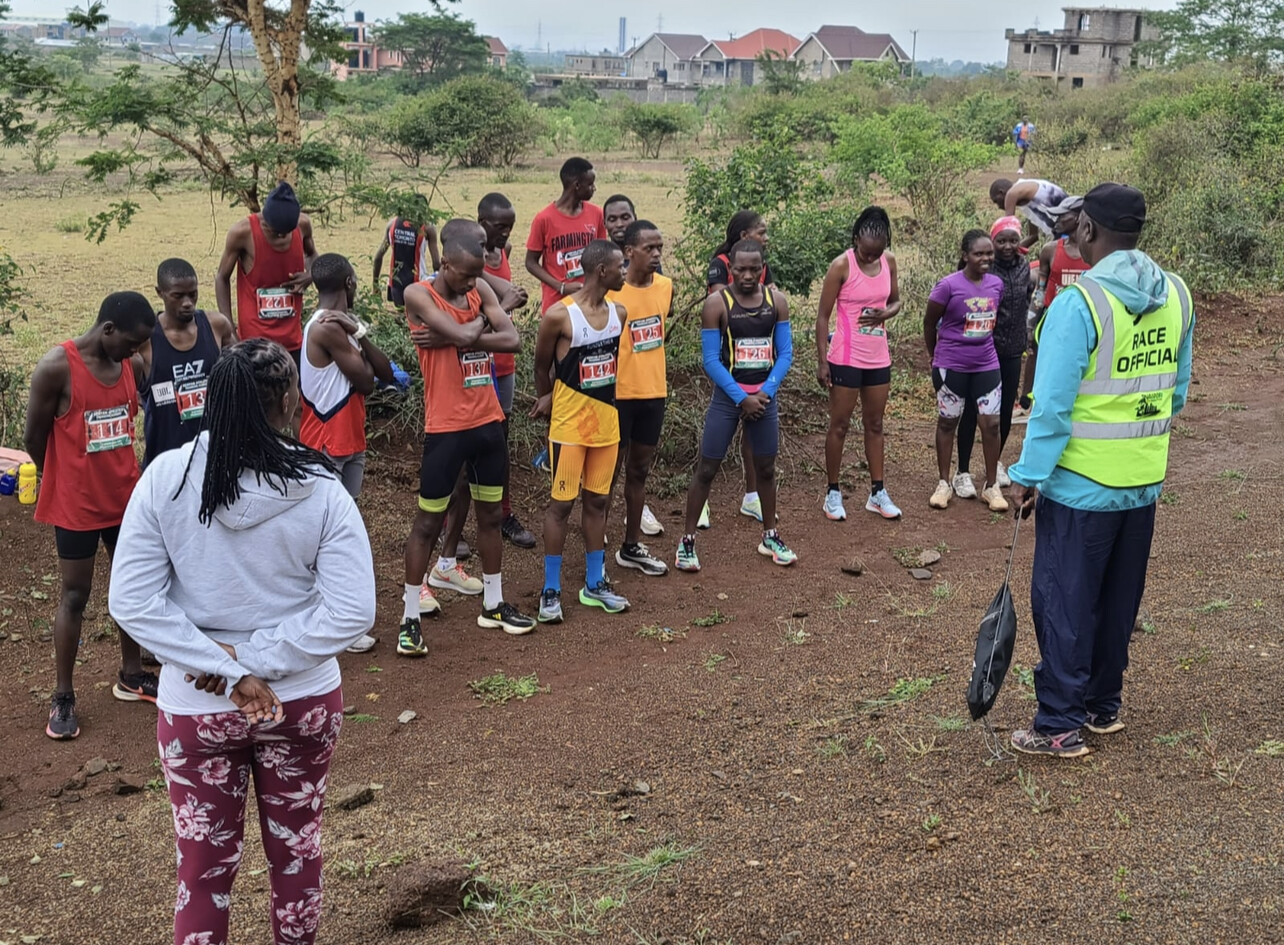
10Km
1. Peter Mwaniki 138 - 29:33.6
2. Peter Wanyoike 139 - 29:38.7
3. Zakaria Kirika 115 - 29:41.6
4. Raphael Gacheru 117 - 30:02.1
5. Peter Mburu 144- 30:16.5
6. Eston Mugo 136 - 30:29.0
7. John Kuria 142 - 31:05.0
8. Evans Kiguru 122 - 31:38.8
9. Anthony Mukundi 108 - 32:08.1
10. Alfred Kamande 126 - 33:06.0
11. Paul Nganga 135 - 34:22.2
12. Catherine Njihia 141 - 34:26.7
13. Inertia Mugethi 129 - 35:33.6
14. Maureen Nairesiae 140 - 41:49.8
15. Ismael Mburu 111 - 45:33.7
16. Nancy Githaiga 120 - 45:38.7
5Km
1. Levis Kuria 84 - 14:59.6
2..Fredrick Kiprotich 124 - 15:09.8
3. Amos Chirchir 114 - 16:31.5
4. Paul Kariuki 107 - 17:11.8
5..Peter Mukundi 17:26.5
6. Caren Chepkemoi 138 - 18:56.6
(06/15/2023) Views: 728 ⚡AMPKATA Time Trial Series
The Kenyan Athletics Training Academy (KATA) in Thika Kenya stages a monthly time trial. Starting Sept 2021 this monthly event is open to anyone who would like to get an official time on a acurant course. Results will be published at My Best Runs so race directors and other interested people can see what kind of shape our participants are...
more...2023 Western States 100 Women’s Preview
The 2023 Western States 100 is just around the corner and we’re here to take a look at the pointy end of this year’s women’s field. Before we get started, in case anyone needs a reminder of this unique, point-to-point, net downhill course, here are the stats for the standard course: 100.2 miles, 18,000 feet of climbing, and 22,000 feet of descending.
At the time of writing this, we don’t know if the huge snows of this winter or last year’s wildfire on the course will necessitate any significant course modifications for this year’s running. However, we know the race organization is doing everything they can to host the race on the normal course. We also know that those conditions will likely play into the competition, with snow present on the first 25 miles of the course for a spicy warm-up, as well as miles of wildfire-exposed course that’s likely to make the middle miles feel more severe than normal. And, also, we are expecting the normal race-day heat.
Last year’s race further showed how much faster the Western States women’s field has gotten in recent years. While Ellie Greenwood’s 2012 course record of 16:47 has remained untouched, 15 of the 24 fastest women’s times at the race have been logged in just its three recent races — 2019, 2021, and 2022 — with those 15 times logged by 13 different women. Ruth Croft’s 2022 winning time of 17:21 was the third-fastest women’s time ever while fifth-place Emily Hawgood’s 18:16 would have won the women’s race in all but 10 other years.
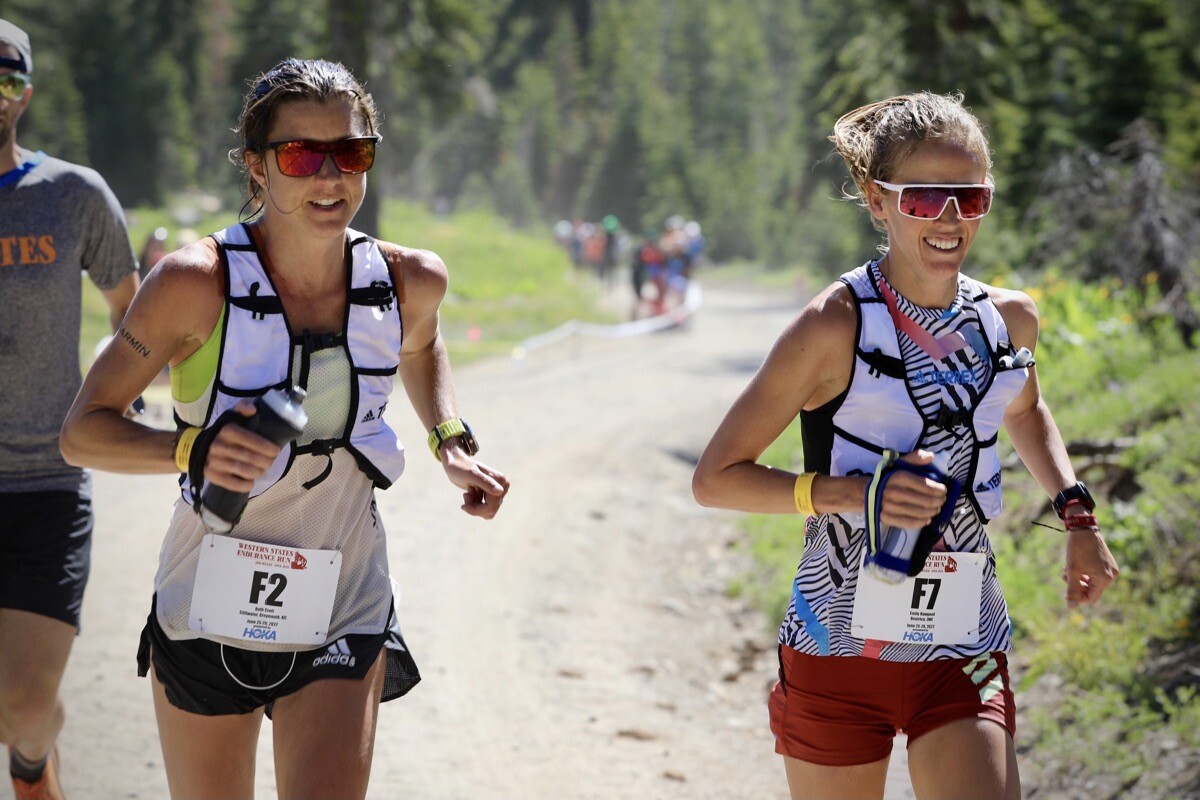
We’re in for one heck of an exciting women’s race at this year’s Western States 100. None of last year’s top-four women are returning while everyone who finished between fifth and ninth will be returning. Lining up aside those five will be another half dozen women, each of whom could make a push for the podium, including a couple of the world’s best 100-mile racers at the moment. Another dozen strong women will add to the excitement in running for the top 10.
As you’d guess, iRunFar will be there to report firsthand on all the action as it unfolds starting at 5 a.m. U.S. PDT on Saturday, June 24. Stay tuned!
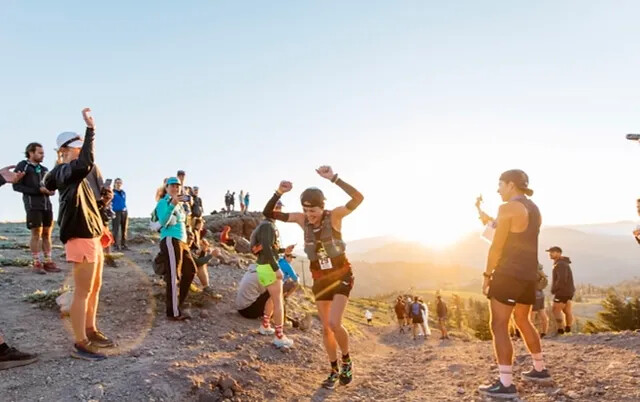
A special thanks to HOKA for making our coverage of the Western States 100 possible!
Emily Hawgood – 5th, 18:16:02
Well, look at that, Zimbabwe’s Emily Hawgood comes into the 2023 Western States 100 as the top returning women’s runner after her fifth-place finish last year. That fifth place is no fluke as over the past two years, Hawgood has been seventh at the 2021 Western States 100 as well as taking 10th and sixth at the past two UTMBs. Living over here in the U.S., she ran and won the same local 50k both last year and this February.
Leah Yingling – 6th, 18:32:31
After many years of quieter success, Leah Yingling made herself known with a great 2022 season. In addition to taking sixth at Western States in 2022, she was third at the Bandera 100k, third at the Transgrancanaria Advanced 60k, second at the Canyons 100k, and 19th at the Trail World Championships 80k. She’s started her 2023 just as strong with a second place at the Way Too Cool 50k in March and a win at the Bull Run Run 50 Mile in April.
Taylor Nowlin – 7th, 18:46:42
Although she’s run ultras since at least 2016, I’d have to say that 2022 was Taylor Nowlin’s best season to date. Not only did she take seventh in her 100-mile debut at Western States, she also took fourth at the Black Canyon 100k and ninth at CCC. We can’t find any race results for Taylor so far this year, so we’ll have to wait until race day to find out what kind shape she’s in.
Camille Herron – 8th, 18:51:54 (2022 post-race interview)
What a journey it’s been for Camille Herron at Western States! She DNFed in both 2017 and 2019 before finishing in 27:28 in 2021. She kept at it last year, finishing eighth in 18:51. I’d hypothesize that what’s sure to be a snowy course in 2023 could challenge that inspiring progression, but she’ll surely come into the race fit if her recent racing is any indication. In December she clocked 13:02 for 100 miles at the Desert Solstice races before setting the 48-hour world record of 270.5 miles this March.
(06/15/2023) Views: 609 ⚡AMPby Bryon Powell
Western States 100
The Western States ® 100-Mile Endurance Run is the world’s oldest and most prestigious 100-mile trail race. Starting in Squaw Valley, California near the site of the 1960 Winter Olympics and ending 100.2 miles later in Auburn, California, Western States, in the decades since its inception in 1974, has come to represent one of the ultimate endurance tests in the...
more...Olympic gold medalist and top coach Harvey Glance dies at age 66
Former American sprinter and international coach Harvey Glance, who helped to propel Grenada's Kirani James to world and Olympic glory, has died at the age of 66 after suffering a cardiac arrest.
Tributes are being paid to the three-time Olympian and Olympic gold medalist following his death on Monday (June 12).
Glance underlined his talents at the Auburn University in the United States where he achieved four sprint National Collegiate Athletics Association titles.
He won the 100 meters gold at the US Olympic Trials in Eugene to secure his place on the team for the Montreal 1976 Olympics.
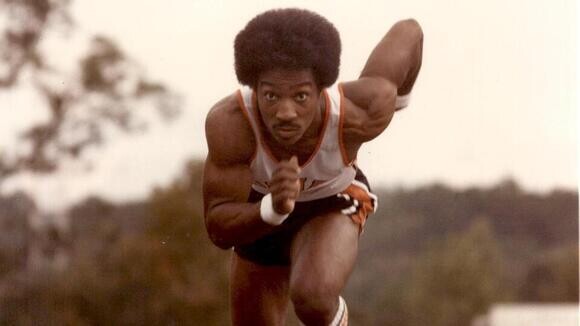
After finishing fourth in the 100m final, Glance teamed up with Johnny Jones, Millard Hampton and Steve Riddick to win the men’s 4x100m title.
Glance claimed 100m silver and 4x100m gold at San Juan 1979 Pan American Games.
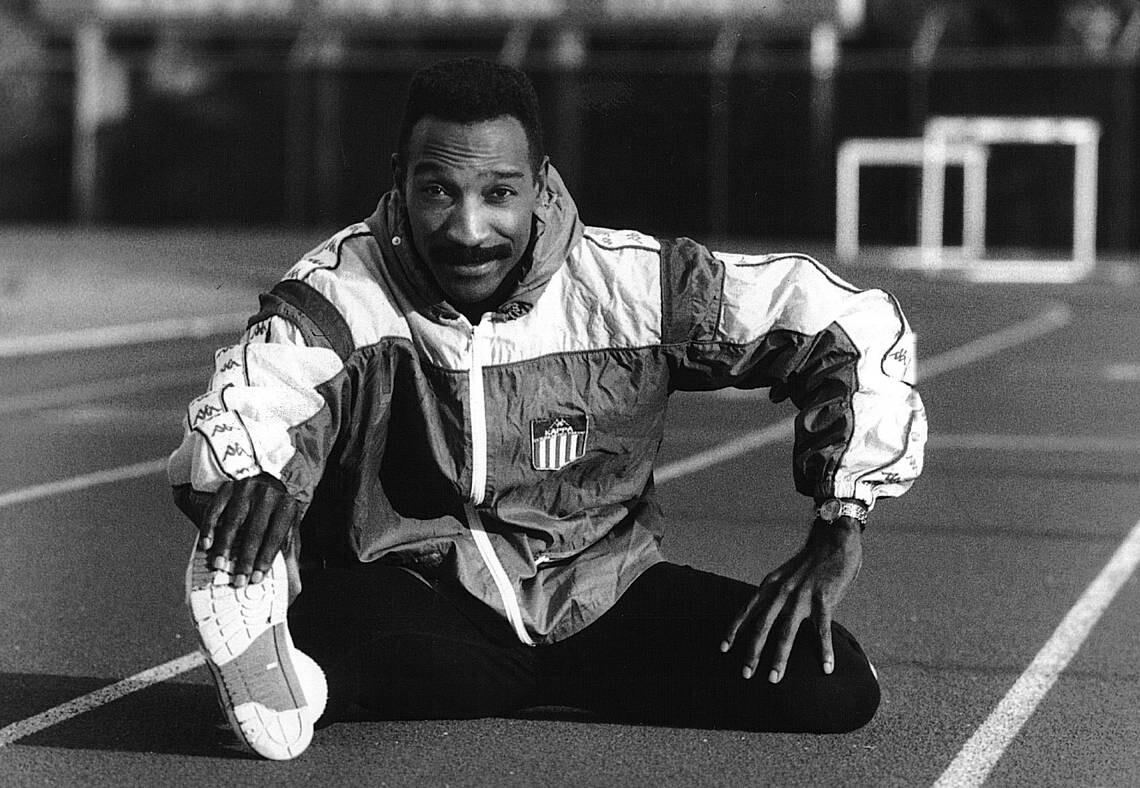
He won his first world gold in 1987 when he linked up with Lee McRae, Lee McNeill and Carl Lewis to be crowned 4x100m champions before securing another Pan American Games 4x100m title in Indianapolis that same year.
His coaching career began at Auburn University, first as assistant coach before stepping up to become head coach.
In 1997, Glance became head coach at the University of Alabama where he worked with several top athletics including James.
He was notably the men's assistant coach for sprints and hurdles at the Beijing 2008 Olympics and head men's coach at the 2009 World Championships in Berlin.
After retiring from the University of Alabama, Glance continued to coach James, who claimed the world 400m crown in 2011, the Olympic 400m title at London 2012 and achieved further global medals in the one-lap event between 2015 and 2022.
Grenada’s Minister for Youth, Sports and Culture Ron Redhead was among those to pay tribute to Glance.
"I extend heartfelt condolences to the family, colleagues to the family, colleagues and friends of Mr Harvey Glance, one of our top-ranked athletic coaches, whose untimely passing has truly shocked the entire sporting fraternity," said Redhead.
"Mr Glance displayed the highest level of sportsmanship in coaching athletic greats such as our Olympic champion Kirani James and many other athletes across the globe.
"On behalf of the Ministry of Education, Youth, Sports, and Culture, I offer deepest sympathy to all his loved ones, and I pray that the almighty comforts you in this time of grief and immeasurable loss."
Alabama track and field head coach Dan Waters said Glance had "left a lasting mark" on university's athletics programme and described him as a "true legend in the sport".
"He impacted so many people in the track world, and his spirit will always live with us," added Waters.
"He was such a charismatic person and always left a positive impact on everyone he encountered over the years."
(06/15/2023) Views: 757 ⚡AMPby Geoff Berkeley
Top Kenya names bow out of world athletics marathon team
Kenya has been forced to make changes to its marathon squad for the World Athletics championships in Budapest in August after the biggest names bowed out of the team.
Last Friday Athletics Kenya (AK) picked Kelvin Kiptum, the world's second fastest marathon runner, and the women's world marathon record holder Brigid Kosgei for the August 19 to 27 championships.
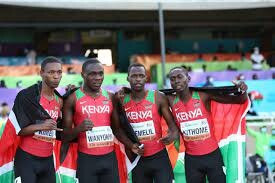
But the pair, along with 2023 London marathon silver medalist Geoffrey Kamworor, withdrew in quick succession, forcing Athletics Kenya to name new replacements on Wednesday.
"We selected the best runners we have for the marathon, but we cannot force them to compete in Budapest," Paul Mutwii, the AK director of competitions, told AFP on Thursday.
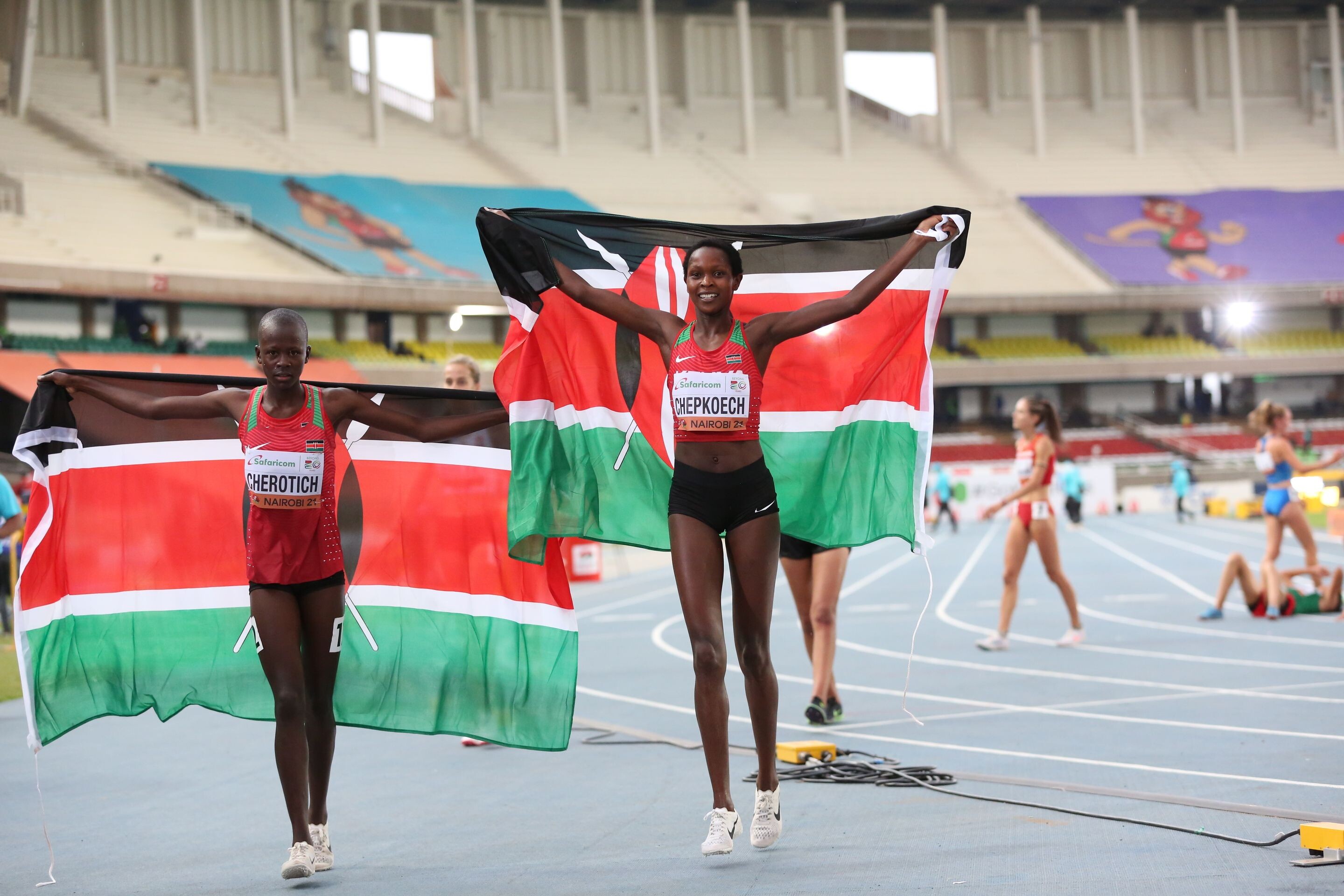
However Kiptum, who was expected to make his international debut for Kenya, told AFP he had not reached a conclusive agreement with AK over his availability for Budapest.
Titus Kipruto, the 2022 Milan marathon champion, will lead the men's team, alongside Timothy Rono and Joshua Belet.
Reigning Tokyo marathon champion Rosemary Wanjiru is retained in the women's team that also includes former world half marathon bronze medalist Selly Chepyego Kaptich and Shyline Jepkorir Toroitich.
(06/15/2023) Views: 537 ⚡AMPWorld Athletics Championships Budapest 23
From August 19-27, 2023, Budapest will host the world's third largest sporting event, the World Athletics Championships. It is the largest sporting event in the history of Hungary, attended by athletes from more than 200 countries, whose news will reach more than one billion people. Athletics is the foundation of all sports. It represents strength, speed, dexterity and endurance, the...
more...2023 Western States 100 Men’s Preview
The Western States 100 is set for 2023. The iconic point-to-point, net-downhill course takes in 100.2 miles, 18,000 feet of climbing, and 22,000 feet of descending, as it starts at the Palisades Tahoe ski resort in Olympic Valley, California, and finishes at Placer High School in Auburn.
Environmental conditions will play into the race’s competitive story this year. With record snowfall throughout the upper elevations of the Sierra Nevada, the mountain range through which the race travels, runners will encounter plenty of snow over the course’s first quarter, along with numerous high water crossings lower down as all that snow melts.
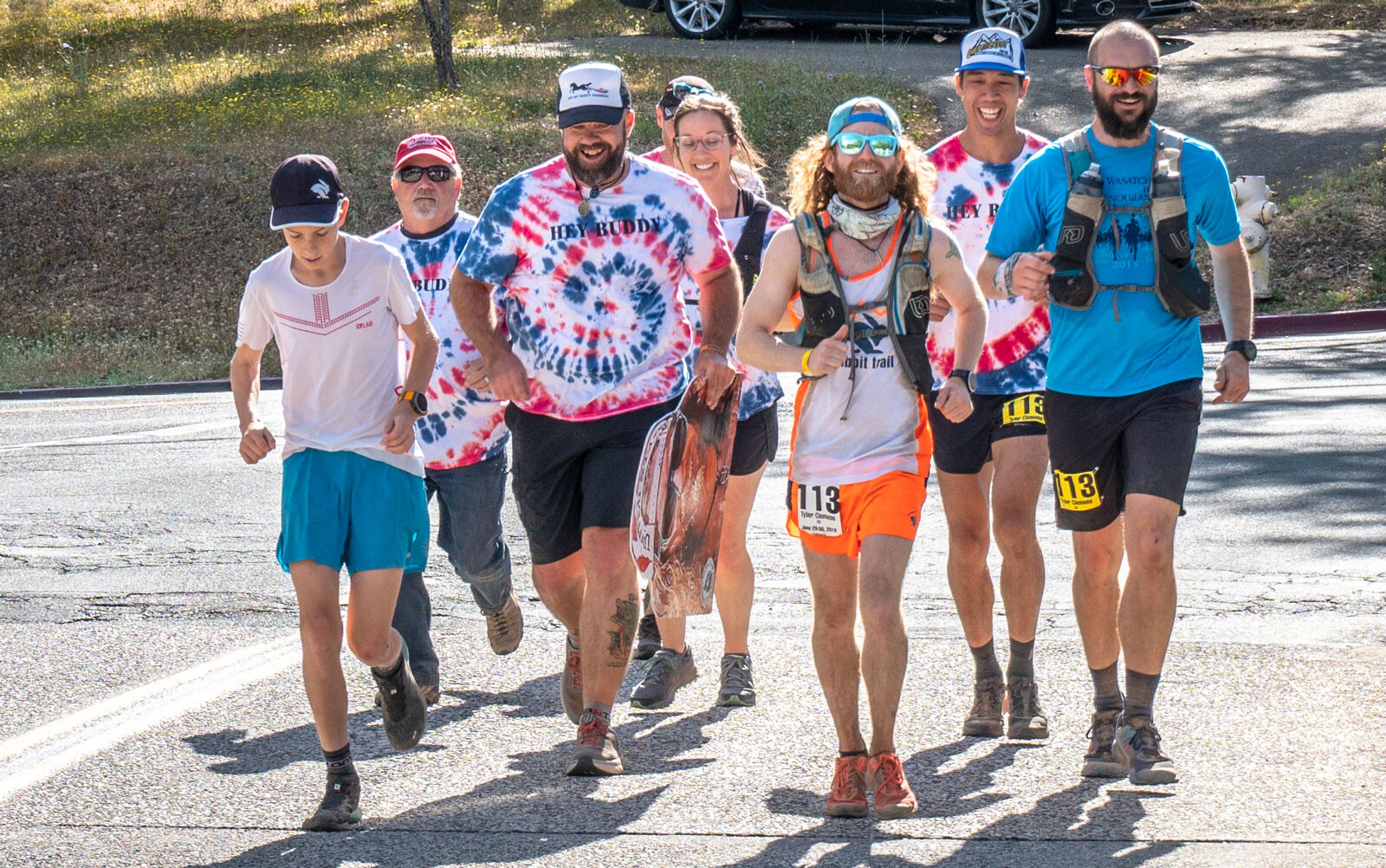
Some 16 miles of the course were burned over by last fall’s Mosquito Fire, leaving miles of shade-less terrain. And of course, there will probably be weather at play, with the event’s notorious heat likely to encompass the middle and lower elevations of the course.
The men’s race at last year’s Western States 100 was sharp, with just 50 minutes separating the first and 10th finishers. Seven of that stellar line-up are back this year, as well as some serious additions like the U.K.’s Tom Evans, French-Canadian Mathieu Blanchard, and Dakota Jones.
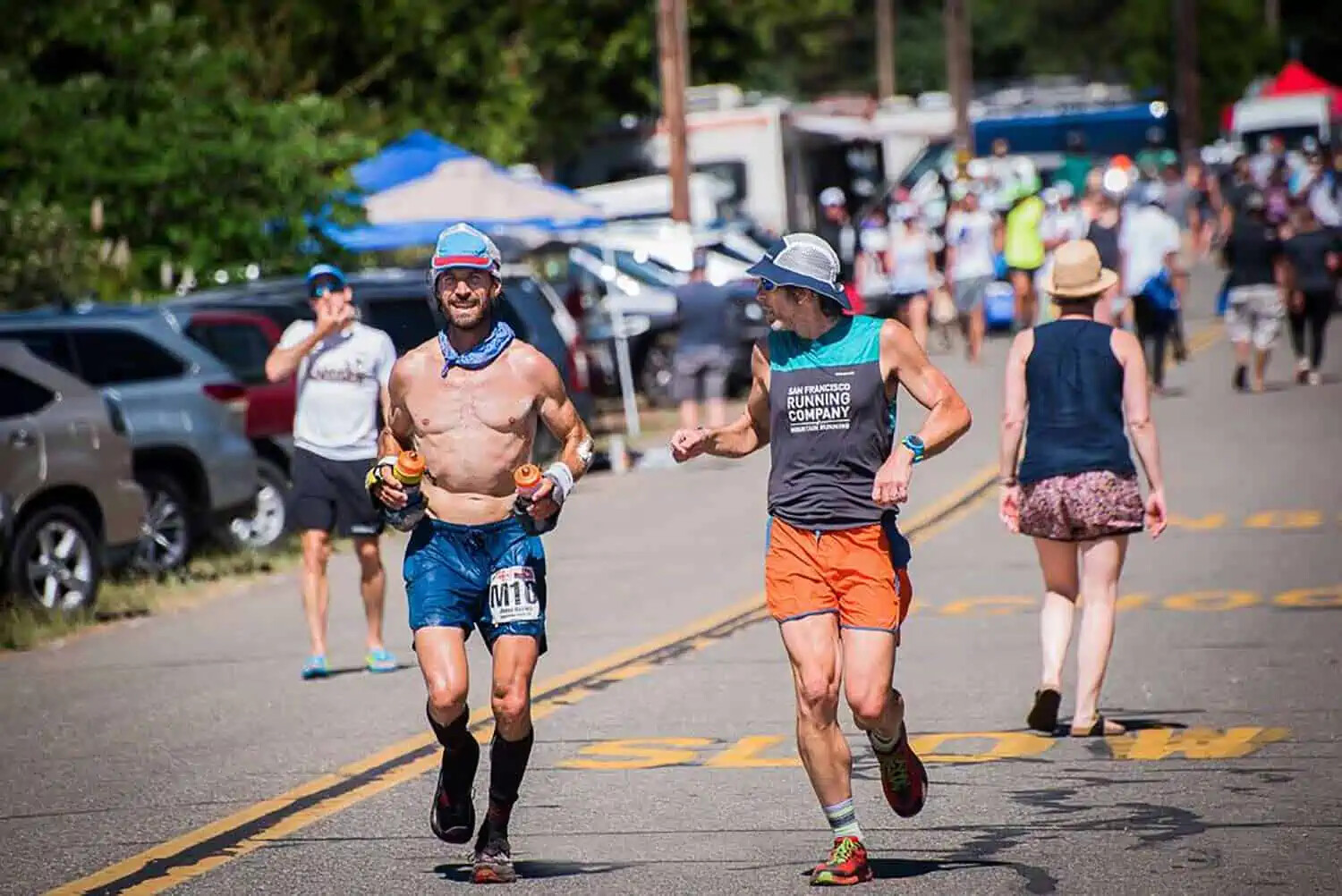
Although there are notable absentees including reigning champion Adam Peterman and course-record holder Jim Walmsley, the depth of this men’s field suggests it could be an even tighter race this year.
As you’d guess, iRunFar will be there to report firsthand on all the action as it unfolds starting at 5 a.m. U.S. PDT on Saturday, June 24. Stay tuned!
A special thanks to HOKA for making our coverage of the Western States 100 possible!
Be sure to check out our in-depth women’s preview to learn about the women’s race and, then, follow our live coverage on race day!
The top 10 runners in the 2022 race were invited to return for 2023. Unfortunately, reigning champion Adam Peterman is out with injury, and seventh-place Vincent Viet of France has opted not to return. It also looks like fifth-place Drew Holmen has withdrawn, as he just finished fifth at the Trail World Championships 80k, held in Austria 15 days before Western States.
Hayden Hawks – 2nd, 15:47:27
Last year’s second-place man, Hayden Hawks, was pretty jovial in his post-race interview about not being able to best race winner Adam Peterman. But without the reigning champion present on the start line, this could be Hawks’s year. Despite struggling with the heat last year, his finish time knocked two hours off his eighth-place finish from 2021, and there are lots of indicators that he could have more to offer on this course.
Some of his previous top performances include a 5:18 win at the 2020 JFK 50 Mile and a win at the 2018 Lavaredo Ultra Trail. So far this year, he’s warmed up by winning the Canyons 50k and taking second at the Tarawera Ultramarathon 100k.
Arlen Glick – 3rd, 15:56:17
Arlen Glick surpassed a lot of people’s expectations when he took third at Western States last year. Although he went into the race with bag of form in the 100-mile distance — having won the Javelina 100 Mile, the Mohican 100 Mile and the Burning River 100 Mile all in 2021 — this was his initiation into mountainous ultrarunning. He took to it very well, running a stormer to place third, and has since logged more mountain miles, taking second in the Run Rabbit Run 100 Mile later in 2022, before returning to the 2022 Javelina 100 Mile to place third.
Tyler Green – 4th, 15:57:10
Tyler Green took fourth at Western States last year, and forced third-place Arlen Glick into an uncomfortable sprint finish as he closed on him in the race’s final moments. In terms of placing, he was back from his second-place finish in 2021, but improved his finish time by about 14 minutes in his third go at the race. In 2019, he placed 14th in a time of 16:51, in what was a very fast year.
Following on from Western States last summer, he had a below par run at the 2022 UTMB, making it just inside the top 50, but showed he is back on form with a third-place finish at the 2023 Transgrancanaria. Last year in his pre-race interview he spoke about stepping back from his day job of teaching to focus more on track coaching and his own running, so that may have allowed him to come into this year’s race with better preparation than previous years.
Ludovic Pommeret (France)
Ludovic Pommeret, sixth at last year’s Western States, went on to inspire veteran racers everywhere with a commanding win at the 2022 TDS at age 47 — almost an hour clear of second place on the demanding route. Some of his other top performances include a win at the 2016 UTMB, where he also took fourth in 2021, and a win at the 2021 Diagonale des Fous.
He’s probably at the other end of the spectrum of Arlen Glick, in that his best performances have been on courses more mountainous than this one, but he’s still not to be underestimated.
Not many ultra-trail runners have made Kilian Jornet sweat to the degree that French-Canadian Mathieu Blanchard did at last year’s UTMB. The two battled it out all day for a close finish, in which Blanchard took second place — under the existing course record — thus earning his Golden Ticket into Western States. He’s been mixing it up a lot this year, taking second in the 146-mile Coastal Challenge Expedition Run stage race in Costa Rica, third in the Marathon des Sables, and running 2:22 in what looked like a fairly casual effort at the Paris Marathon.
(06/14/2023) Views: 563 ⚡AMPby Sarah Brady
Western States 100
The Western States ® 100-Mile Endurance Run is the world’s oldest and most prestigious 100-mile trail race. Starting in Squaw Valley, California near the site of the 1960 Winter Olympics and ending 100.2 miles later in Auburn, California, Western States, in the decades since its inception in 1974, has come to represent one of the ultimate endurance tests in the...
more...How to keep your rhythm when traffic stalls your run
Nothing puts a cold stop to a good warmup run like the sudden flash of a traffic warning light. From short, frequent waits at downtown intersections to longer holdups at railway crossings, to drawn-out delays at lift bridges where ships saunter by at a snail’s pace, pauses caused by traffic are a reality for every runner at some point. When waiting out whatever is blocking your path, keeping your engine warm with some simple exercises can help you maintain your momentum.
Why keep moving?

Opting to keep active instead of idling during an unplanned pause can have mental as well as physical benefits. Stopping cold can disrupt a runner’s flow and mental focus, especially during a challenging run. Maintaining some level of movement can help you keep your mind engaged and prepared to throw it back into the same gear when you start moving again. Staying active when stopped also keeps blood flowing to the muscles—resting and cooling your muscles for too long can cause a performance hit, and even increase the risk of injury, once your wait is over and it’s time to pick up the pace again. Having some simple exercises up your sleeve will help you slip into active standby mode. Consider these suggestions for coping with delays of varying durations.
Traffic signals: waits of 30 seconds to two minutes
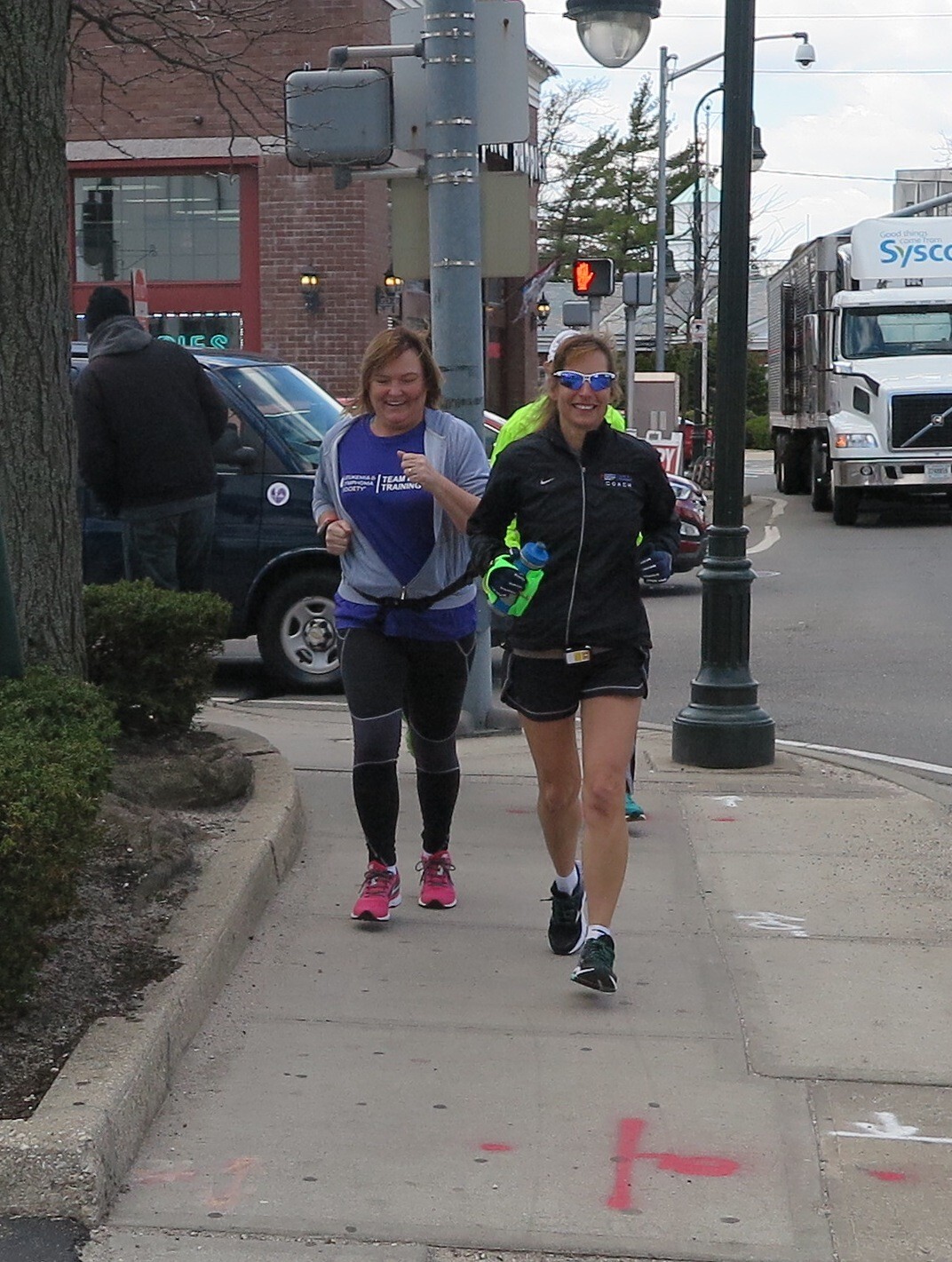
For brief, predictable stops at city intersections, where waits to cross the street typically last mere seconds to around two minutes, running in place is probably the most intuitive and practical way to keep your body moving. Transitioning from a run to a stationary jog—and back again—maintains the flow of activity with no interruption. It’s also a form of exercise that doesn’t take up any additional space, which is important when running on busy city streets where sidewalk real estate is at a premium. Running on the spot makes it easy to gauge and manage the intensity of your movement when waiting for the light to change. Those pacing themselves by heart rate can easily adjust their effort (which could be cadence, kick height, or both) to stay in the same target heart-rate zone they were in while on the move.
Railway crossings: waits of up to five minutes
While running in place might also be appropriate to wait out zippier commuter trains, getting stuck at a rural railway crossing by a seemingly endless stream of lumbering cattle cars might call for a less monotonous approach. For medium-length pauses that are too long for running on the spot, but too short to make doubling back on your route worth your while—particularly if you’re strict about not exceeding your distance goals—a mix of exercises will keep your blood pumping and help the time pass more quickly.
Consider rotating between routines that focus on different muscle groups in one- to two-minute intervals. This might include working your core by performing a plank, followed by two minutes of dynamic stretching (targeting gluteal muscles and hamstrings for a minute each) and finishing with mobility exercises such as front- and side-leg swings.
Lift bridges: waits of 10 minutes to eternity (seemingly)
Fortunately, the longest traffic delays runners are likely to face tend to be the easiest to plan around. Such is the case with boat and ship traffic. In areas such as Ontario’s Niagara region, where the Welland Canal cuts through streets in several communities, raised lift bridges can stop runners for 20 minutes or more. The most practical option for staying in motion when a raised bridge blocks your route is to have an alternate route at the ready. Or, depending on the training-run goals, it may be worth rethinking your gameplan entirely—if the route you’ve mapped out for your two-hour long run risks leaving you stuck at a bridge at the 90-minute mark, stick to a course where exceedingly long traffic tie-ups won’t jeorpardize your training targets.
(06/14/2023) Views: 612 ⚡AMPby Paul Baswick
Fridah Chepkite Lodepa gunning for a seventh Lewa Safari Marathon title
Decorated Fridah Chepkite Lodepa will head for a seventh title in the 24th edition of Lewa Safari Marathon to be held at the Lewa Conservancy in Isiolo County on June 24.

The mother of three embarked on intense training on January 10 at her base in Iten with her Cloud Nine Athletics Club in readiness to defend the women’s 42Km category she dominated last year in the annual race whose proceeds are channeled towards wildlife conservation.
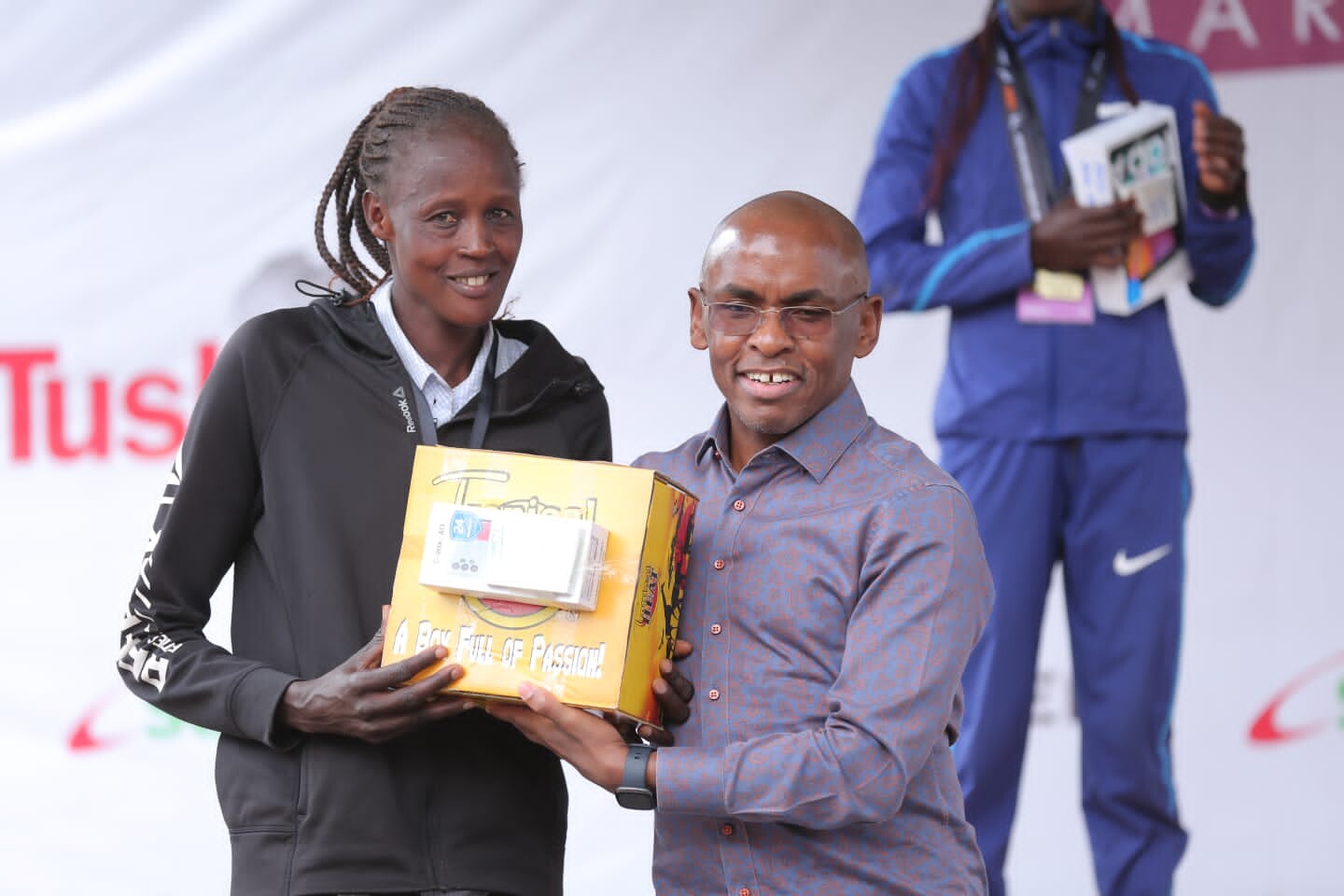
“I’m already in shape now, the remaining three months I’ll work on speed. I’ll also do long runs for endurance and mileage,” the triple Standard Chartered Marathon champion told Standard Sports.
In a press launch in Nairobi yesterday, Lewa Wildlife Conservancy CEO Mike Watson said they are targeting between 1000-1200 athletes in this year’s race whose theme is ‘Ditch the desk, run for the wild.’
(06/14/2023) Views: 552 ⚡AMPby Ochieng Oyugi
Safaricom Lewa Marathon
The first and most distinctive is that it is run on a wildlife conservancy, which is also a UNESCO world heritage site. The Lewa Wildlife Conservancy is home to a number of endangered and threatened species- and also a catalyst for community development for its neighboring communities. For the past 17 years, funds raised from the marathon have gone...
more...Five elite women to watch in 2023 Grandma's Marathon
Back-to-back defending Grandma’s Marathon champion Dakotah Lindwurm will attempt to become the third woman to ever win the race three times this week, and the first to three-peat since Mary Akor in 2009.
Lindwurm, the former hockey goaltender out of Eagan, Minnesota, is the favorite again in the elite women’s field for the 47th Grandma’s Marathon, which gets underway at 7:45 a.m. on Saturday in Two Harbors. The winner is estimated to arrive at the finish line at Canal Park in Duluth around 10:10 a.m.
Akor, of the U.S., went back-to-back-to-back in 2007, 2008 and 2009, while Lorraine Moller of New Zealand was the first woman to three-peat from 1979-1981.
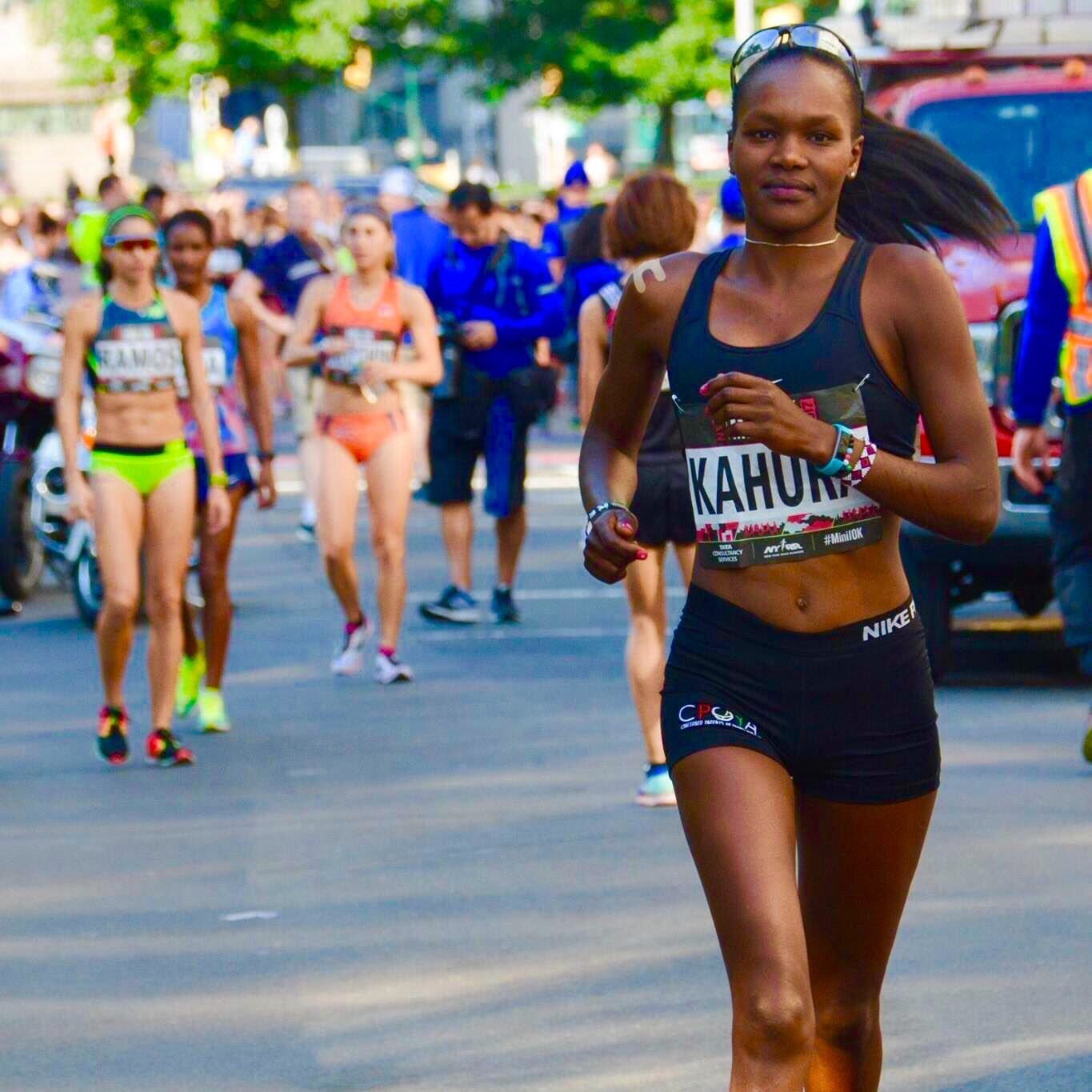
Here’s a look at the top contenders from the women’s elite field that are vying for the $10,000 first-place prize:
Five elite women to watch at 2023 Grandma’s Marathon

The Defending Champ
Dakotah Lindwurm, 28, United StatesPersonal record: 2:25:01 (2022 Grandma’s Marathon).
Two of Lindwurm’s fastest marathon times have come at Grandma’s, with her winning time last year being the second-fastest time in Grandma’s Marathon history — 33 seconds behind Kellyn Taylor’s record of 2:24:28 set in 2018. Lindwurm, who won in 2021 in 2:29:04, became the first Minnesotan to win Grandma’s Marathon that year since Janis Klecker in 1987. Lindwurm recently finished 26th at the Boston Marathon in 2:33:53.
The Past Champion
Pasca (Myers) Jerno, 36, United StatesPR: 2:33:43 (2014 Grandma’s Marathon)
Jerno is a 2014 Grandma’s Marathon champion, having posted a PR that still stands for her today. The Kenyan-born American beat out then-race record-holder Sarah Kiptoo (whose 2013 time still ranks fourth) for the title that year. Jerno has posted two top-10 finishes since winning in 2014, taking eighth in 2019 (2:36:13) and sixth in 2021 (2:36:48). In 2021, she also posted a seventh-place finish in the Chicago Marathon (2:32:51).
The Contender
Grace Kahura, 30, KenyaPR: 2:30:32 (2021 New York City Marathon)
Whether it’s been Grandma’s Marathon or Garry Bjorklund Half Marathon, Kahura has challenged for the podium, but only landed on it once. That was her Duluth debut in 2017 when she finished third in the half. Since then she’s finished fourth in her last three visits — Grandma’s in 2018 and 2021 and the Bjorklund a year ago. She ran Grandma’s in 2:33:34 back in 2021. That same year she set her PR in New York, finishing ninth.
The Up and Comer
Gabriella Rooker, 35, United StatesPR: 2:29:44 (2022 California International Marathon)
Like Lindwurm, Rooker wasn’t always a runner. Rooker is a three-time NCAA Division III individual and team gymnastics champion from Wisconsin-La Crosse. Grandma’s Marathon in 2021 was her running debut. She finished 26th with a time of 2:56:27, but came in 10th last year in 2:34:59. Her PR in California last year is the second best PR in the field behind Lindwurm, but still 4:43 back.
The Sleeper
Anne-Marie Blaney, 29, United StatesPR: 2:31:32 (2023 Boston Marathon)
Blaney bested Lindwurm back in April at the Boston Marathon, finishing two places higher in 24th and 2:21 faster. This will be Blaney’s first time in Duluth running Grandma’s Marathon, where she will need to shave another 6:31 to match Lindwurm’s winning time last year. Recent marathon results for Blaney include a fourth-place finish at the Ottawa International Marathon in 2022 (2:34:38) and 22nd place in the Chicago Marathon in 2021 (2:40:24).
(06/14/2023) Views: 678 ⚡AMPby Matt Wellens
Grandmas Marathon
Grandma's Marathon began in 1977 when a group of local runners planned a scenic road race from Two Harbors to Duluth, Minnesota. There were just 150 participants that year, but organizers knew they had discovered something special. The marathon received its name from the Duluth-based group of famous Grandma's restaurants, its first major sponsor. The level of sponsorship with the...
more...Runners: use yoga and meditation to improve their mental game
JN Yoga and meditation are powerful practices that can enhance a runner’s focus and mental toughness during a race. Anyone who’s tried tackling a 5K PB or reached a marathon finish line knows just how important mental resilience is to performance. By incorporating yoga and meditation into your routine, you can cultivate a calm and focused mind, improve your ability to cope with discomfort and reduce the effects of nerves on race day.
Runner and yoga instructor Katherine Moore explains that the practice of deep breathing while moving through challenging yoga postures teaches runners how to remain calm during difficult workouts and races.
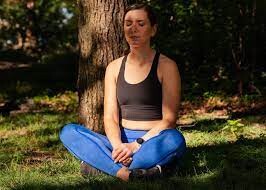
“When you get into challenging poses, it’s not easy. You have to relax your mind, deepen your breath and stay calm,” she says. “There’s always a point in a race when your brain says ‘Get me out of here, I’m done!’ If you can get comfortable in the discomfort, you can start to move through that.”
Not convinced? Here are four ways yoga and meditation can improve your mental toughness on race day.
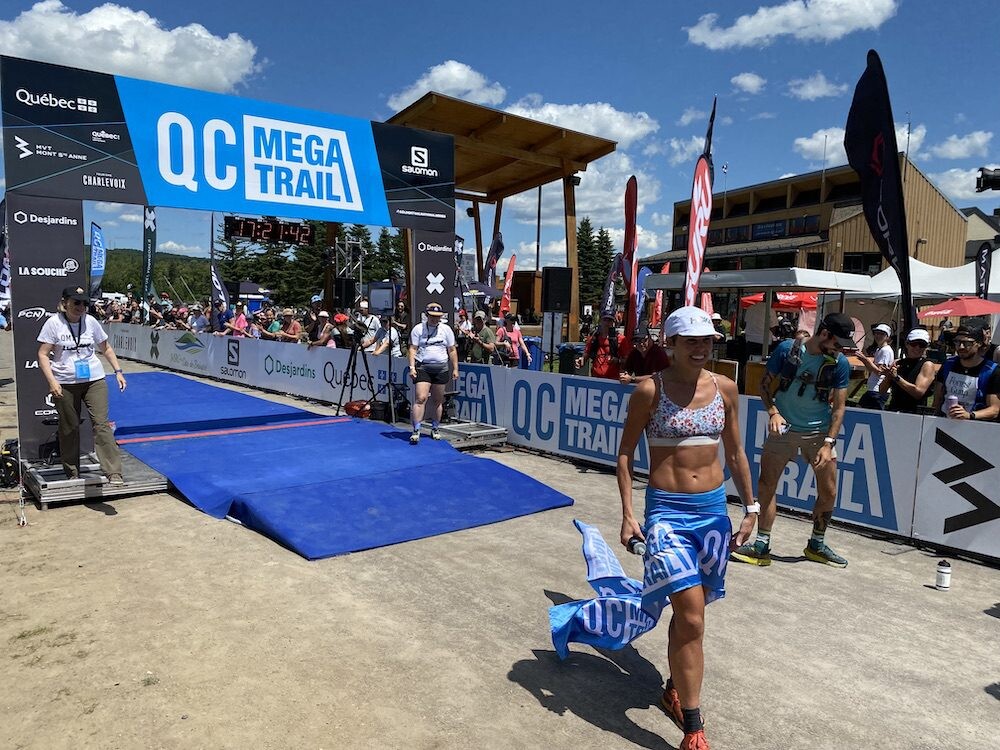
Cultivating mental focus
Yoga and meditation promote mindfulness, which is the practice of bringing one’s attention to the present moment. By practising mindfulness, runners learn to focus on their breath, body sensations, and thoughts without judgment. This heightened awareness helps runners stay present during a race, preventing their minds from wandering and enabling them to concentrate on their performance and strategy.
Managing discomfort
Pushing through intense efforts during a run or race is just as mentally challenging as it is physically challenging. Yoga and meditation teach runners to develop a better relationship with discomfort. Through breathing exercises and body awareness techniques, runners can learn to observe sensations of discomfort without becoming overwhelmed or consumed by them. This mental resilience allows runners to endure physical challenges with a greater sense of calm and control.
Stress reduction
Many runners struggle with pre-race jitters and anxiety. Yoga and meditation are well-known for their stress-reducing benefits. These practices activate the relaxation response in the body, which helps reduce stress hormones and promotes a sense of calm and well-being. By incorporating regular yoga and meditation sessions into your training, you can mitigate race-related stress and approach races with a clearer and more focused mindset.
Visualization and positive affirmations
Yoga and meditation provide an ideal platform for runners to visualize their race success and cultivate positive affirmations. During meditation, you can visualize yourself crossing the finish line strong, overcoming challenges and achieving your goals. Positive affirmations, such as repeating motivational statements, can help boost self-belief and mental toughness, empowering runners to stay determined and focused even in the face of adversity.
Incorporating yoga and meditation into your training routine is beneficial for physical performance and mental well-being. By cultivating focus, managing discomfort, reducing stress and visualizing success, these practices provide you with valuable tools to improve your mental toughness in workouts and races.
Meet Katherine Moore
Moore got into running when she was 18, after moving to Vancouver, and ran her first marathon in New York City in 2005. She progressed in the sport, eventually running a 2:47 marathon, crossing the finish line of the 2010 Toronto Waterfront Marathon as the first Canadian female. Having been a yoga instructor for several years already, Moore eventually combined her two passions and created the KM Run Club in Vancouver, where runners meet for workouts and yoga classes.
To learn more about Moore, her run club, and her yoga teaching, head to her website at runningintoyoga.ca or check out her YouTube channel for daily yoga and pilates workouts.
(06/13/2023) Views: 533 ⚡AMPby Brittany Hambleton
U.S. sprinter Tori Bowie died in childbirth at home, autopsy reveals
U.S. sprinter Tori Bowie‘s death at age 32 was the result of complications during childbirth at her Florida home, according to an autopsy report by the Orange County Medical Examiner Office.
The report, obtained by USA Today, says Bowie was carrying a “well-developed fetus” at about eight months into her pregnancy when she died during labour at her home in Winter Garden, Fla. Her body was discovered May 2 as part of a welfare check by sheriff deputies, who were responding to reports of a woman who had not been seen for several days.
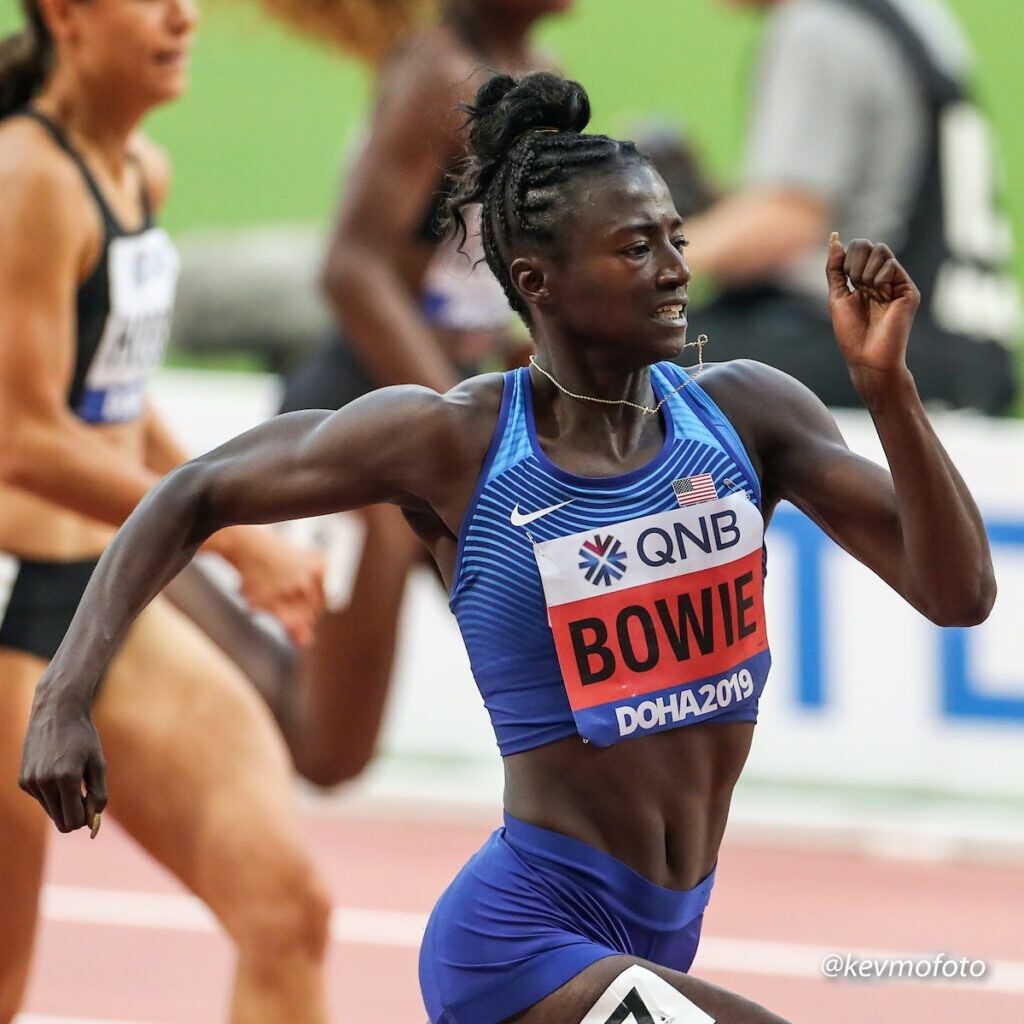
The medical examiner ruled Bowie’s death as “natural” and said complications during labour could have included eclampsia and respiratory distress. (Eclampsia is characterized by seizures related to a spike in blood pressure during pregnancy and can lead to coma, brain damage and death if not treated, according to the Preeclampsia Foundation. The foundation describes the condition as rare in the developed world and is “usually treatable if appropriate intervention is promptly sought.”)
Bowie was a three-time Olympic medallist who took gold in the 4x100m as a member of the U.S. relay team at the 2016 Rio Games. In addition to topping the podium in the relay in Rio, Bowie captured silver in the 100m and bronze in the 200m at the 2016 Summer Olympics.

The news of her death last month dealt a shocking blow to the track-and-field community in the United States and around the world. “We’ve lost a client, dear friend, daughter and sister,” Icon Management, Bowie’s management company, said in a statement confirming the athlete’s death. “Tori was a champion…a beacon of light that shined so bright! We’re truly heartbroken and our prayers are with the family and friends.”
Originally from Sand Hill, Miss., Bowie attended Pisgah High School. There, she earned state titles in the 100m, 200m, 4x10m relay and long jump. Earning a full athletic scholarship at the University of Southern Mississippi, she twice won gold in the long jump at the NCAA Women’s Indoor Track and Field Championship. According to her official bio at USA Track and Field, Bowie was first athlete from the University of Southern Mississippi, male or female, to sweep the long jump NCAA titles at both the indoor and outdoor events in a single season, a feat she accomplished between 2011 and 2010.
Bowie bookended her triumphs in Rio by taking bronze in the 100m at the 2015 World Athletic Championships in Beijing, and topping the podium in the 100m at the World Championships in London in 2017.
(06/13/2023) Views: 624 ⚡AMPby Paul Baswick
Trio of past champions highlights five elite men's runners to watch in 2023 Grandma's Marathon
Three former champions are among the top contenders to claim victory in the men’s elite field of the 2023 Grandma’s Marathon.
Dominic Ondoro, Elisha Barno and Milton Rotich are all entered for the 47th running of Grandma’s Marathon, which will get underway at 7:40 a.m. Saturday in Two Harbors. The winner is estimated to arrive at the finish line at Canal Park in Duluth around 9:50 a.m.
Ondoro is the defending champion and owner of the two fastest times in Grandma’s Marathon history. Barno is a four-time champion and Rotich is the 2021 winner. The three runners account for seven of Kenya’s eight straight victories in the race.
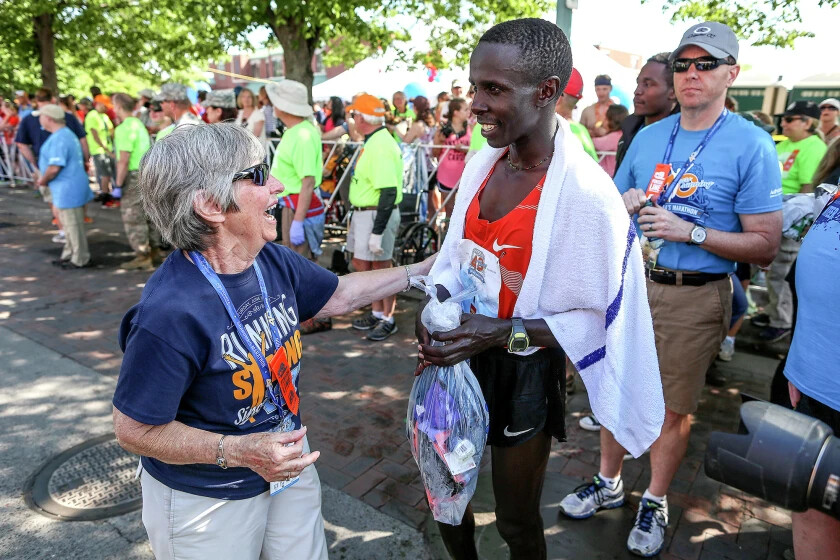
Here’s a look at the top male contenders in this year’s field, who are vying for the $10,000 first-place prize:
Five elite men to watch at 2023 Grandma’s Marathon
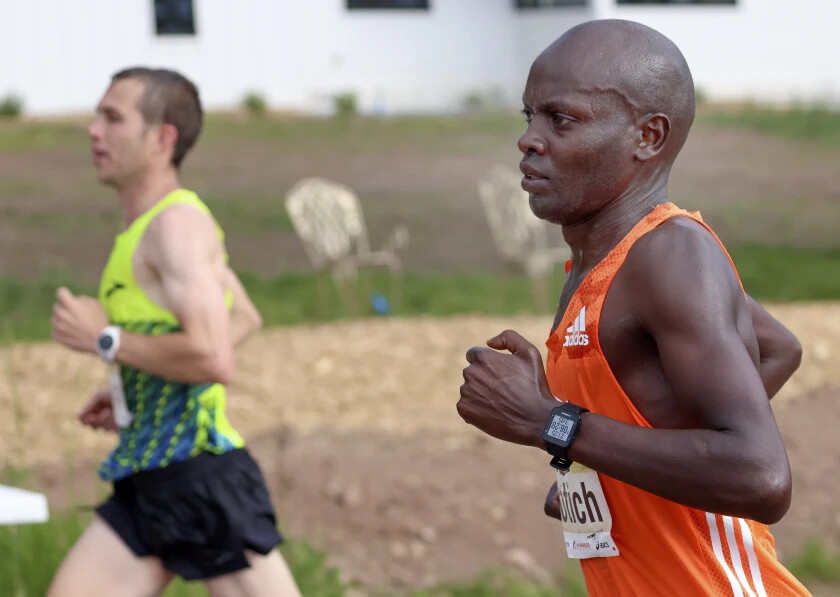
The Defending Champ
The defending champion of Grandma’s Marathon owns the two fastest times in event history, breaking the 33-year race record of Dick Beardsley (2:09:37) in 2014 with a time of 2:09:06. Ondoro nearly broke his own record last year when he won his second Grandma’s title in 2:09:34. That’s the second-fastest time ever. Ondoro comes to Duluth off a win in the Houston Marathon back in January, posting a time of 2:10:36.
The Hall of Famer
Elisha Barno, 38, KenyaPR: 2:09:32 (2018 Houston Marathon)
From 2015 through 2018, Barno owned Grandma’s Marathon, winning it a record four straight times. His reign ended in 2019 when he finished a disappointing 99th, however, he returned in 2022 to finish fourth with a time (2:10:22) that was faster than three of his four victories in Grandma’s. Barno’s time of 2:10:06 in his 2018 win ranks fourth all-time. He will be inducted into the Grandma’s Marathon Hall of Fame on Friday prior to race day.
The Comeback
Milton Rotich, 37, KenyaPersonal record: 2:08:55 (2013 Casablanca Marathon)
The 2021 winner of Grandma’s Marathon in 2:13:04, Rotich was unable to finish last year’s race after an injury forced him to withdraw halfway through. Rotich hasn’t raced since toeing the starting line at the 2022 Grandma’s Marathon. He also did not compete in any official races in between the 2021 and 2022 Grandma’s Marathons. He’s trying to become the eighth man to win multiple Grandma’s Marathons.
The Newcomer
Thomas Kiplagat, 36, KenyaPR: 2:06:00 (2019 Seoul Marathon)
Kiplagat brings the fastest personal record among the men’s elite runners to Grandma’s Marathon in 2023. His win in 2019 in Seoul, South Korea, is among the 200 fastest marathon times ever run. In 2022, he finished second in the Gyeongju International Marathon in Seoul and is coming off a ninth-place finish in the Doha Marathon in Qatar, where he finished in 2:16:48.
The Contender
Kevin Lynch, 29, United StatesPR: 2:09:13 (2022 Big Bear Marathon)
The last American man to win Grandma’s Marathon was Chris Raabe in 2009 with a time of 2:15:13. Lynch, who is making his Grandma’s debut, owns the fastest personal record of the elite American men in this year’s field. His time from the mostly downhill Big Bear Marathon last year is the fourth-fastest time ever for an American man. He recently won the 2023 Salt Lake City Marathon in 2:21:42.
(06/13/2023) Views: 454 ⚡AMPby Matt Wellens
Grandmas Marathon
Grandma's Marathon began in 1977 when a group of local runners planned a scenic road race from Two Harbors to Duluth, Minnesota. There were just 150 participants that year, but organizers knew they had discovered something special. The marathon received its name from the Duluth-based group of famous Grandma's restaurants, its first major sponsor. The level of sponsorship with the...
more...81-year-old bricklayer becomes Comrades Marathon’s oldest finisher
An 81-year-old bricklayer has become the oldest person to complete South Africa’s storied Comrades Marathon, finishing this year’s 87.7-km run from Pietermaritzburg to Durban in 9:26:10.
Sunday’s history-making run by Johannes Mosehla, who hails from the South African city of Polokwane, marked the 10th time the speedy senior has completed the Comrades Marathon, the world’s largest ultra-marathon. According to comments Mosehla made at Monday’s awards breakfast at Durban’s Elangeni Hotel on Monday, this year’s Comrades won’t be his last.
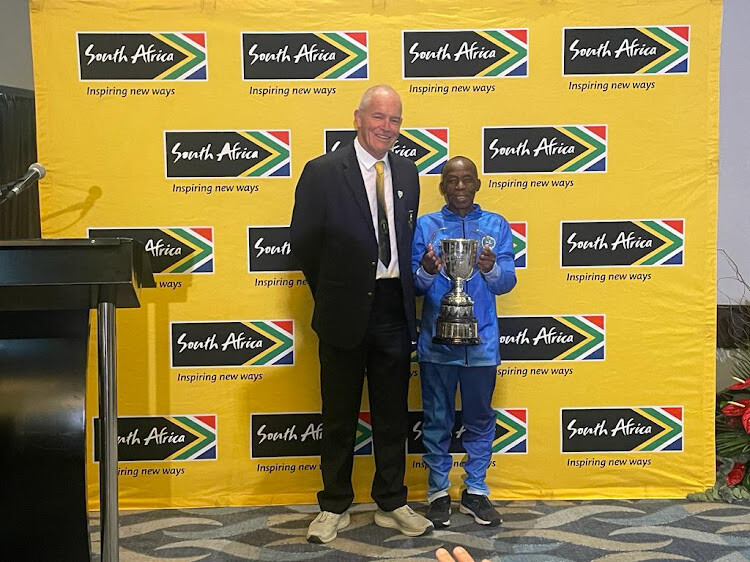
“I feel strong,” South Africa’s news24 reported Mosehla as saying. “I could run it again!” he added, confirming that he plans to return to Comrades in 2024.
He told those at the breakfast that there are no shortcuts to becoming Comrades’ oldest finisher: “My secret is to train. You can’t win without training,” said Mosehla, who has been running since 1963 and continues to train three times a week, covering distances from five to 32 km.
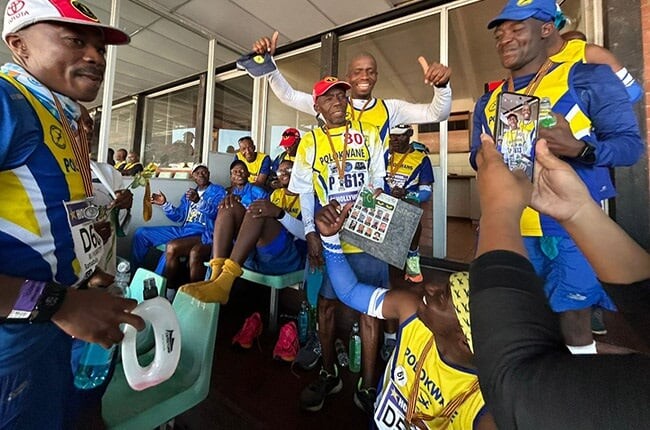
Comrades alternates between the “down” course, which was run this year and is so-named for its relative descent in elevation, and the “up” course, which begins in Durban and ends in Pietermaritzburg.
Noting he was proud to pull off his record-breaking effort “for the whole country,” Mosehla said he hopes his run sends the message that people “must not look for a number or age. I am 81, but I must not look at that number. I must be controlled by my body. When I am still strong, I must not look at my age.”
Mosehla’s run broke the decades-old record set by Comrades legend Wally Hayward, who at age 80 crossed the finish line of the 1989 Comrades Marathon less than two minutes before the 11-hour cutoff time.
Hawyard’s wasn’t the only record to fall at Sunday’s race. Last year’s winner, Tete Dijana of Rustenburg, South Africa, defended his Comrades crown in 5:13:58, shaving more than four minutes off the “down” record set by David Gatebe in 2016.
Gerda Steyn ran this year’s course in 5:44:56, breaking the women’s “down” record set by fellow South African runner Frith van der Merwe in 1989 by nearly 10 minutes.
(06/13/2023) Views: 589 ⚡AMPby Paul Baswick
Comrades Marathon
Arguably the greatest ultra marathon in the world where athletes come from all over the world to combine muscle and mental strength to conquer the approx 90kilometers between the cities of Pietermaritzburg and Durban, the event owes its beginnings to the vision of one man, World War I veteran Vic Clapham. A soldier, a dreamer, who had campaigned in East...
more...World championship silver medalist suspended for evading doping test
On Monday morning, the Athletics Integrity Unit (AIU) announced the provisional suspension of Jamaican 400m runner and 2022 world championship silver medalist Christopher Taylor for evading and refusing to submit to a sample collection, stemming from an incident in November 2022.
Taylor, an Olympic and World Championships finalist in the men’s 400m, may face a four-year ban if he is found guilty; he has not competed since Aug. 30, 2022. At the 2022 World Championships, he anchored the Jamaican 4x400m team to a silver medal.
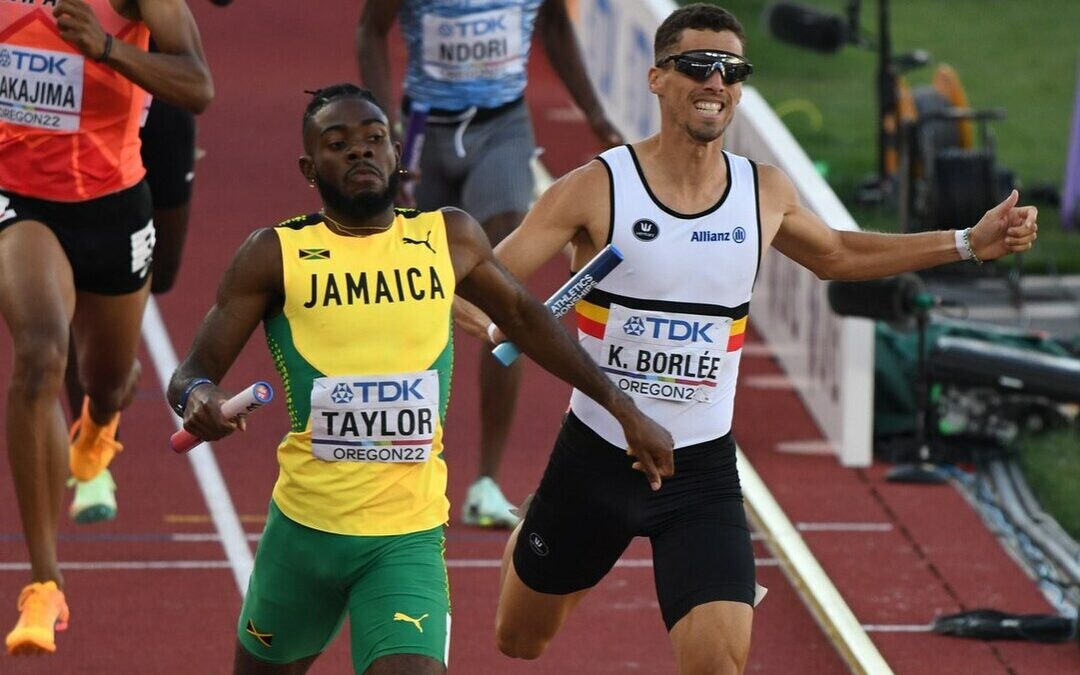
The suspension
According to the Jamaica Observer, Taylor was contacted in November by anti-doping officials, who had turned up to conduct a test at his home in Kingston, Jamaica (the location he had indicated on his whereabouts form). When the officials arrived, Taylor was at the Norman Manley International Airport in Kingston, waiting to catch a flight to the U.S.
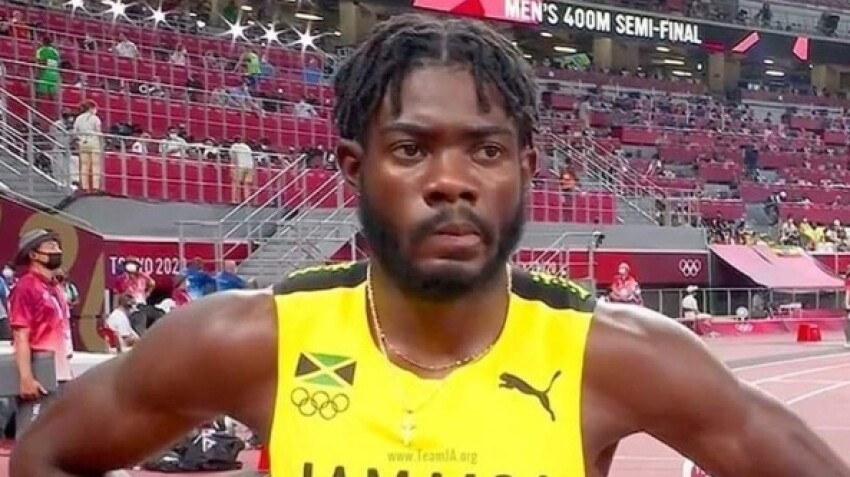
If an athlete is not where they say they are when anti-doping officials show up, it counts as a missed test. Typically, a first or second offence does not carry any penalty, but if an athlete misses three tests during a 12-month period, that constitutes a whereabouts violation, resulting in an automatic period of ineligibility.
However, in Taylor’s case, he is believed to have violated WADA Anti-Doping Code Article 2.3, which speaks to purposely “evading, refusing or failing to submit to sample collection,” resulting in a mandatory two- or four-year ban. If Taylor can establish that the rule violation was not intentional, the period of ineligibility may be reduced.
Taylor’s case
Sports lawyer Paul Greene, who has previously represented high-profile athletes, Shelby Houlihan and Peter Bol, has been representing Taylor. In the interview with the Jamaica Observer, Greene says that upon discovering that Taylor was at the airport, the doping control officer tracked him down, but Taylor refused to test because he didn’t want to miss his flight. Taylor assumed this would simply count as one of an allowable three whereabouts violations, and Greene claims Taylor would have consented to the test if he’d known his behaviour would be interpreted as an attempt to avoid being tested.
Before being notified of the suspension, Greene admitted there are some grey areas in the interpretation of rules differentiating a whereabouts failure from an attempt to evade testing, and that Taylor could either avoid any penalty or be slapped with a multi-year ban.
(06/12/2023) Views: 651 ⚡AMPby Running Magazine
Sha'Carri Richardson nominated for BET Sportswoman of the Year Award
Track and Field has two representatives as Sha'Carri Richardson and Allyson Felix have been nominated for 2023 BET Sportswoman of the Year Award.
Sha'Carri Richardson's continued relevance in sports and entertainment isn't stopping anytime soon, as she has been nominated for the BET Sportswoman of the Year Award.

Richardson is a nominee alongside prominent sports personalities such as Serena Williams and Allyson Felix. Others nominated are Alexis Morris, Angel Reese, Candace Parker, and Naomi Osaka, who are all worthy of winning the award.
It's the second consecutive year Richardson will be in the nominee list, as she lost to Osaka in 2022.
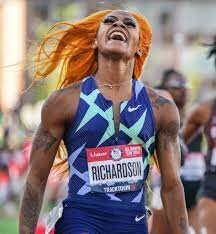
Richardson has an unbeaten record in the 100m this year and has a world-leading time of 10.76s. She has clocked the fastest times this season, both legal and wind-aided, making her a favourite to win the US title in a few weeks.
Her last race at the Star Athletics Speed Series saw her win the 100m final in an effortless windy 10.73s (2.6), which speaks volumes of being the most in-form female sprinter in the world this year.
(06/12/2023) Views: 520 ⚡AMPby Funmilayo Fameso
Missoula Half Marathon listed as one of the most beautiful in the world by USA Today
The Missoula Half Marathon course was named one of the most beautiful in the world by USA Today!
Coming in at number 13, the Missoula course ranks among beautiful places which include Queenstown, New Zealand and Jasper, Canada.
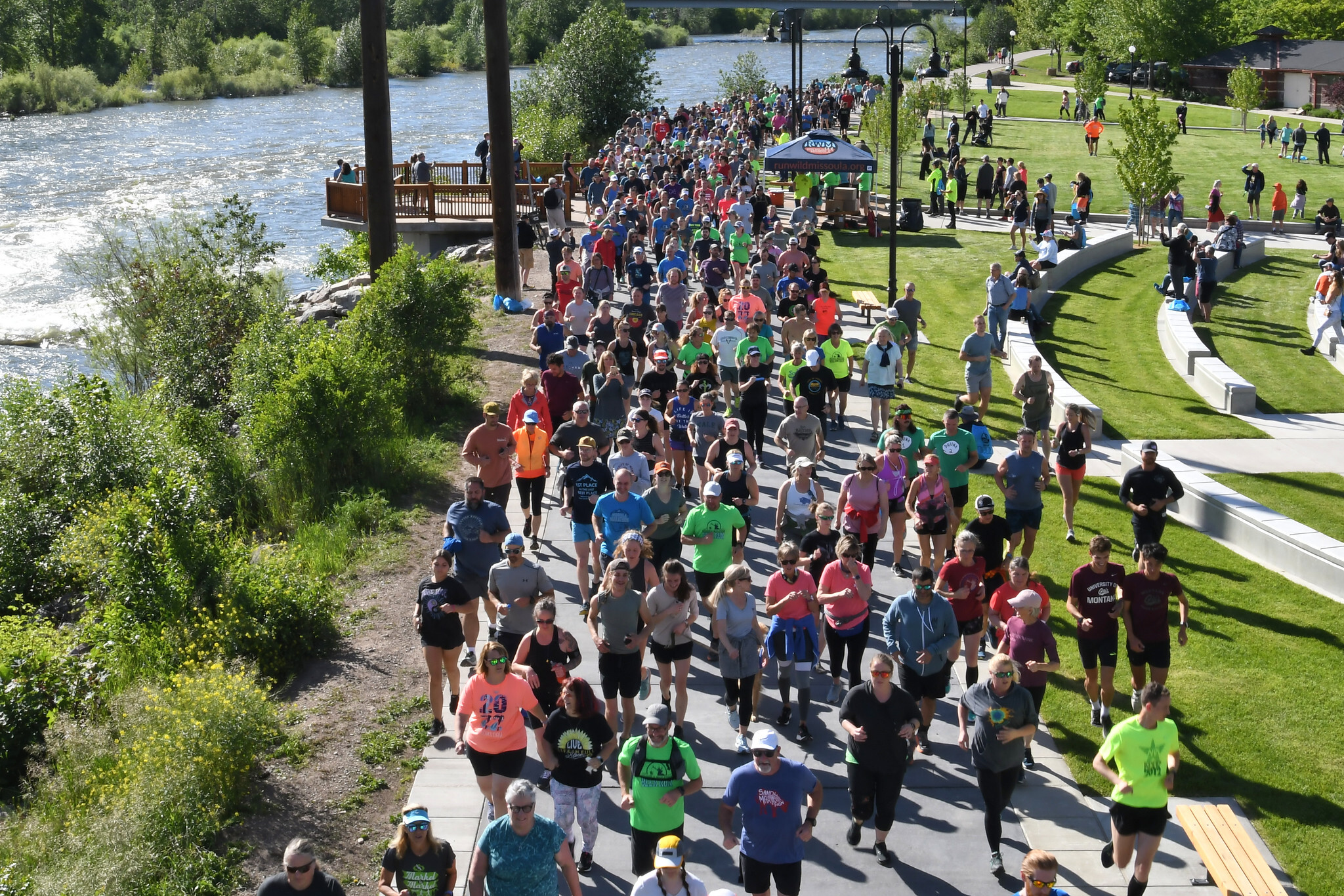
"That half marathon course, you can't beat it... and you certainly don't have to train as long. So you can almost always commit to that half marathon," Missoula Marathon Director Trisha Drobeck said.
The half marathon runs alongside the scenic Bitterroot River before heading into downtown Missoula where runners are cheered on as they get closer to the finish line.

"I feel like the half marathon is maybe the younger sibling that doesn't get recognized as much as its older sibling, the signature marathon," Drobeck noted. "So, it's nice to see that. The half marathon... it is beautiful, and twice as many people do it as the marathon, so it's good to see it get a little recognition. It's well deserved."
This year's Missoula Marathon weekend runs from June 23 through June 25 with the half-marathon taking place on June 25. We'll have complete Missoula Marathon coverage right here on KPAX.
(06/12/2023) Views: 568 ⚡AMP
by Emily Brown
Missoula Marathon
Half and full marathon in Missoula, Montana, in the city they call "The Garden City." Amazing participation by the entire town and county. Front lawn hose squads cool down the runners en route. Lots of rest stations. The full marathon is a Boston qualifier. Runner's World rated the course as one of the best overall road races. ...
more...Edward Zakayo shifts to 10,000m, eyes World championships
Former world under 20 5,000m champion Edward Zakayo has shifted from the 5,000m to the 10,000m as he seeks qualifying time for the World Athletics Championships in Budapest, Hungary.
The former Commonwealth Games 5,000m bronze medalist Zakayo, who is returning to competition battling injury, said he is targeting both Budapest and Paris but feels the world championships have come too soon.
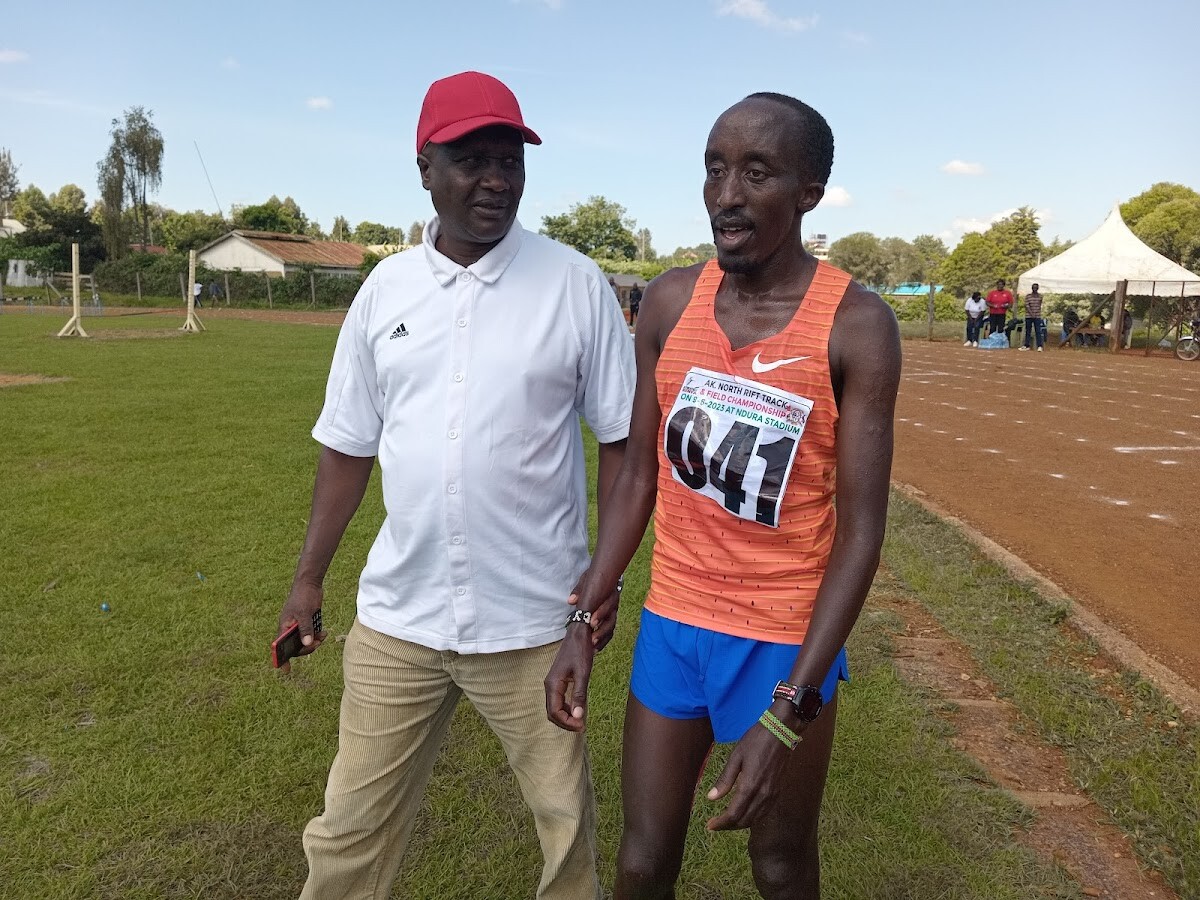
“For now, my coach and I have bigger plans of competing at the Olympic Games. Missing the World Championships will not a big deal. But we have to do what is possible to make the Olympics team. That is our target. We have a project in the camp for the Olympics,” said Zakayo.
Speaking in Kitale after winning the 10,000m title during the Athletics Kenya North Rift region championships at the Ndura Sports Complex, Zakayo added: “Right now, I am focusing on the 10,000m race. I feel great to run the 10,000m since it is long and enjoyable."
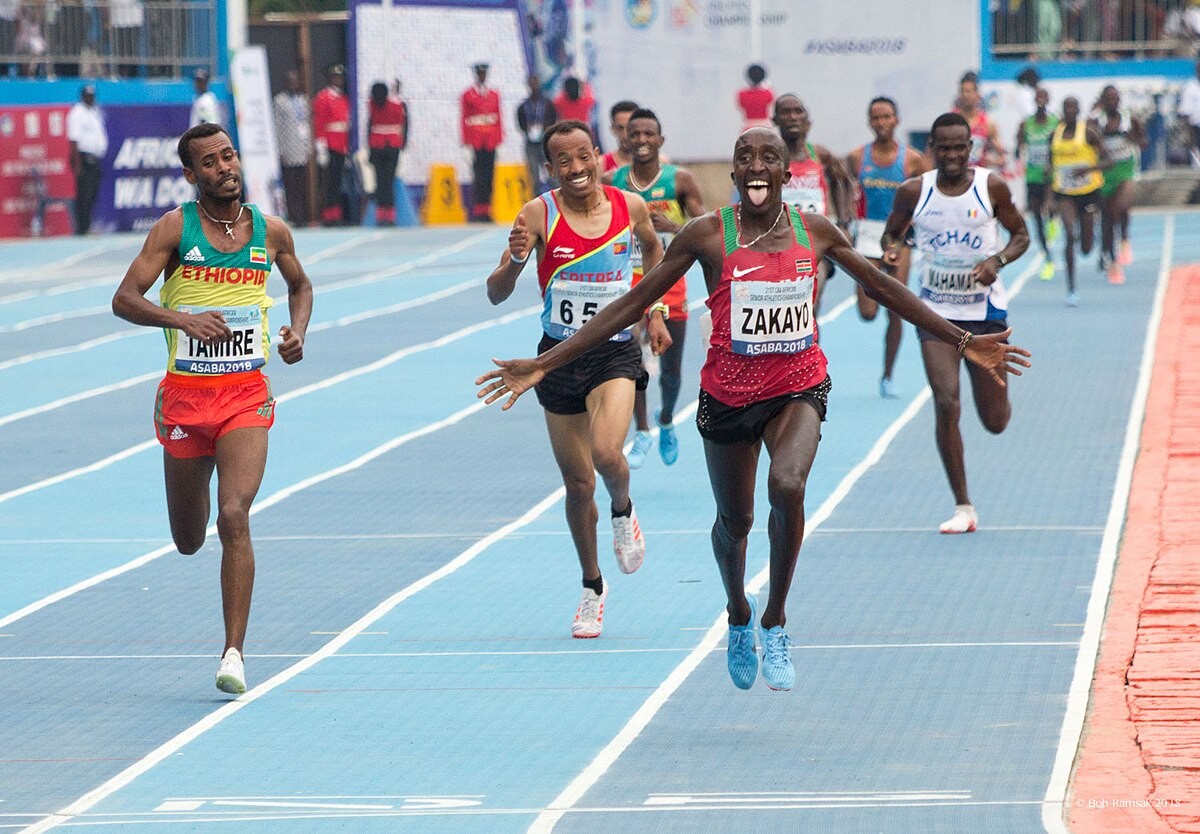
"When I run 10,000m, I enjoy it unlike the 5,000m race, which ends as soon as I start enjoying it,” he said.
Zakayo said the season started badly for him since he was still in pain and had lost form. However, he said he has recuperated successfully and even returned to training camp in Kapsait under coach Erick Kimaiyo.
“I haven't qualified for the World Championships and so I don't see if I will make Team Kenya. I have been missing the World Championships and I don’t know why. I train, gets in good shape but I still miss out at the trials, even if I have the qualifying time," he said.
He says it will need a quality field and race at the national championships for him to hit the WA standards.
“If I get quality athletes at the national championships, it will push me to qualify. I feel I have not been challenged enough,” he said.
(06/12/2023) Views: 544 ⚡AMPby Emmanuel Sabuni
World Athletics Championships Budapest 23
From August 19-27, 2023, Budapest will host the world's third largest sporting event, the World Athletics Championships. It is the largest sporting event in the history of Hungary, attended by athletes from more than 200 countries, whose news will reach more than one billion people. Athletics is the foundation of all sports. It represents strength, speed, dexterity and endurance, the...
more...Teferi runs 30:12 race record to win New York Mini 10k
Senbere Teferi outsprinted Hellen Obiri to win the New York Mini 10K in a PB and event record of 30:12 on Saturday (10).
Ethiopia’s 2015 world 5000m silver medallist Teferi beat Kenya’s two-time world 5000m gold medallist Obiri by seven seconds to retain her title in New York.
Teferi and Obiri broke away from the rest of the field in the first half of the race, leaving a chase group of Emily Sisson, Laura Galvan, Cynthia Limo, Keira D’Amato and Emily Durgin behind.
The leaders reached the 5km mark in 15:28, 10 seconds inside the half way split recorded by Teferi en route to her win in 30:43 in 2022.
Galvan and Sisson were seven seconds behind them at half way, with Limo and D’Amato another couple of seconds back.
Just before the clock showed 27 minutes, Teferi put in a surge and moved a stride ahead, but Obiri – who won the Boston Marathon in April and the NYC Half in March – was quick to cover it. A minute and a half later, it was Obiri’s turn to push the pace as they hit another hill, but again, Teferi – runner-up behind Obiri at the NYC Half – matched it and they continued to run shoulder to shoulder.
The six-mile marker sent a signal to Teferi and, clearly still feeling good, she kicked again. This time Obiri couldn’t respond and the 28-year-old sprinted away over the final 200m to a successful title defence.
“It was tough,” said Teferi, speaking through an interpreter. “From the beginning, we were running together. It was extremely competitive. On the uphills I could tell she (Obiri) was tiring a bit, so I could pull away then. I also know the course well, so that helped me.”
Although the fastest women’s 10km ever recorded on US soil, Teferi’s performance does not improve the US all-comers’ record as the undulating course is slightly downhill overall, and is therefore not record-eligible.
Mexico’s Galvan finished third in 31:14, while Sisson finished fourth (31:16) and D’Amato fifth (31:23).
Leading results
1 Senbere Teferi (ETH) 30:122 Hellen Obiri (KEN) 30:193 Laura Galvan (MEX) 31:144 Emily Sisson (USA) 31:165 Keira D’Amato (USA) 31:236 Cynthia Limo (KEN) 31:277 Emily Durgin (USA) 31:358 Kellyn Taylor (USA) 32:159 Edna Kiplagat (KEN) 32:1710 Emma Grace Hurley (USA) 32:32
(06/11/2023) Views: 625 ⚡AMPby World Athletics
New York Mini 10K
Join us for the NYRR New York Mini 10K, a race just for women. This race was made for you! It’s the world’s original women-only road race, founded in 1972 and named for the miniskirt, and it empowers women of all ages and fitness levels to be active and to look and feel great on the run. Every woman who...
more...Study finds speedwork (not hill repeats) more likely to cause stress fractures in runners
Fast efforts are more likely than tough hill sessions to lead to tibia (shin-bone) stress fractures, according to new research out of the University of Calgary. In fact, the same factors that can make hill work so gruelling might also help promote runners’ bone health.
The findings come from a study in which researchers enlisted 17 volunteers for treadmill runs up to 16 km/h, at five different slopes. Through complex modeling that also pulled information from motion-capture testing and a database of computerized tomography (CT) scans of volunteers’ tibia bones, researchers were able to get insights into the type of running that places greater stress on the tibia, which in turn is more likely to result in a stress fracture.
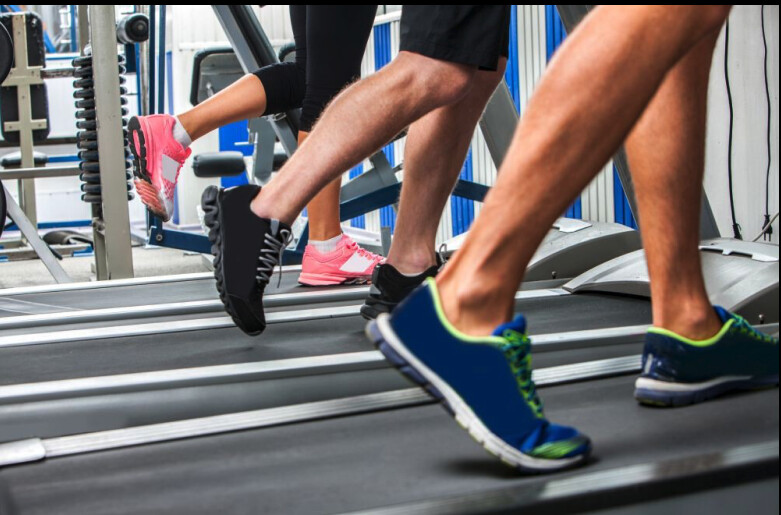

“I’ve really been interested in running biomechanics, and in particular, understanding why people get injured,” says Michael Baggaley of the University of Calgary’s faculty of kinesiology. He tells Canadian Running that although the link between increasing training intensity and a greater risk of tibial stress fractures is well established, he and his team wanted to understand what specific aspects of training were more likely to result in injury.
“We didn’t really see a difference in the damage potential when you run uphill or downhill relative to running on flat ground,” Baggaley says of his team’s findings, “but changing the speed that you run at really did change what we consider the damage potential.”
He suggests the body’s response to the challenge of running uphill helps protect runners from shin-bone stress.
“It can be counterintuitive, because uphill running is very exhausting, really taxing, but when you run uphill, you tend to run with a very quick cadence and a very short stride length,” he says. “So it’s actually these adaptations going uphill running that minimize the loading on the bone. Inadvertently, the fact that running uphill is so tough, that it costs so much energy and oxygen, actually causes you to change the way you run into a more protective manner for our body. Conversely, when you run fast [i.e., on flat ground], you take longer strides and spend more time in the air. All that requires more force to be placed on your body.”
He says while other factors, such as previous bone injuries or malnutrition, can increase susceptibility to stress fractures, the study does make a clear connection between running faster and increasing the risk of damage to the tibia. “The faster you’re trying to run, the more likely you are to be stressing the bones to a higher degree,” says Baggaley.
The takeway for runners, he says, is to take easy runs easy, and to be careful not to introduce too much speedwork too quickly into your training. “There’s a general premise that most runners spend too much time training too fast, and most of us should spend most of our runs at an easy, conversational pace. I think the results of this work support that notion, and that many people are putting themselves at a higher risk than is necessary in order to gain the training benefits of running.”
(06/11/2023) Views: 432 ⚡AMPby Running Magazine
Tom Cruise Wants You to Know He's Still a Runner
The "Mission: Impossible" star is famous for sprinting after the bad guys—and his form has only improved over the years.
Remember when we said Global Running Day is for everyone? We meant it! Wednesday’s celebrations were recognized by everyday runners, professional athletes, and even famous actors. Tom Cruise acknowledged the holiday by posting a GIF on Twitter of him running in his upcoming “Mission: Impossible” sequel.

He wrote, “Running in #MissionImpossible movies since 1996. #GlobalRunningDay.”
The spry 60-year-old also shared the clip and caption on his Instagram story. His social media bios have long been dedicated to his athletic chops on the big screen, reading, “Running in movies since 1981,” referencing the year he appeared in his first onscreen roles for the films “Endless Love” and “Taps.”
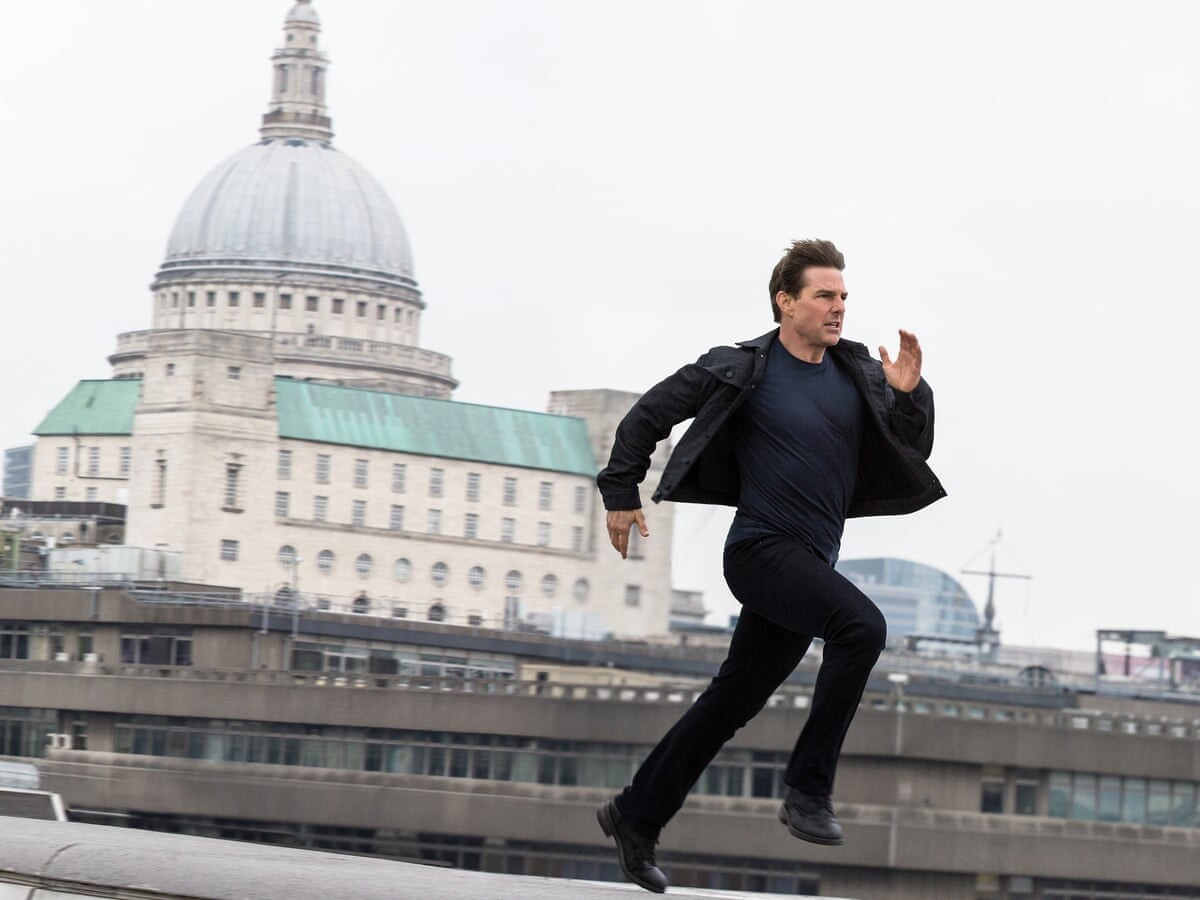
In the seventh “Mission: Impossible” film—and the first to be released since 2018—Cruise will reprise his role as Ethan Hunt, tracking down “a terrifying new weapon that threatens all of humanity before it falls into the wrong hands,” according to promotional material for the upcoming movie. As in all of the films in the franchise, Cruise will be doing quite a bit of onscreen running.
In one running blog’s count, as of last year, he’d run in 44 out of 52 movies. Cruise is known so much for his athleticism that there are YouTube videos documenting “Every Tom Cruise Run. Ever,” and ESPN has even called in experts to evaluate his form. Writer Ryan Hockensmith wrote, “In ‘The Outsiders’ and ‘Taps,’ Cruise runs quite a bit, and it’s a sloppy, under-developed run. It’s not until toward the end of ‘Risky Business’ in 1983 when Cruise vaults up his high school’s steps and jets through the hallways that the beginnings of a steady, faster form begins to emerge.”
As so many other runners have discovered, running economy, form, endurance, and overall ability really can improve with age and experience.
(06/11/2023) Views: 656 ⚡AMPby Runner’s World
RECORD-BREAKING WINS FOR TETE DIJANA AND GERDA STEYN AT 2023 COMRADES MARATHON
Dijana stripped more than four minutes off David Gatebe’s best time of 5:18:19, in 2019, while Steyn broke a 1989 record which was held by Frith van der Merwe.
Tete Dijana won the Comrades Marathon for the second consecutive year, with a record-breaking time of 5 hours, 13 minutes, and 58 seconds.
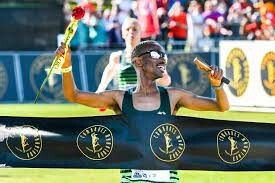
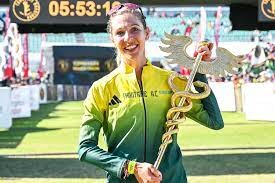
Dijana, who hails from the North West stripped more than four minutes off David Gatebe’s best time of 5:18:19, in 2019.
Meanwhile, Gerda Steyn won the women’s race of the 96th edition of the marathon, in a time of 5:44:56.
The Two Oceans winner also broke the down-run record, which was previously held by Frith van der Merwe in 1989 at a time of 5:54:43.
This year’s race was a downhill run from Pietermaritzburg to Durban, with about 17 000 runners taking part in the 87km race.
The Netherlands’ Piet Wiersma came in second, with Edward Mothibi taking the third spot in the men’s race, while Adele Broodryk came in second in the women’s race, with Carla Monilaro clinching the third. Prize money was awarded to the first ten men and women totaling $160,141US.
(06/11/2023) Views: 571 ⚡AMPComrades Marathon
Arguably the greatest ultra marathon in the world where athletes come from all over the world to combine muscle and mental strength to conquer the approx 90kilometers between the cities of Pietermaritzburg and Durban, the event owes its beginnings to the vision of one man, World War I veteran Vic Clapham. A soldier, a dreamer, who had campaigned in East...
more...Qualification System Published For Paris 2024 Olympic Games
The qualification system for athletics competition at the Paris 2024 Olympic Games, to be held between 2-11 August 2024, has been published.
As was the case for the Olympic Games in Tokyo and the World Athletics Championships Oregon22, the qualification system will be based on a dual pathway of qualification, with 50% of athletes qualifying through entry standards and the remaining 50% qualifying through World Rankings.

The qualification system was approved by the World Athletics Council and includes details of the qualification windows, targeted number of athletes per discipline and entry standards.
The programme will include 23 women’s events and 23 men’s events as well as two mixed events – the 4x400m mixed relay and the 35km mixed team race walk.
For the 10,000m, combined events, race walks and relays, the qualification period runs from 31 December 2022 to 30 June 2024.
For the marathon, the qualification window is from 1 November 2022 to 30 April 2024. For all other events, the qualification period runs from 1 July 2023 to 30 June 2024.
For the marathon, any athlete ranked higher than the 65th athlete on the filtered Quota Place “Road to Paris” list on 30 January 2024 will be considered qualified.
After 30 January 2024, the remaining 20% of the quota will be determined by the same dual pathway qualification criteria outlined above, without displacing the athletes qualified per 30 January 2024.
Any national Olympic committee may choose to reallocate a quota place to an unqualified athlete, provided the athlete in the qualification window has achieved at least a 2:11:30 (men) or 2:29:30 (women) performance.World Athletics will publish the official qualification monitoring tool (Road to Paris) on the Stats Zone of the World Athletics website in the latter part of 2023.
Nassau in The Bahamas will host the World Athletics Relays, the main Olympic qualifying event for the relays, in April/May 2024 (dates to be confirmed).
The current sport-by-sport schedule for the Paris 2024 Olympic Games, which outlines the start and finish times of each session, can be found on the Paris 2024 website. Olympic Games ticketing is also now open.
Organisers have revealed the routes for the Olympic marathon and the two races – a 42.195km course and a 10km course – that will be open to the general public as part of mass event running.
(06/11/2023) Views: 502 ⚡AMP13 Races for the Runners Who Love a Beer After a Run
Thirsty for a brew? You can crack a cold one postrun at these races.
Sure, the beverage most closely associated with running long distances is probably water, with sport drinks as a close second. But many other races are being organized around beer. That’s right, runners (like everyone else) love to crack open a cold one, and every year more races pop up in the United States that are geared specifically toward beer.
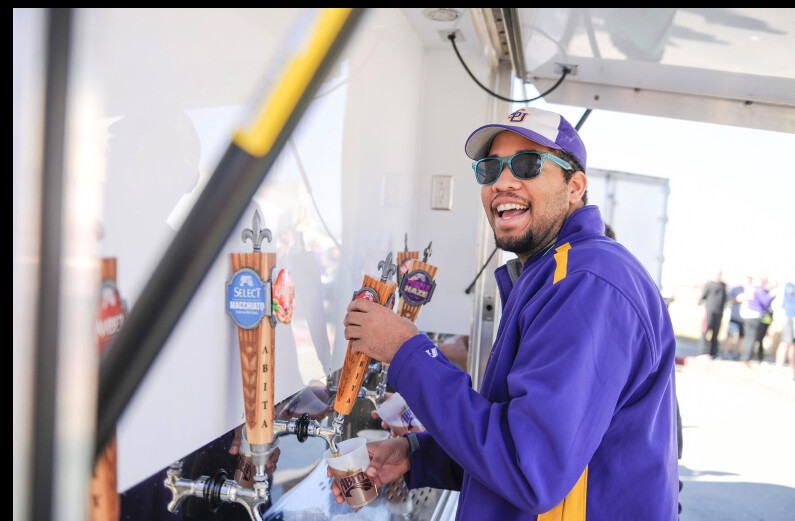

After all, finishing a race deserves a celebration and there’s no better way to celebrate than cheersing a pint with your best mates (while wearing split shorts and a singlet obviously.) And if you’re ditching alcohol this season, you can still partake in these races in spirit with your favorite non-alcoholic beverage.
For obvious reasons, most of these races save the drinking for after the finish line, but that’s not always the case. And while many marathons give finishers an honorary beer, some of these beer-themed races aren’t so quick to cut you off. Whether you’re a beer snob or just looking for an adventure, these races are a great addition to your racing repertoire, and so we’ve rounded up a list of some of the best around the country.
Here are 13 incredible races that give you the opportunity to sip a brew after you run.
Craft Brew Races
Location: Various in New England Date: Various
Loads of races hand out a beer at the end, but few are actually themed entirely around beer. The Craft Brew Races, a series of beer-themed runs around New England are just that. After the race, there’s a three-hour-long festival where runners can try dozens of local craft beers. Just make sure that if you sign up for the run you also recruit a designated driver to pick you up.
The Louisiana Marathon and Half Marathon
Location: Baton Rogue, Louisiana Date: January 14, 2024
While not technically a brewery-themed race, the 2023 Louisiana Marathon had six beer tags attached to runners’ bibs. Yes, that’s correct. Finishers of this race were treated to a six-pack of beer, and with several local brews to choose from, the variety won’t disappoint. Enjoy some gumbo and a few brews afterward. As they say in Baton Rogue, “Laissez les bon temps rouler!” (Translation— Let the good times roll!)
Yuengling Shamrock Marathon
Location: Virginia Beach, Virginia Date: March 17, 2024
If you’re looking for a great weekend for a beer race, an obvious choice would be St. Patrick’s Day weekend. It is, after all, a holiday celebrated almost exclusively by drinking. Virginia Beach’s race weekend, which includes a full gamut of distances to choose from, is sponsored by Yuengling and passes out beer flights to finishers. Plus, since it’s St. Patty’s, you can roll the postrace celebration into general festivities.
The Growler Team Relay
Location: Ashburn, Virginia & Virginia Beach, Virginia Date: April 15, 2023 and December 9, 2023
Running and drinking are usually more fun with friends, or at least that’s the viewpoint taken by the organizers of these Virginia races. With six legs, each team will race 33.5 miles with anywhere from two to six runners handing off the baton at the checkpoints. When teams finish, each participant receives a pint glass and plenty of beer. What makes the race even more interesting is that the routes you take in each leg are up to you. Sure you’ve got the same start and finish point, but you can get there any way you choose.
Cottonmouth Beerlay
Location: Greenville, South Carolina Date: June 3, 2023
While most races put the drinking at the end of the race, the Cottonmouth Beerlay is here to make things a little more, shall we say, interesting. The 8-mile course consists of four 2-mile loops. Before each loop, the runner must chug down a beer. If you sign up for the race in a relay, that seems doable, but individuals will be drinking at least four beers while tackling the wooded course. If you aren’t deathly ill when you finish, you can always celebrate with yet another beer.
Beer Mile World Classic
Location: Chicago, Illinois Date: July 1, 2023
While the Cottonmouth Beerlay is mostly run and games, the Beer Mile World Classic is a sporting event. These people are serious about running the “beer mile” as fast as possible, and by “beer mile” we mean running four laps around a track while chugging down a beer before each loop. The Beer Mile World Classic has slots early in the day for amateur runners, but as the day goes on, you’ll get to watch some top-notch competition. People train for this believe it or not.
Craft Classic Half Marathon and 5K
Location: Seattle, Washington Date: July 30, 2023
Seattle is a town known for its craft brewery scene, so it makes total sense that it would also host a beer-themed half marathon and 5K. The course is flat and scenic, and there is beer waiting for you at the end (which you’ll need after running in July). It’s said that runners receive a custom bottle opener at the finish. What a cute, useful little prize to win, especially if you already have 500 running T-shirts.
Dogfish Dash
Location: Milton, Delaware Date: September 24, 2023
You need to be 21-plus just to access the website for this race. The Dogfish Dash, which is sponsored by the Dogfish Head Craft Brewery, is a 5K-ish distance race around Milton, Delaware. Obviously, finishers are treated to some of the brewery’s finest beers, but you’ll also get some cool swag. This race prides itself on sustainability as well, meaning that not only do you get reusable shopping bags and water bottles for finishing, but also if you wear a costume made of recycled materials, you get entered for a special prize. Time to start working on your Pepsi can racing shorts.
Time to start working on your Pepsi can racing shorts.
Milwaukee Beer Run
Location: Milwaukee, Wisconsin Date: October 8, 2023
If you happen to be on the other side of Lake Michigan during Oktoberfest, you can run the Milwaukee Beer Run, and let’s be honest Milwaukee knows its beers. The 5K race ends at The Bavarian Bierhaus, where you’ll get a free beer (or root beer for our sober crowd). The race entry also comes with a pass into Milwaukee’s Original Oktoberfest, so you can really keep that energy going all day. Also, there is a .05 mile race (which is 54 yards) for those who want the medal and beer without actually doing much running.
Kona Oktoberfest Run
Location: Royal Oak, Michigan Date: October 8, 2023
Oktoberfest is the St. Patty’s Day of the fall, right? While you might think that this race is put on by Kona Brewing Company in Hawaii, it’s actually hosted by the Kona Running Company in Michigan. The race does, however, come with a plentiful supply of beer, as the post-race festivities include an Oktoberfest event complete with steins of ale and giant pretzels. Runners are also encouraged to run the 5K or 10K wearing Bavarian gear.
Great American Brewery Runs
Location: Various Date: Various
Great American Brewery Runs are almost more of a beer race aggregator than a specific event. They host races all over the East Coast that involve beer, but the specifics and distances vary. There’s a 50K relay, a 5,000 yard dash, and everything else in between. What they all have in common, though, is the inclusion of beer, and how can you say no to that? Might as well sign up for them all.
Shiner Beer Run
Location: Shiner, Texas Date: November 18, 2023
The Shiner Beer Run, which is hosted by the Spoetzl Brewery in Shiner, Texas, is obviously giving out Shiner Bock beer to entrants, and the race ends at the brewery where you can grab food and beers postrace. But, the prerace packet pick up is also at the Spoetzel Brewery the day before, where you can carb load the day before.
The Beer and Bagel Off-Road Race
Location: Various Date: Various
The Beer and Bagel Off-Road Race is sort of a bizarre mixture of things thrown together, but who are we to question it. Beer and bagels—both made of wheat so it works! Plus, there’s also said to be a Sasquatch running around on the course. We’re serious! The series has races all over the Midwest, South, and East, and looks like a great time.
(06/11/2023) Views: 639 ⚡AMPby Runner’s World
Ethiopia selects marathon squad for the marathon event at the 2023 World Athletics Championships in Budapest
The Ethiopian Athletics Federation has selected 12 athletes to compete in the marathon events at the 2023 World Athletics Championships in Budapest, Hungary, from August 19–27.
Leading the Ethiopian marathon squad are defending champions Tamirat Tola and Gotytom Gebreslase, who won the men’s marathon gold at the 2022 World Championships.
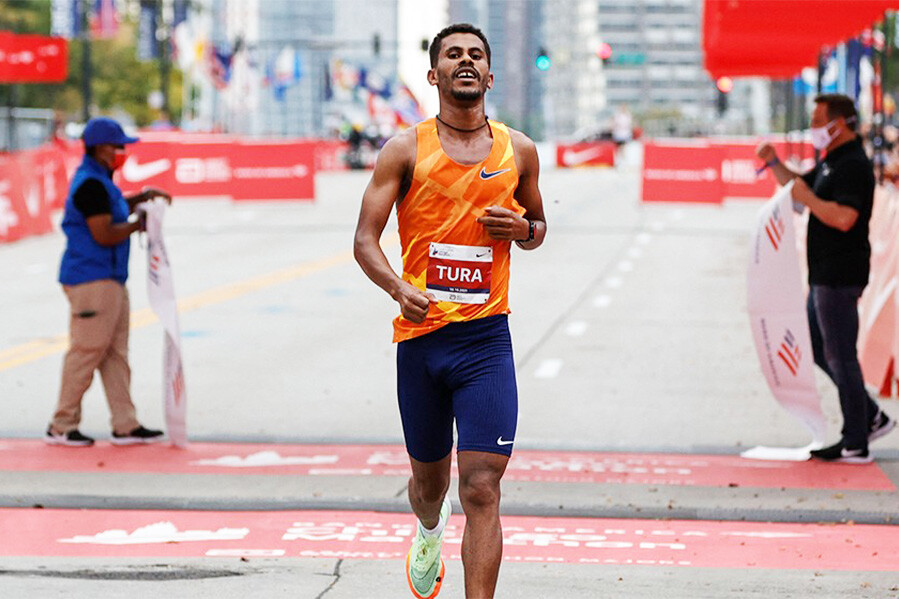
Following their world rankings and personal best times last year, the EAF selected 12 marathon competitors (six men and six women) to compete in the 2023 World Athletics Championships in Budapest. Reigning world champions Tamirat Tola and Gotytom Gebreslase, who won the gold medal in the marathon at the 2022 World Athletics Championships in Oregon, are among them.
Tsegaye Getachew, Chalu Deso, Leul Gebresillassie, Seifu Tura, and Amhed Essa will represent the Ethiopian men’s squad, while Worknish Edessa, Megertu Alemu, Yalemzerf Yehualaw, Tsehaye Gemechu, and Amane Beriso will represent the women’s team.
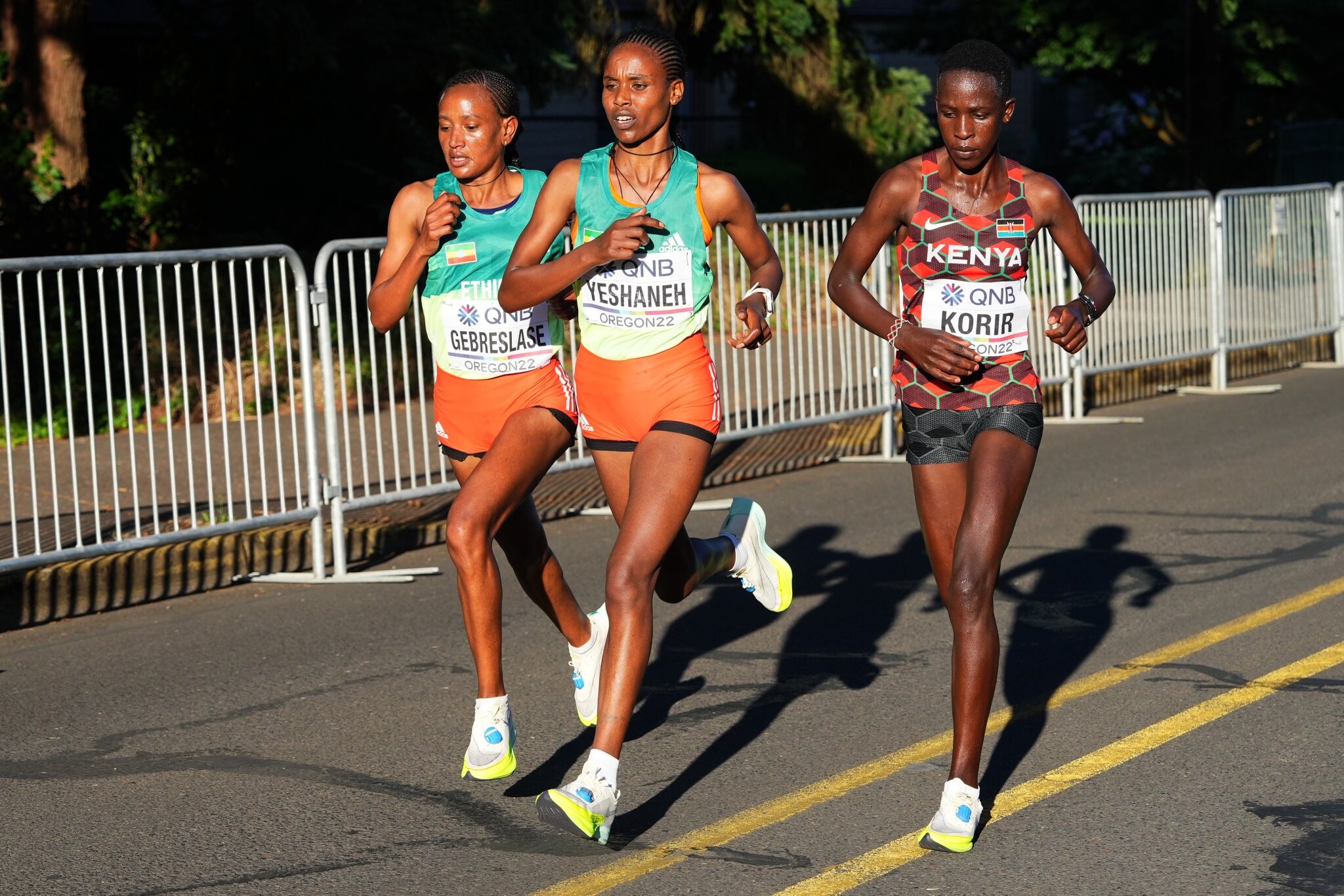
The EAF has announced that all selected athletes will attend a training camp starting June 14, 2023, to begin their usual two-month preparation. The EAF has also appointed two national team coaches to oversee the athletes as they prepare for the competition.
The EAF stated that after the two months of training camps, three athletes will be chosen to join the two defending champions to represent Ethiopia at the World Championships.
EAF Technical Director Asfaw Dagne told The Reporter, “The two months of training will be followed by the selection of the top three athletes. Their health condition and performance after their training in those two months will determine the final selections.”
World Athletics published the qualification standards for the championships, including lists of courses and competitions that comply with the standards. According to the qualification standards, athletes must achieve qualifying performances on a course measured by World Athletics and graded by the Association of International Marathon and Distance Races (AIMS).
Athletes must meet a minimum time of 2:09:40 for men and 2:28:00 for women.
(06/10/2023) Views: 762 ⚡AMPby Dawit Tolesa
World Athletics Championships Budapest 23
From August 19-27, 2023, Budapest will host the world's third largest sporting event, the World Athletics Championships. It is the largest sporting event in the history of Hungary, attended by athletes from more than 200 countries, whose news will reach more than one billion people. Athletics is the foundation of all sports. It represents strength, speed, dexterity and endurance, the...
more...Jakob Ingebrigtsen shattered the two mile world record in Paris
Jakob Ingebrigtsen made history on Friday in Paris, running 7:54.10 in the two mile to break Daniel Komen’s mark that had stood since 1997.
Though the event isn’t frequently run, Komen’s time of 7:58.61 had taken on a mythical quality because of its longevity.
The distance was a perfect combination for Ingebrigtsen who has global gold medals in the 1500m and 5000m.
On Friday, the Norwegian was accompanied by two rabbits from the start and quickly separated himself from the rest of the pack. Ingebrigtsen never wavered from the pace, following the pacers through splits of 2:29.07 for 1000m and 4:56.95 for 2000m.
With 400 meters remaining, Ingebrigtsen only needed a 60-second close to get the record. He had much more to give than that, ripping off a 56-second 400m to obliterate the old mark.
En route, Ingebrigtsen passed 3000m in 7:24.07. That’s the third fastest time in history behind Komen and Hicham El Guerrouj
The race was just the second of Ingebrigtsen’s outdoor campaign. He opened his season with a victory in the Rabat Diamond League in 3:32.59.
Ingebrigtsen also owns the fastest time in history in the indoor 1500m, a 3:30.60 from Lievin.
(06/10/2023) Views: 589 ⚡AMPby Flo Track
Former Champions Highlight Strong 2023 Grandma’s Marathon Field
Several former champions will return to this year’s Grandma’s Marathon, highlighting a field that’s expected to include some of the best American distance runners ahead of next year’s U.S. Olympic Trials.
GRANDMA’S MARATHON
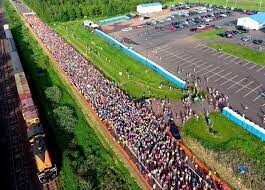
Defending champion and event record holder Dominic Ondoro returns on the men’s side, that after winning his second Grandma’s Marathon last summer. He’s joined by countrymen and former champions themselves, Milton Rotich and Elisha Barno.
Ondoro, who broke Dick Beardsley’s longtime event record with his winning run in 2014, will be trying to become just the second man to win three or more Grandma’s Marathons. The only to have done it so far is Barno, who won four straight titles from 2015-18.
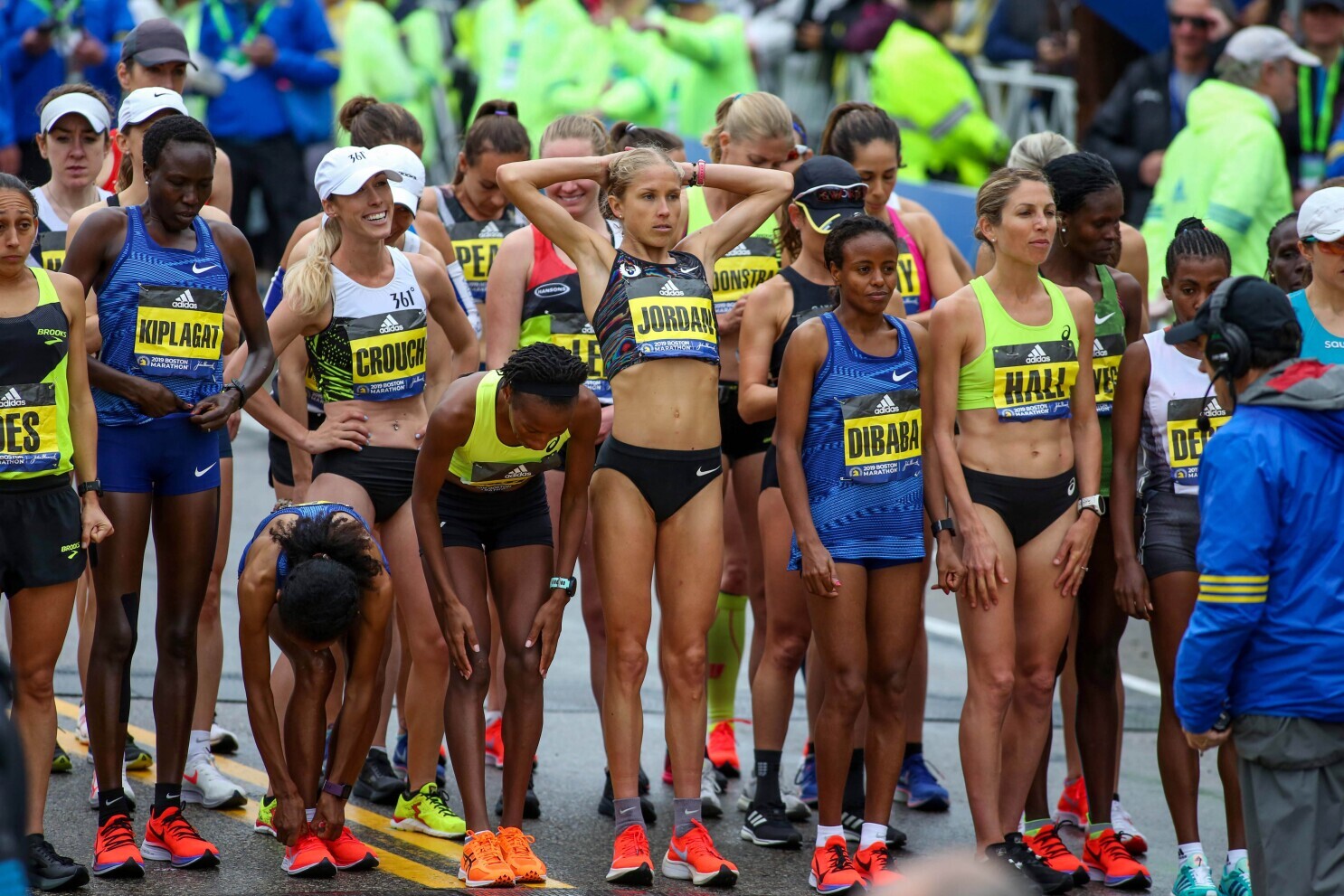
NOTE: Elisha Barno will be officially inducted on Friday, June 16 into the Grandma’s Marathon Hall of Fame as part of the Class of 2023, making him the first athlete inducted since 2017.
Kevin Lynch not only leads a pack of American men aiming to qualify for the U.S. Olympic Trials, but is also hoping to become the first American men’s winner of Grandma’s Marathon since Chris Raabe did it in 2009.
Minnesotan and fan favorite Dakotah Lindwurm returns on the women’s side as a favorite to win her third-straight Grandma’s Marathon, which would make her the third woman to accomplish that feat.
New Zealand’s Lorraine Moller won three straight women’s races from 1979-81, and American Mary Akor then did it from 2007-09.
Lindwurm’s personal record of 2:25:01, which she ran in last year’s winning effort at Grandma’s Marathon, is more than four minutes better than any other woman in the field, though Gabriella Rooker is back this year after finishing 10th place last summer in her Duluth debut.
GARRY BJORKLUND HALF MARATHON
Neither the men’s or the women’s defending champion is back in the Garry Bjorklund Half Marathon, but 2016 winner Macdonard Ondara is back this year for his fourth run in Duluth. He will lead a strong group of returners on the men’s side, with each of the top five runners having been here before.
Garry Bjorklund Half Marathon rookie Lydia Mathathi leads things on the women’s side, and the Kenyan’s personal best is a time that, if repeated, would break the storied mark of Duluth native Kara Goucher. Followed by four Americans who are also making their debut in Duluth, Mathathi would be the first Kenyan to win this race since Monicah Ngige in 2018.
(06/10/2023) Views: 509 ⚡AMPby Running USA
Grandmas Marathon
Grandma's Marathon began in 1977 when a group of local runners planned a scenic road race from Two Harbors to Duluth, Minnesota. There were just 150 participants that year, but organizers knew they had discovered something special. The marathon received its name from the Duluth-based group of famous Grandma's restaurants, its first major sponsor. The level of sponsorship with the...
more...How This Guy Lost 300 Pounds and Became a Half-Marathoner
Finding a community through running keeps him going.
I’ve been a yo-yo dieter for much of my life. Except where some people lose ten or twenty pounds, then gain it back, I’ve lost hundreds of pounds at a time. And then I’d gain it back. Not slowly, either. It came back fast, for all kinds of reasons. At one point I was 370 pounds, and over a year got down to 180. I’m 5’10”, so that’s a good weight for me. But I gained it all back. That happened multiple times.

So in January of 2019 I was 480 pounds. I couldn't walk more than five or ten feet without needing to sit down. That's how bad it was. And I travel a lot for work, meeting customers, so here I am this 480-pound guy who can barely move more than 10 feet, but I’m carrying my luggage and my laptop and looking like a mess.
My inspiration to change
I was struggling to walk through the Raleigh-Durham airport and everything just kind of hit me all at once. I knew I felt terrible, and I knew I looked terrible. Clients had watched me struggle to climb a set of stairs. We’d recently gotten new badge photos and I thought it was the worst picture I’d ever seen of myself. My relationships were strained because I was depressed about my size.
And I’m an alcoholic. May 30, 2019, I had my last drink. I was someone who would black out and not remember what I did while I was drunk, plus I hated the way I felt the next day. Alongside losing weight, I decided I needed drinking out of my life.
I’m not going to make it sound easy. I had some really sick days as my body responded to going sober. And it’s a challenge. On a whiteboard in my house I have a tally of how many days I’ve been sober, how many days I’ve not smoked, how many I haven’t gambled. That board motivates me.
I had started using the Lose It!! app and counting my calories. I cut down my calories quite a bit because I couldn’t exercise much until I lost weight. Then I got so I could go to a gym that had just opened around the corner from me. I really got into spin classes and doing a lot of cardio. And once I quit drinking, it just supercharged my weight loss.
The first month of not drinking, I dropped about 45 pounds.
Then I got diagnosed with multiple sclerosis. I’d had neurological issues before, but it had seemed a one-off thing. Once I knew it was multiple sclerosis, I realized the stakes for keeping the weight off had just been raised.
Friends inspired me, too
I had a couple of people who really inspired me to start running. One, in Raleigh, is probably one of the healthiest people I know, and swears by running half-marathons. She really sold me on the idea. Another is my cousin Ian, who runs marathons. He told me about the sense of community he gets from it, and that really appealed to me, too.
I dove right in. It was during the pandemic, so my earliest races were all virtual competitions. My first in-person race was a half-marathon. And I’ve been doing it ever since.
I’m 5’10”, and at my heaviest I was at 480 pounds. Since then I’ve dropped 312 pounds, then put on about 20 pounds of muscle, so I’m at 188 these days. I still keep my count of days sober, without a drink, and without gambling. I recently did the Brooklyn half-marathon, with a time of 2:44:48.
All of these numbers and stats help me see my progress, but a big part of what keeps me running is feeling like I’m part of something. There’s such an endorphin rush from going out there and running with other people, knowing I’m doing these things for my health. Ultimately, the numbers don’t matter as much as the feeling of support and knowing I’m not alone. I never could have done this alone, even if I had to be the one to help myself first.
That’s what I tell people who are looking to get into running. Just getting to the starting line is a victory. You’re not going out there to be the fastest person. If you lined up to run a race, you've already won. You're proving to yourself just how much you’re capable of doing. Thinking that way, and being honest with myself, is what keeps me going every day.
(06/10/2023) Views: 353 ⚡AMPby Men’s Health
Steph Catudal shares how ultrarunning husband's terrifying illness sparked transformation
Steph Catudal felt her world unravel in 2020 when her husband, famed U.S. ultramarathoner Tommy Rivers Puzey (a.k.a. Tommy Rivs), was diagnosed with a rare form of lung cancer that put him into a medically induced coma for 84 days. The crisis forced Catudal, who was born and raised in Montreal, to face not only an uncertain future, but also pent-up anger and unprocessed grief from her own past.
The author explores the heights and depths of her years-long journey to self-acceptance in Everything All At Once , which comes out May 30. From the tragedy of losing her father to cancer to her supporting Puzey on his road to remission and his being declared free of the disease, the memoir shares lessons Catudal says required time and patience to fully grasp.

“I started writing this book about 10 years ago actually, long before Rivs was diagnosed with cancer. I wanted to tell the story of my adolescent grief of losing my father—it was a story that affected me so deeply and throughout my life,” says Catudal. “I wanted to connect to other people who similarly experienced grief. But it never felt finished. The book never felt done even though I had typed the last words, so I kind of left it on the back burner.”
“When Rivs got sick, I went through an entire self-transformation, and I realized part of the reason why my book didn’t feel finished was because my healing journey still wasn’t finished, and I hadn’t learned all the lessons that I needed to, that I ended up learning through Rivs’ illness. When he was sick, I wrote a lot and posted my writing on social media, and what I wrote resonated with a lot of people and it made me feel a lot less lonely during a lonely time–that human connection in a really isolated time in my life. So I think I wrote the book to further that connection, to broaden the network of those who have experienced grief, which everyone has experienced in life, no matter what the situation is.”
Catudal, who lives with Puzey and their three daughters, says that while writing the memoir was cathartic, she hopes the book can be an aid to others as they navigate their own unique challenges.
“Mostly I hope that it helps people learn self-acceptance,” she says. “It was a long road for me to accept myself. It’s important to accept all of who you are—the brokenness, the anger and also the gratitude and the joy—and just know that you’re OK wherever you’re at.”
“Another hope I have for what people take from this is that no matter what we’re going through, there is love all around. It’s woven into every human experience, and you just have to look to see it. Even if you feel like you’re in the depths of loneliness, there is always love there.”
She says sharing her story with readers has given her a new opportunity to practise acceptance.
“It’s both really exciting and, in a way, nerve-racking to put so much of your life, your feelings and your introspection into a book that people can take and they could either love it or they could hate it. I just have to be OK with letting it go out into the world.”
The publication of Catudal’s memoir also comes with the satisfaction of seeing a long, gruelling challenge to the very end—a feeling her ultrarunning husband knows very well.
“Rivs tells me that this is my own ultramarathon—the daily deposits of writing a page if I could, whenever I had the time,” says Catudal.
“I did it through newborn babies and grad school and sleepless nights, so there’s definitely a sense of pride and accomplishment.”
Look for our review of Everything All At Once in the July/August 2023 issue of Canadian Running.
(06/10/2023) Views: 882 ⚡AMPby Running Magazine


